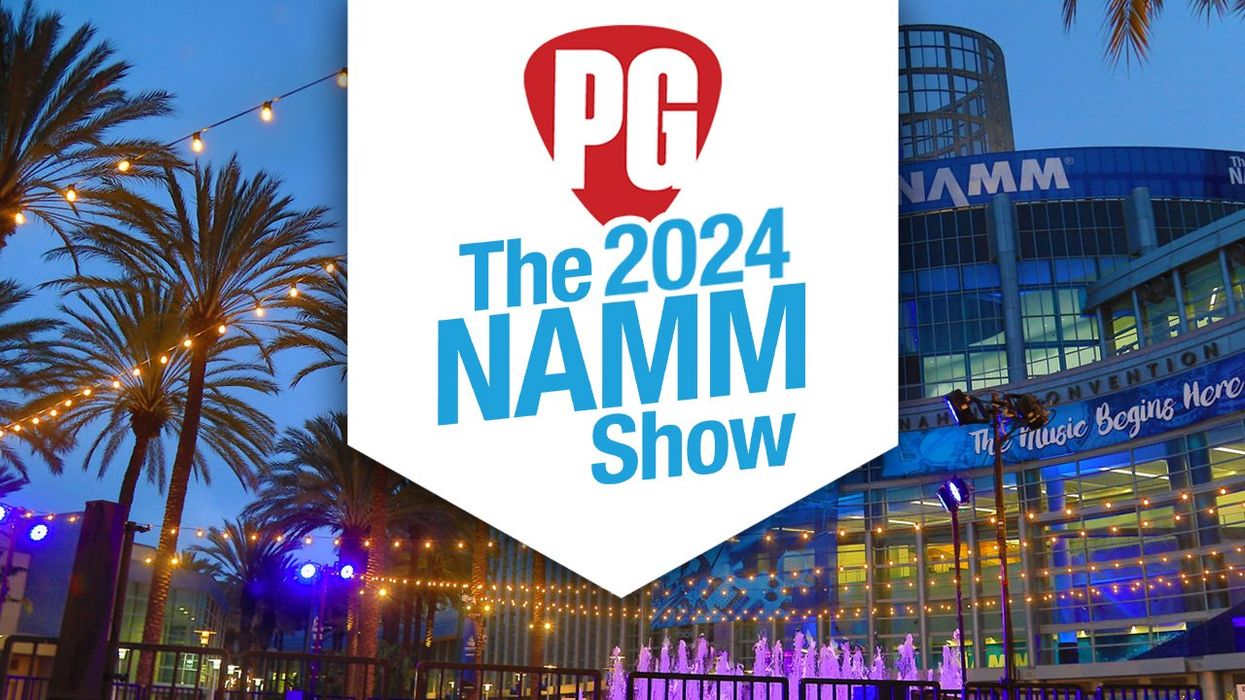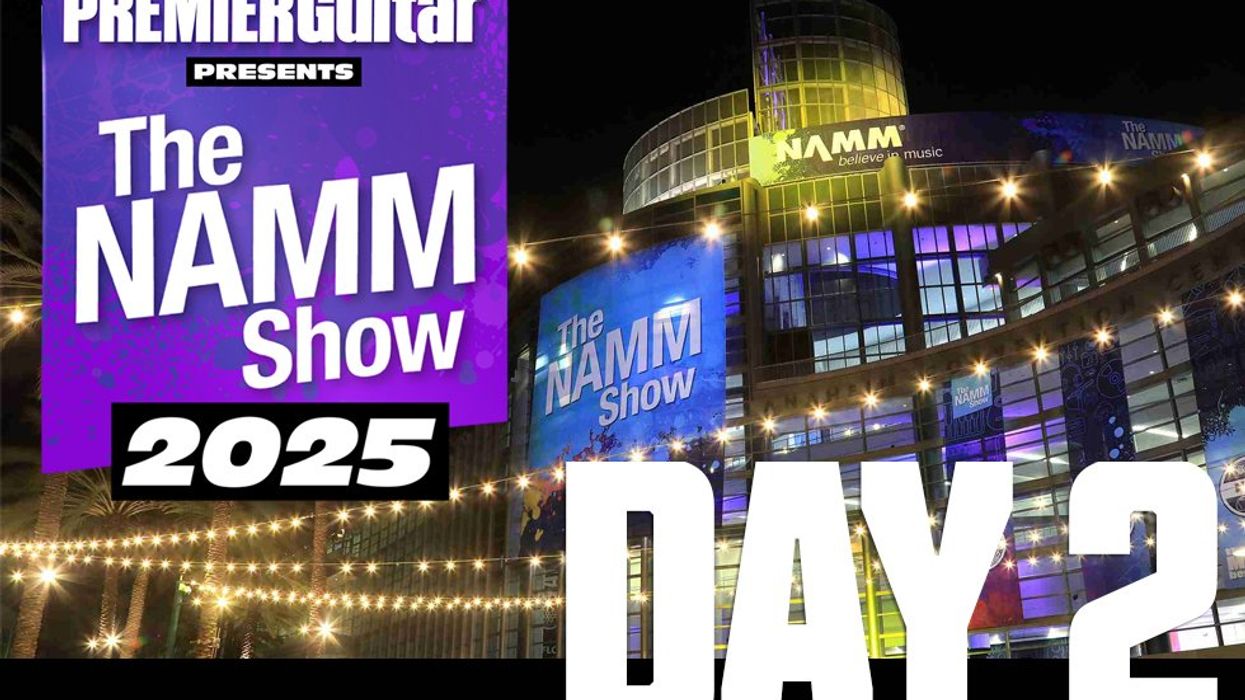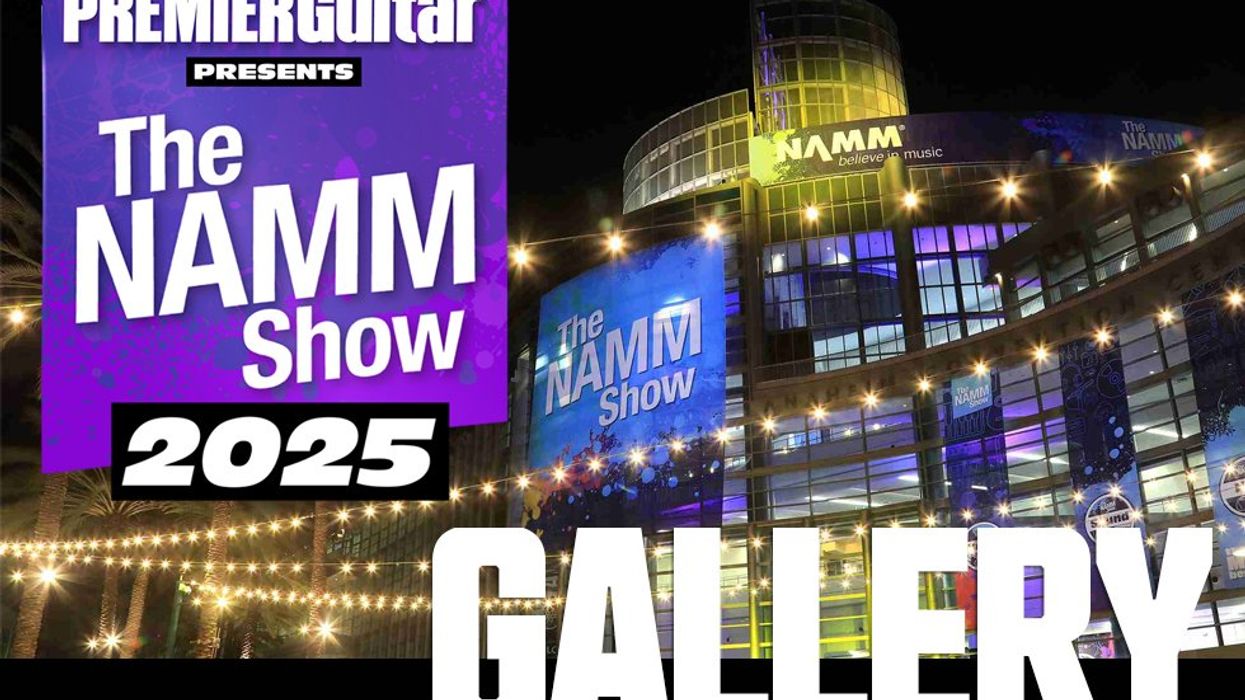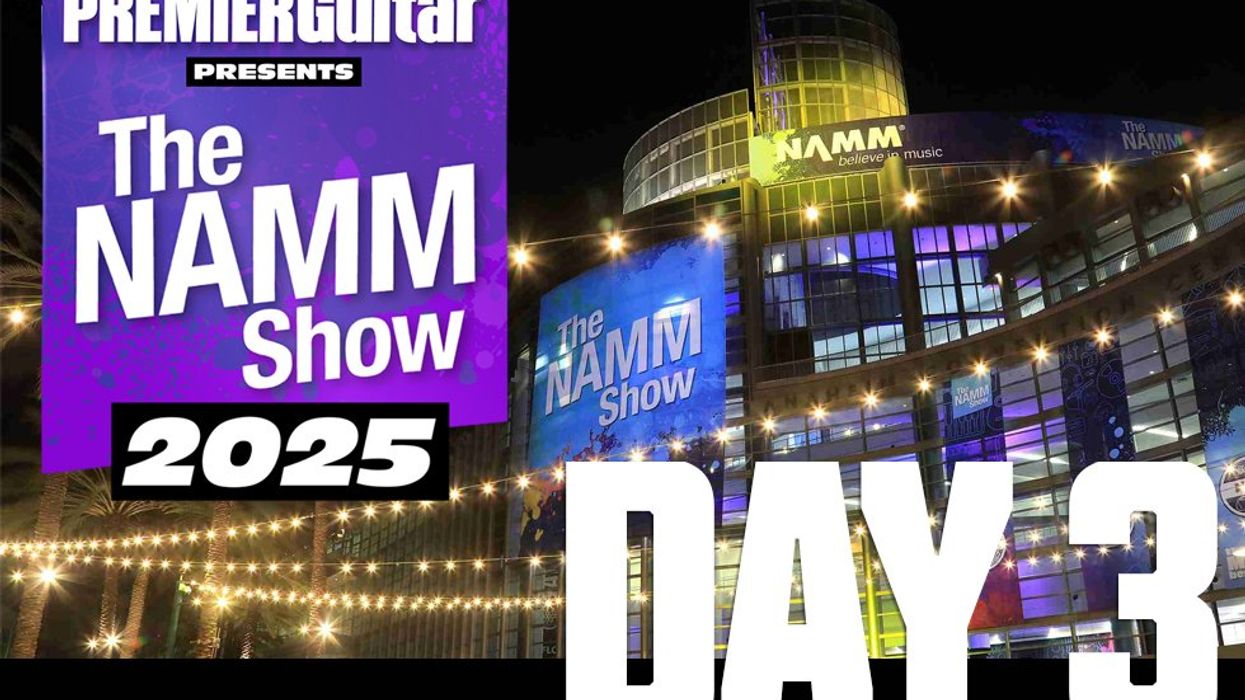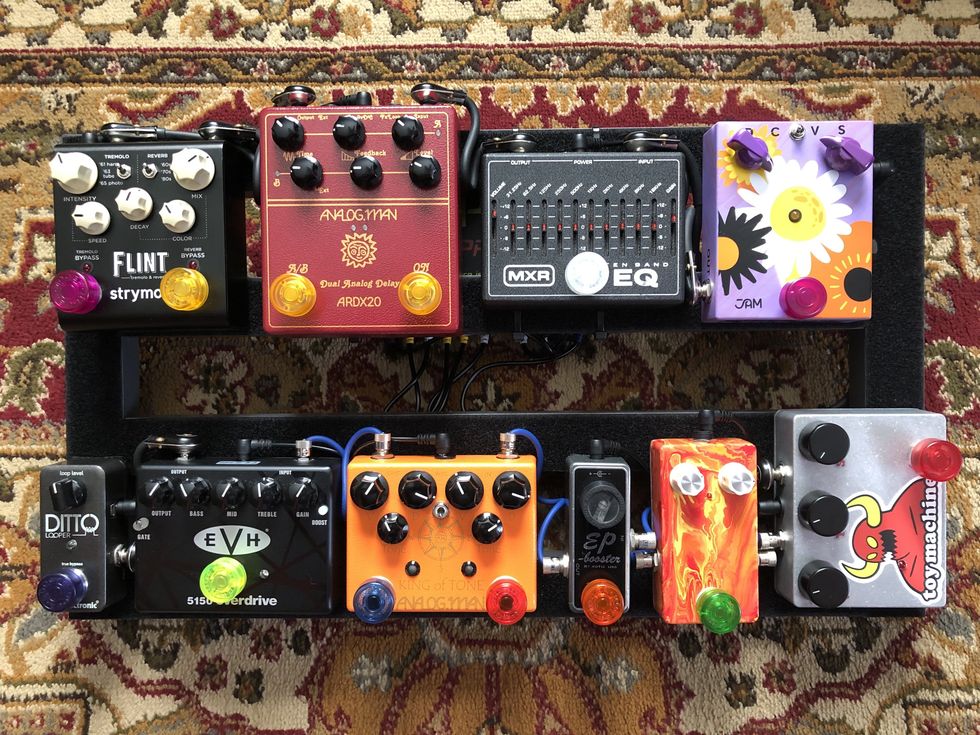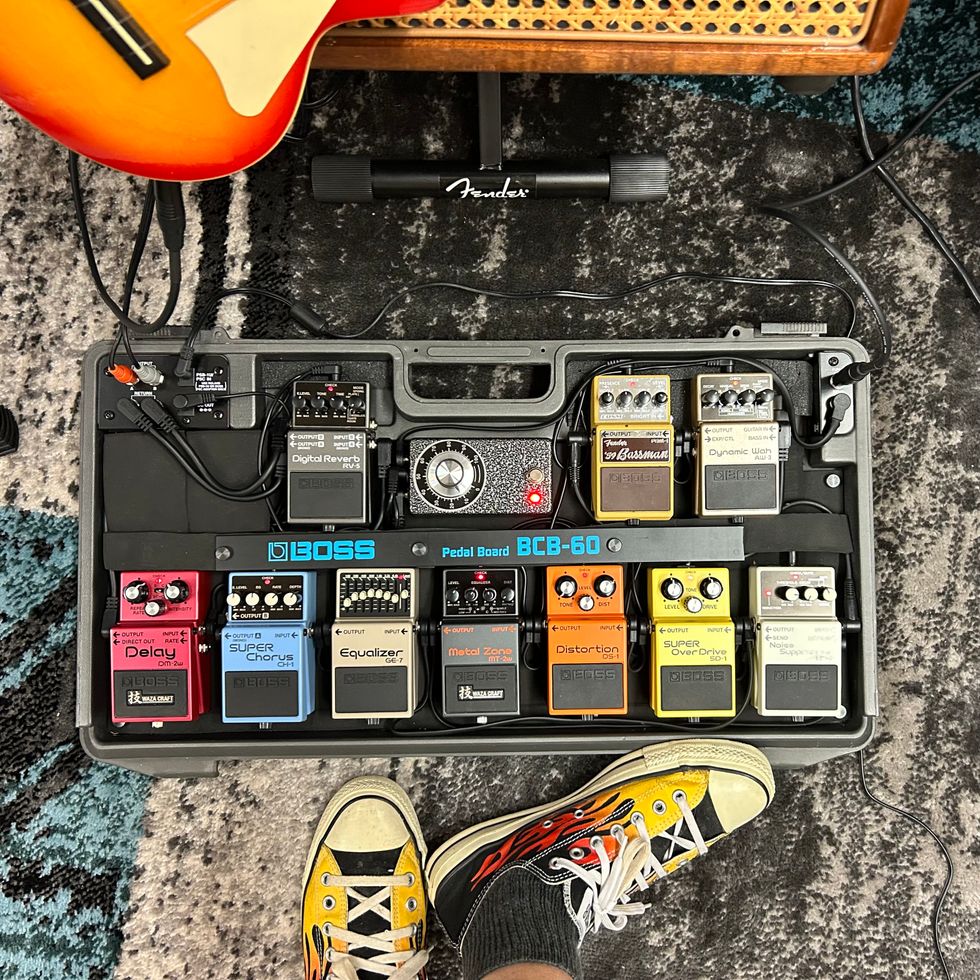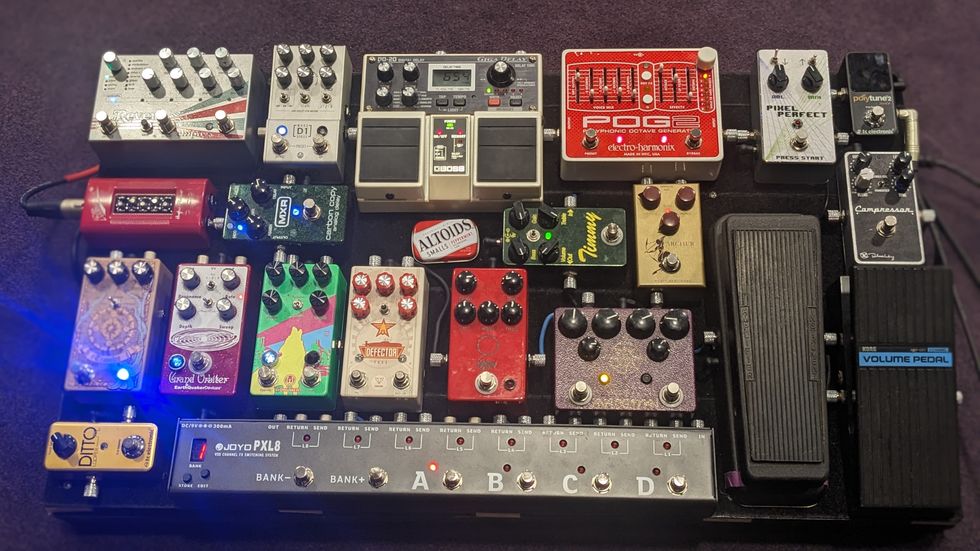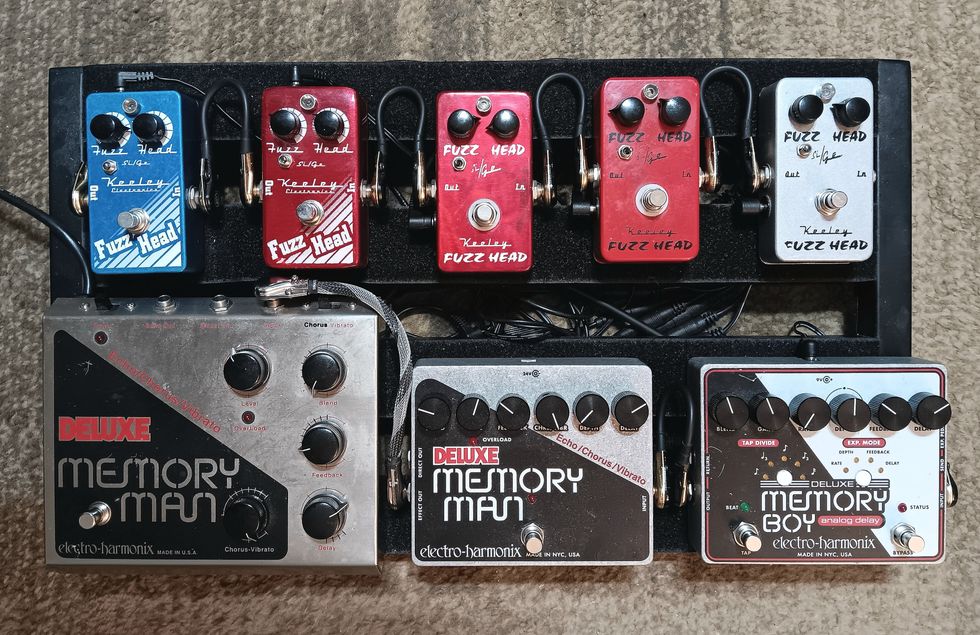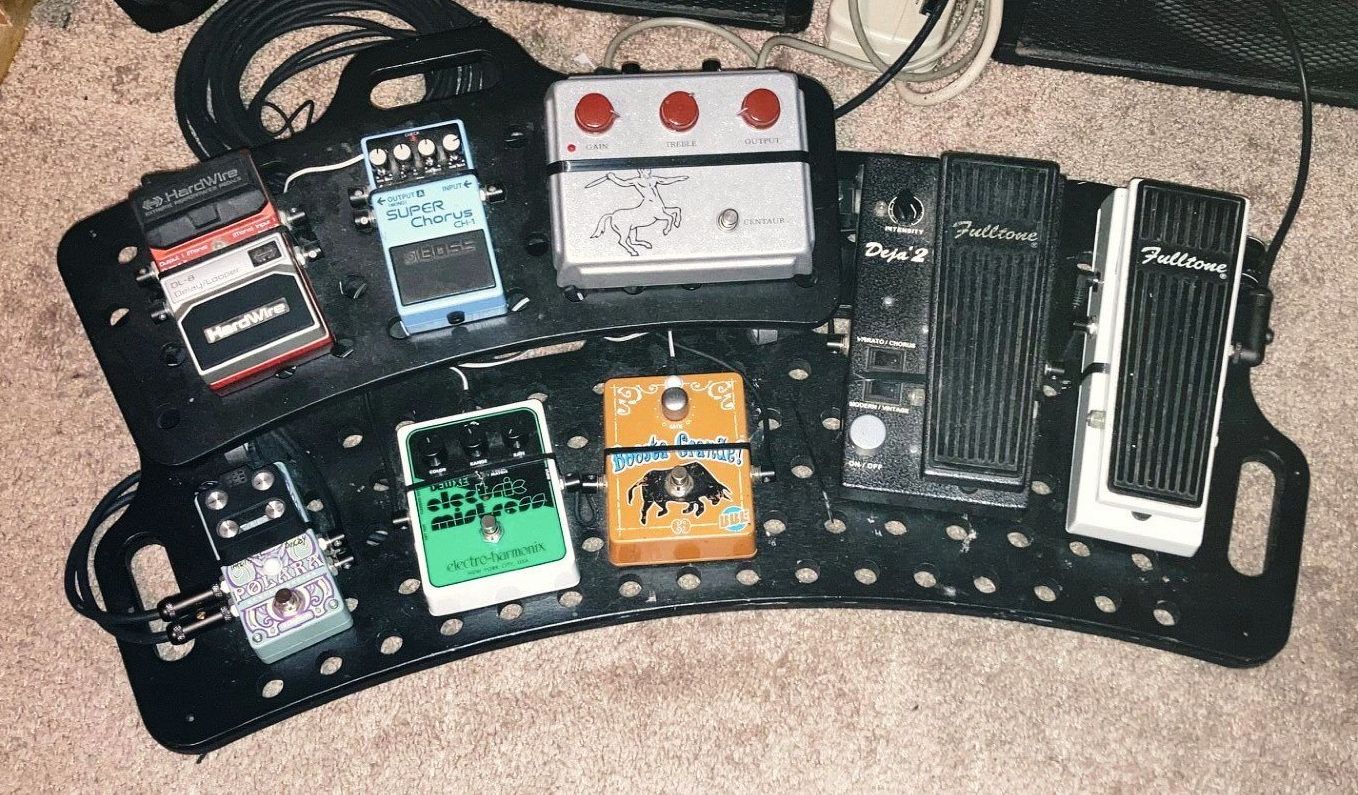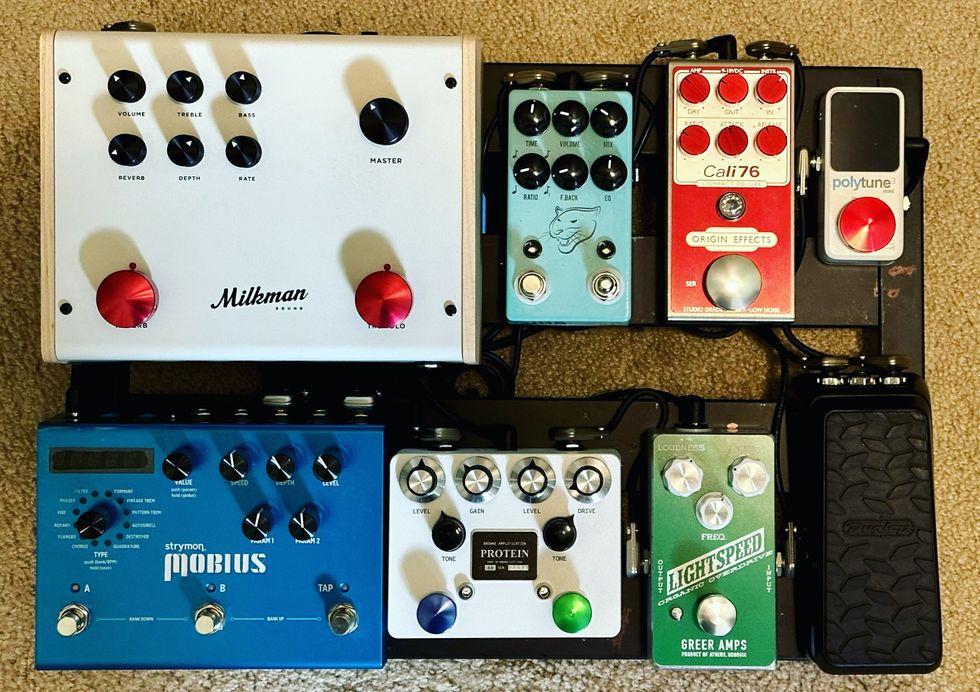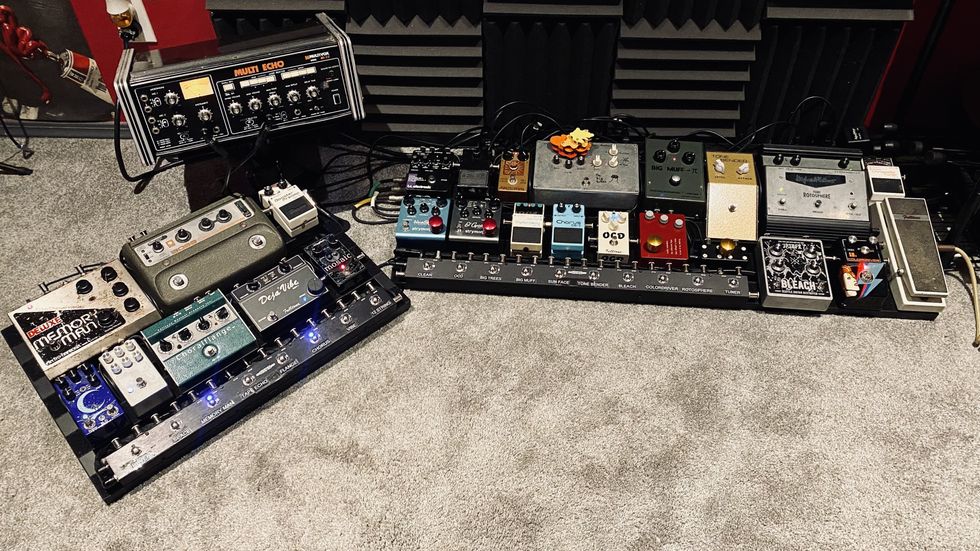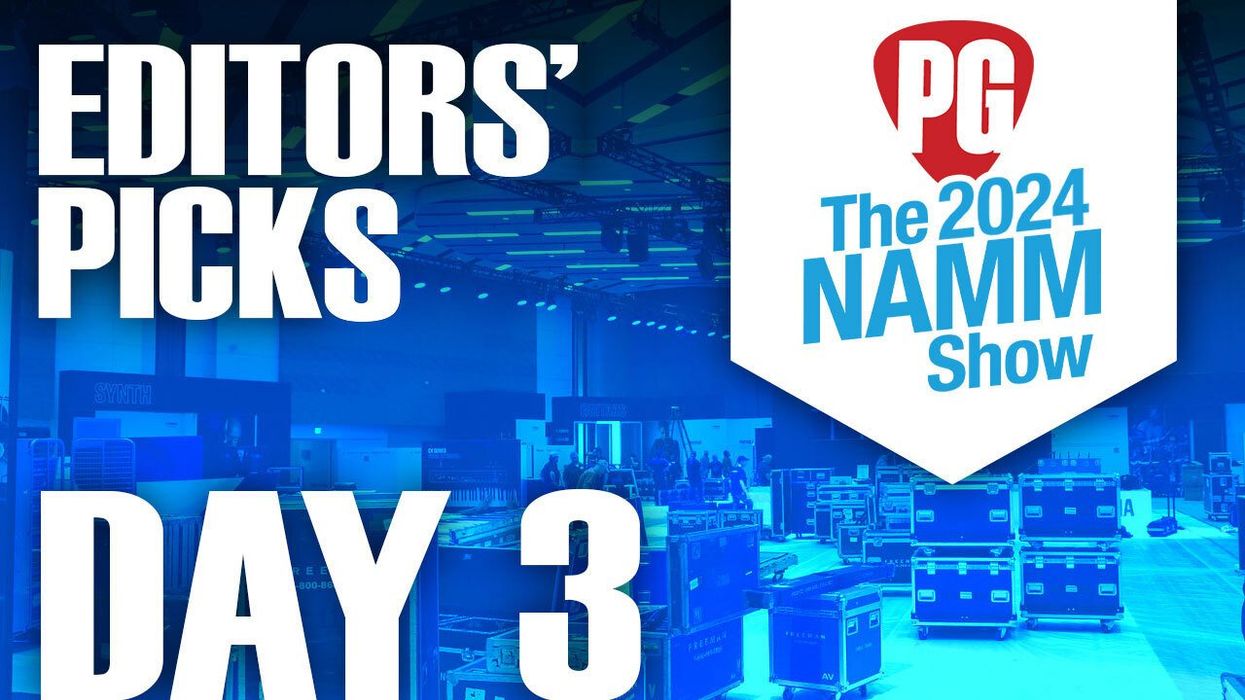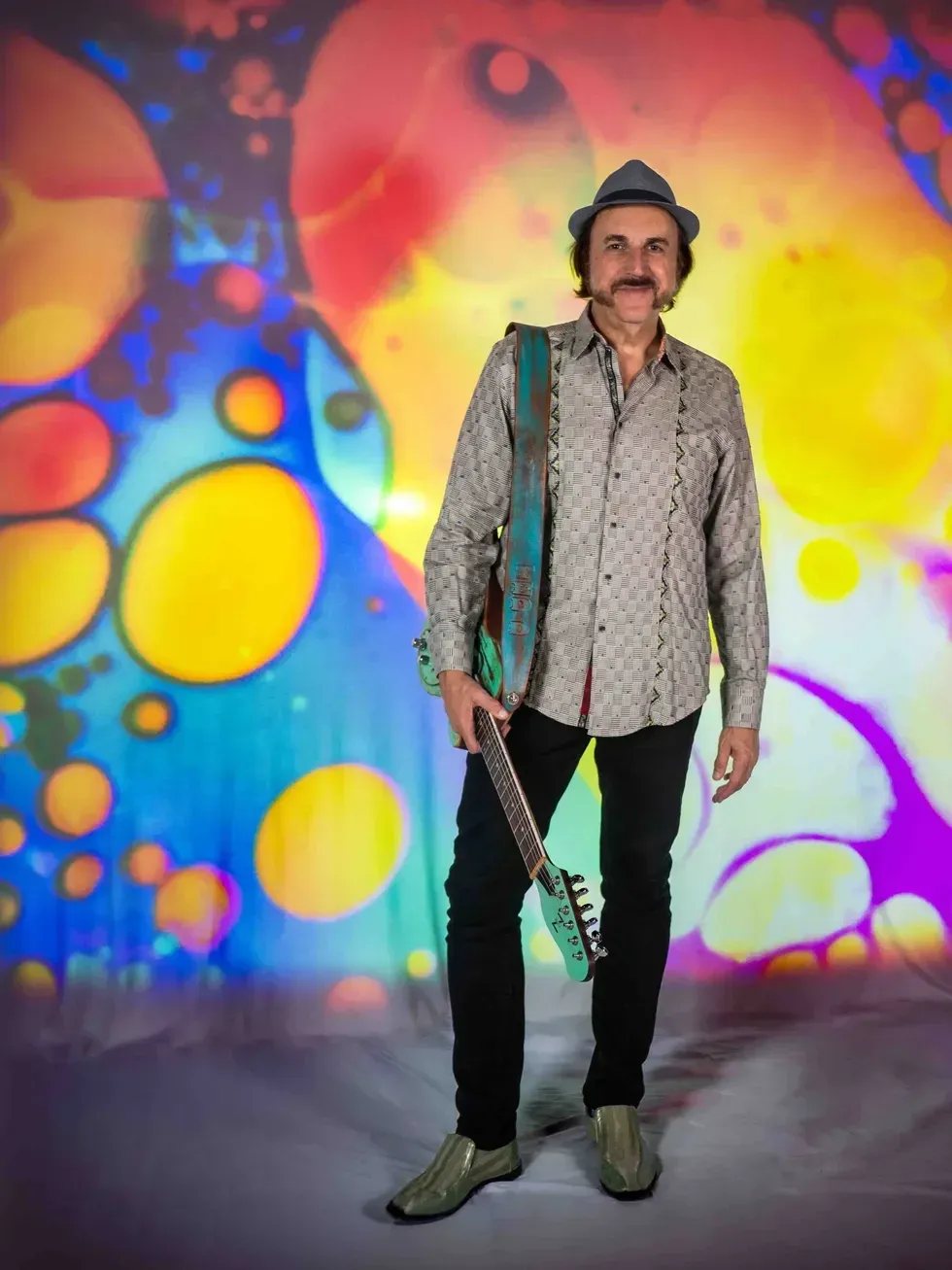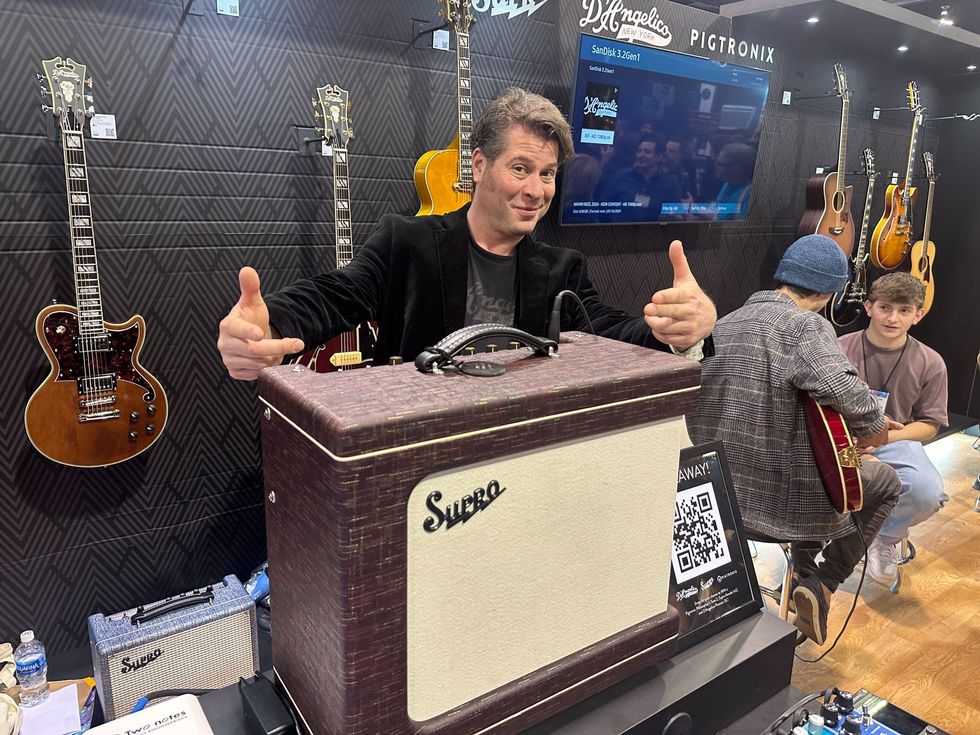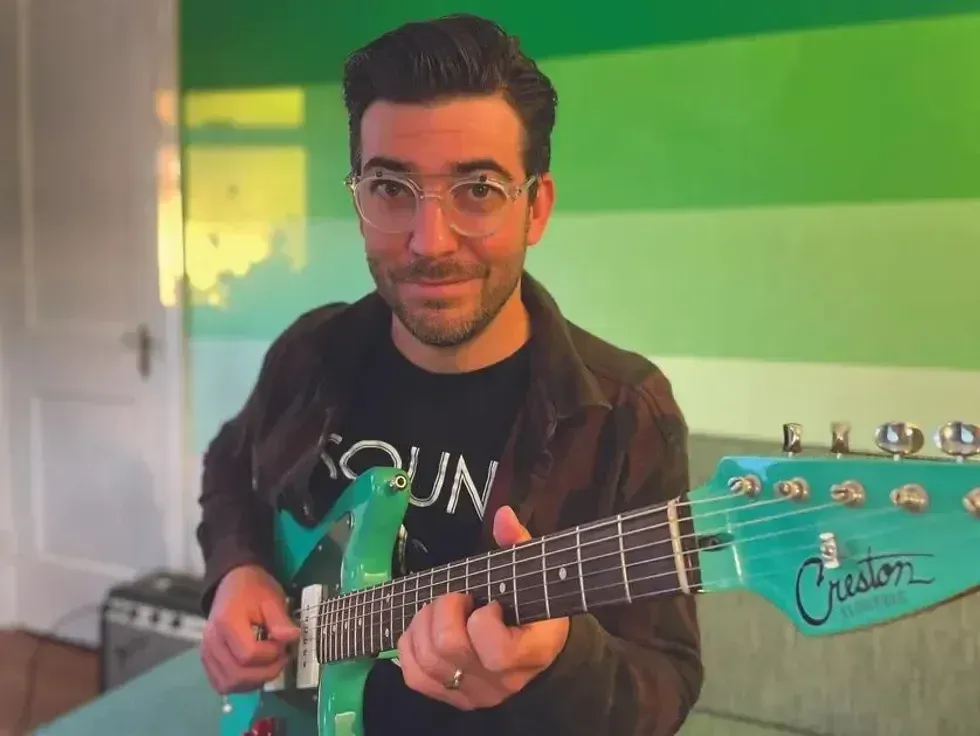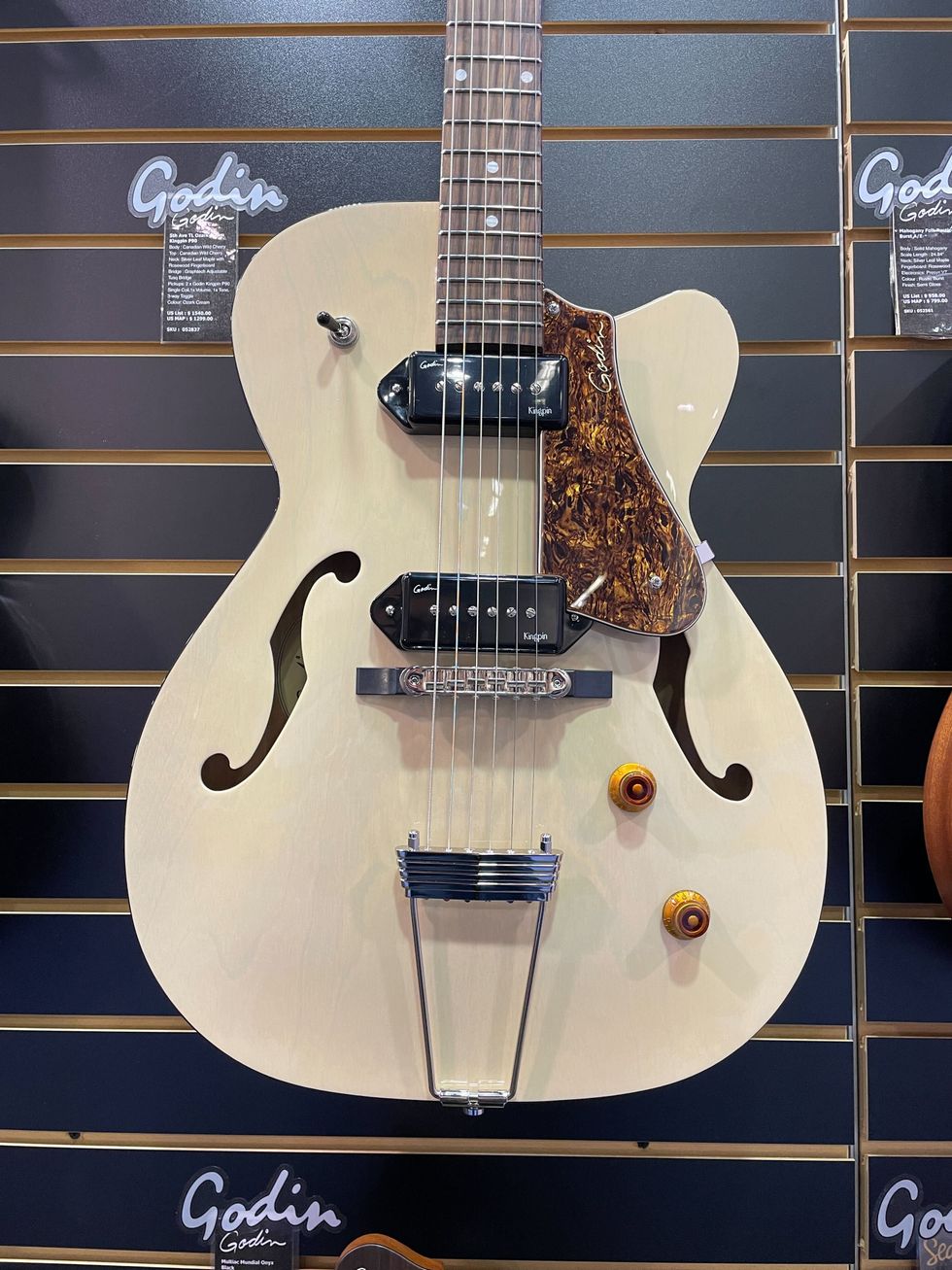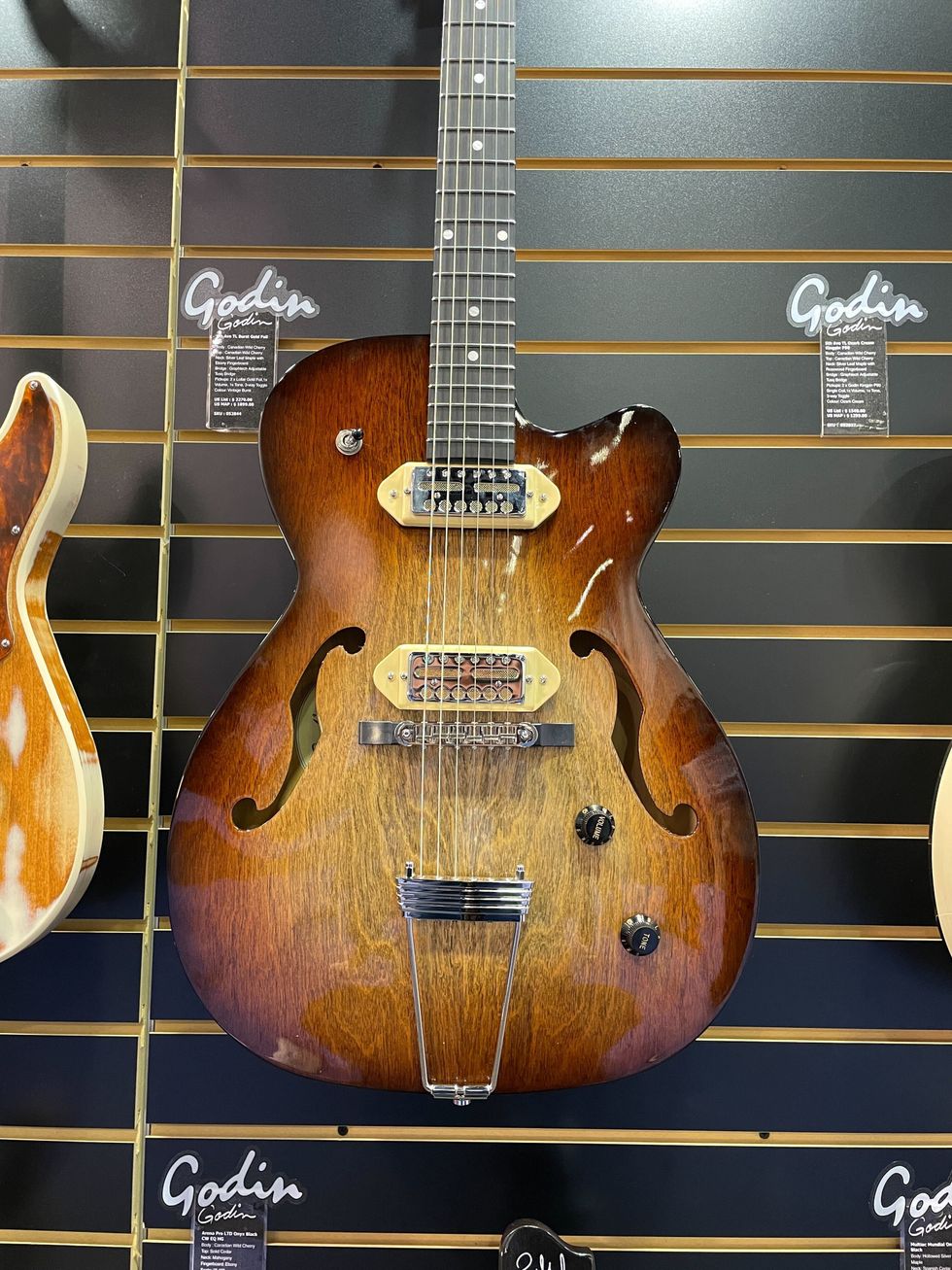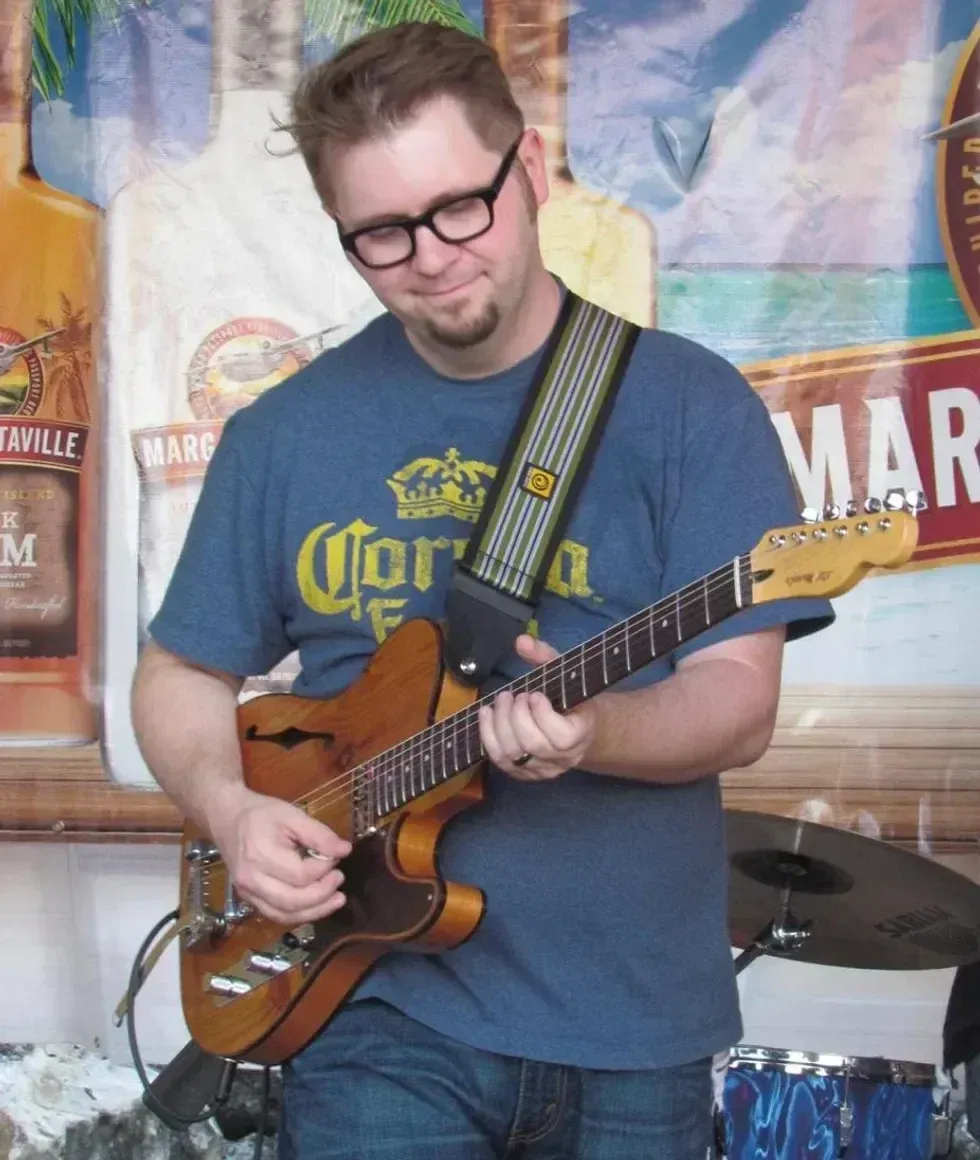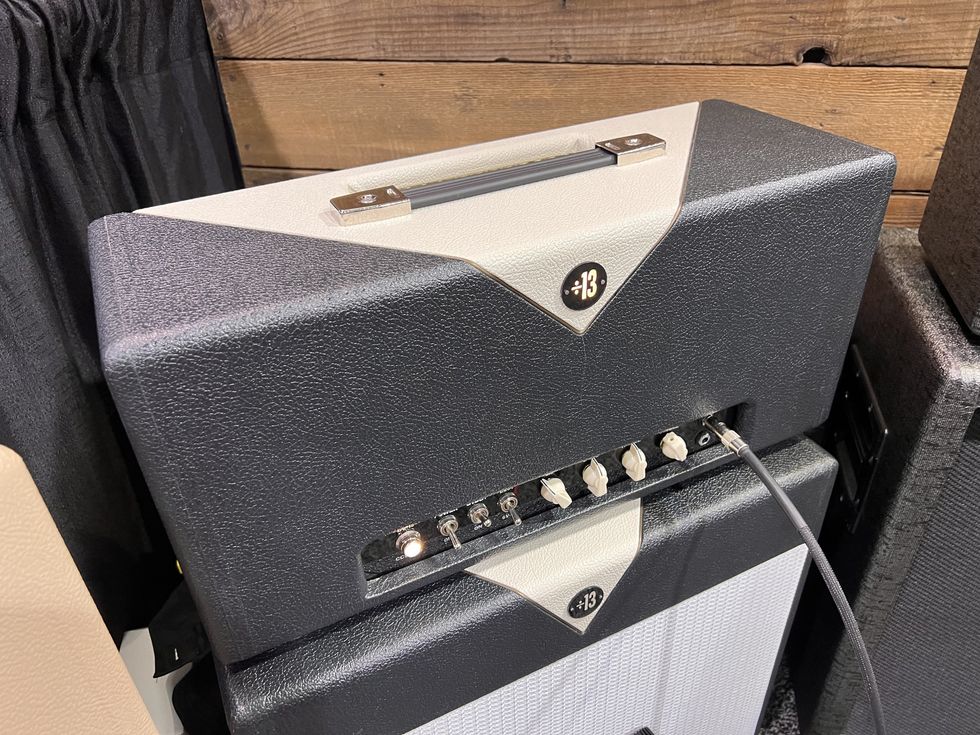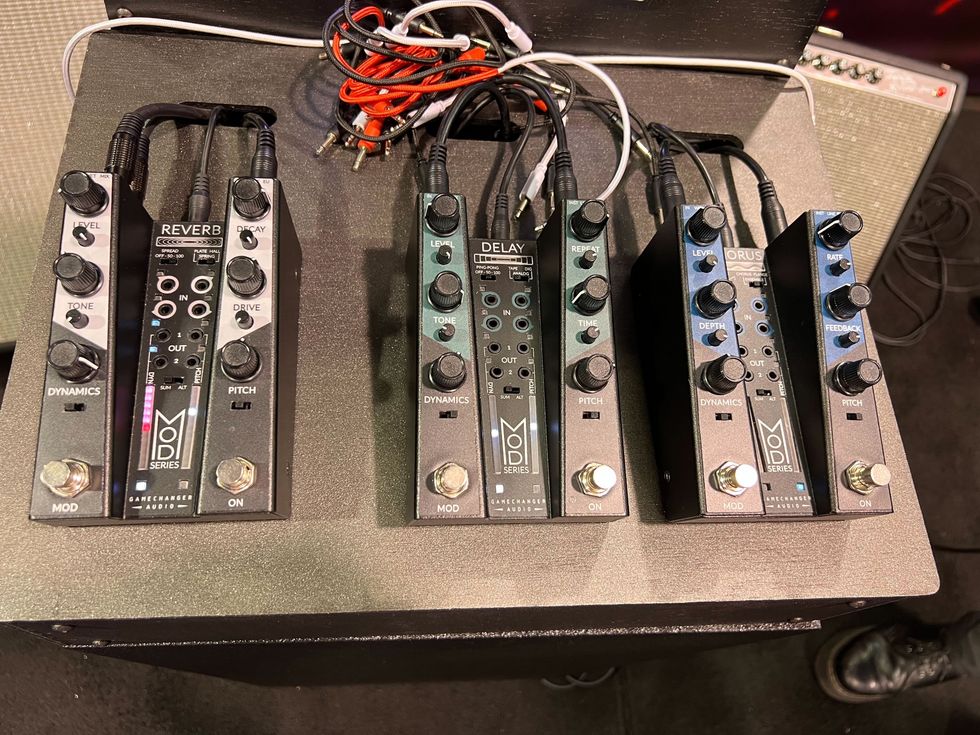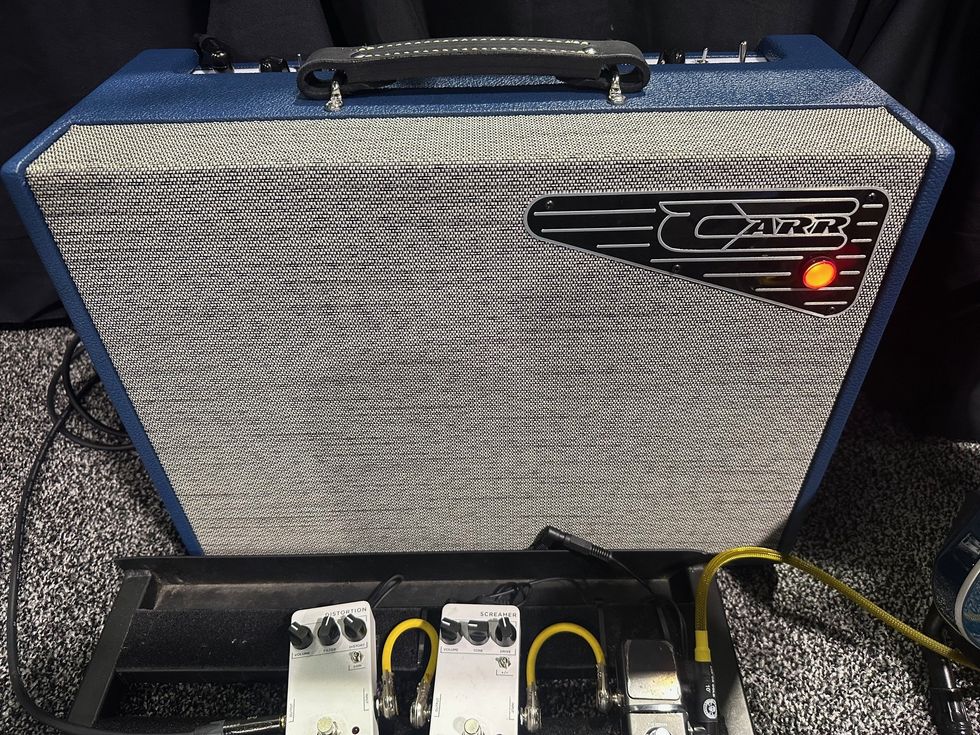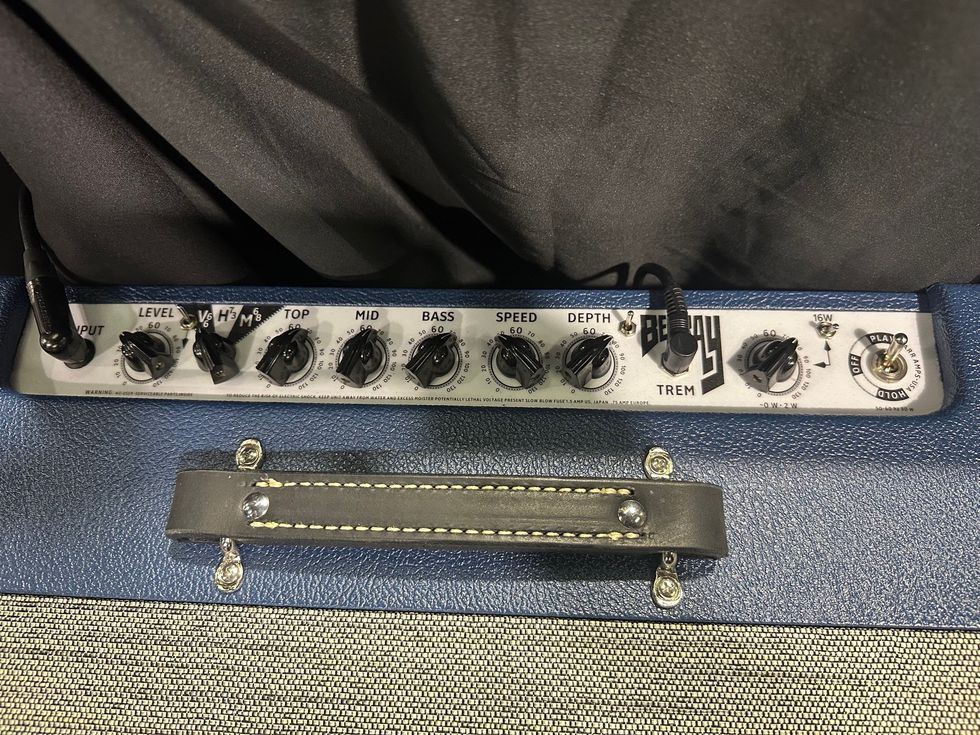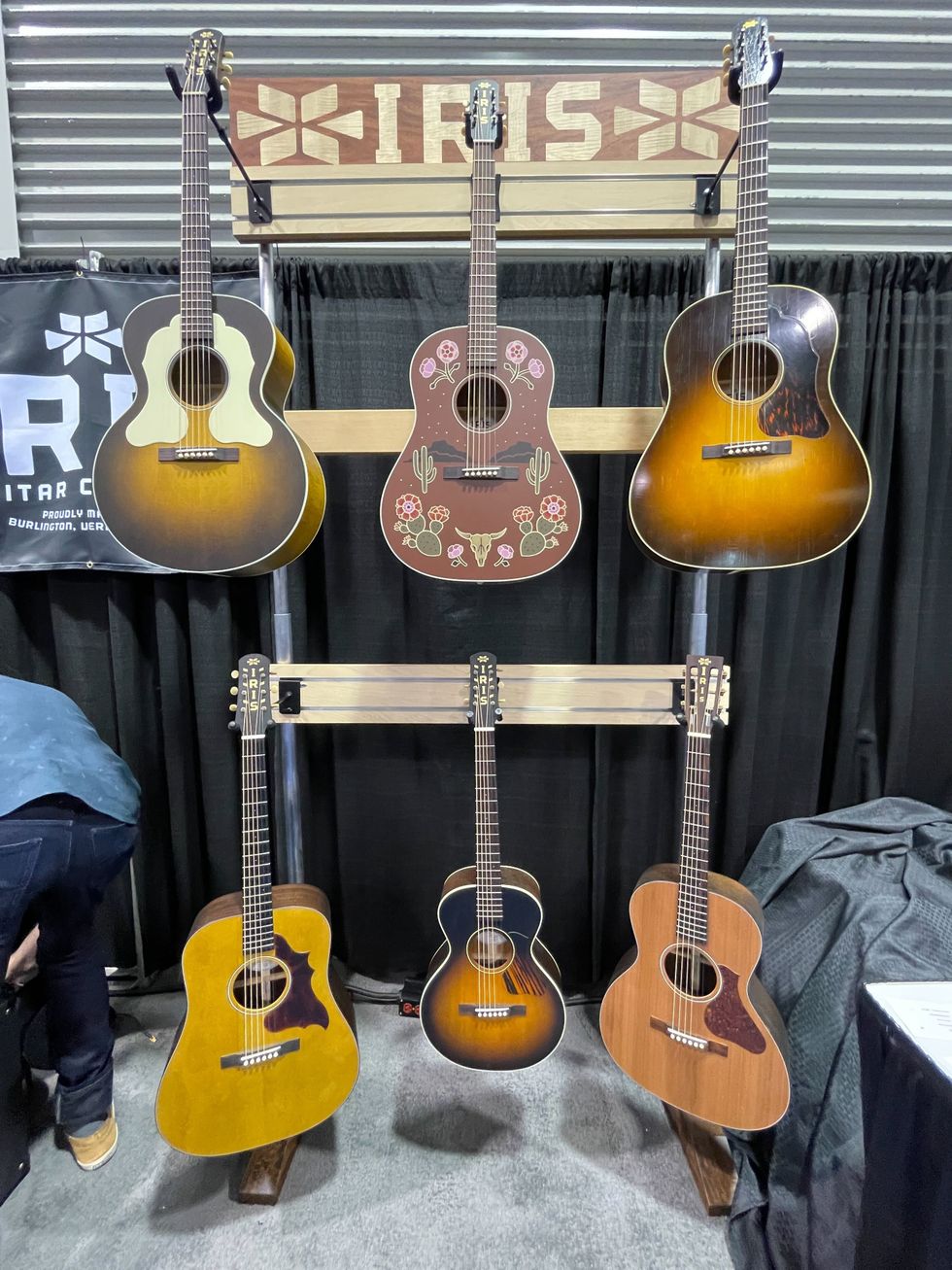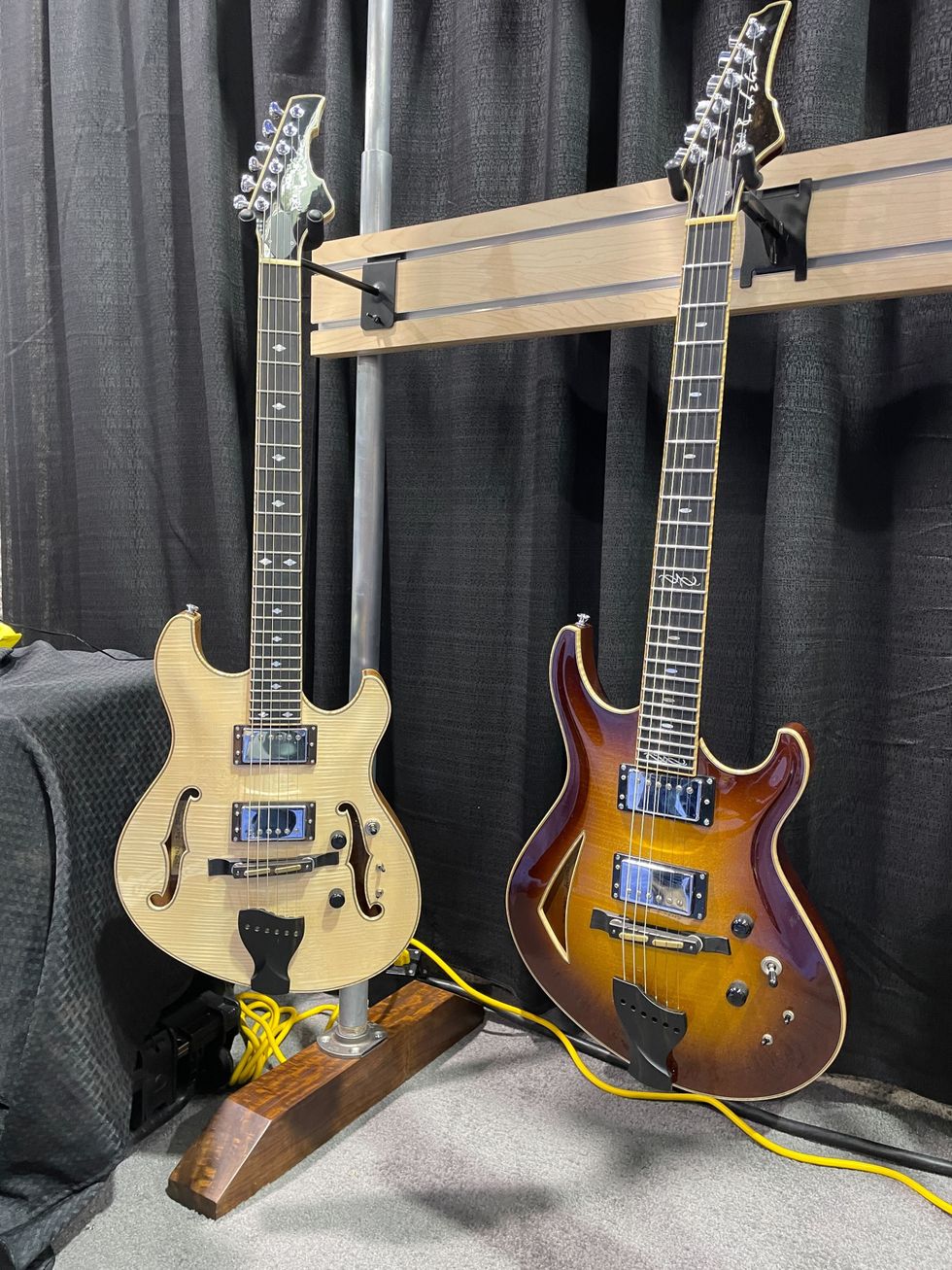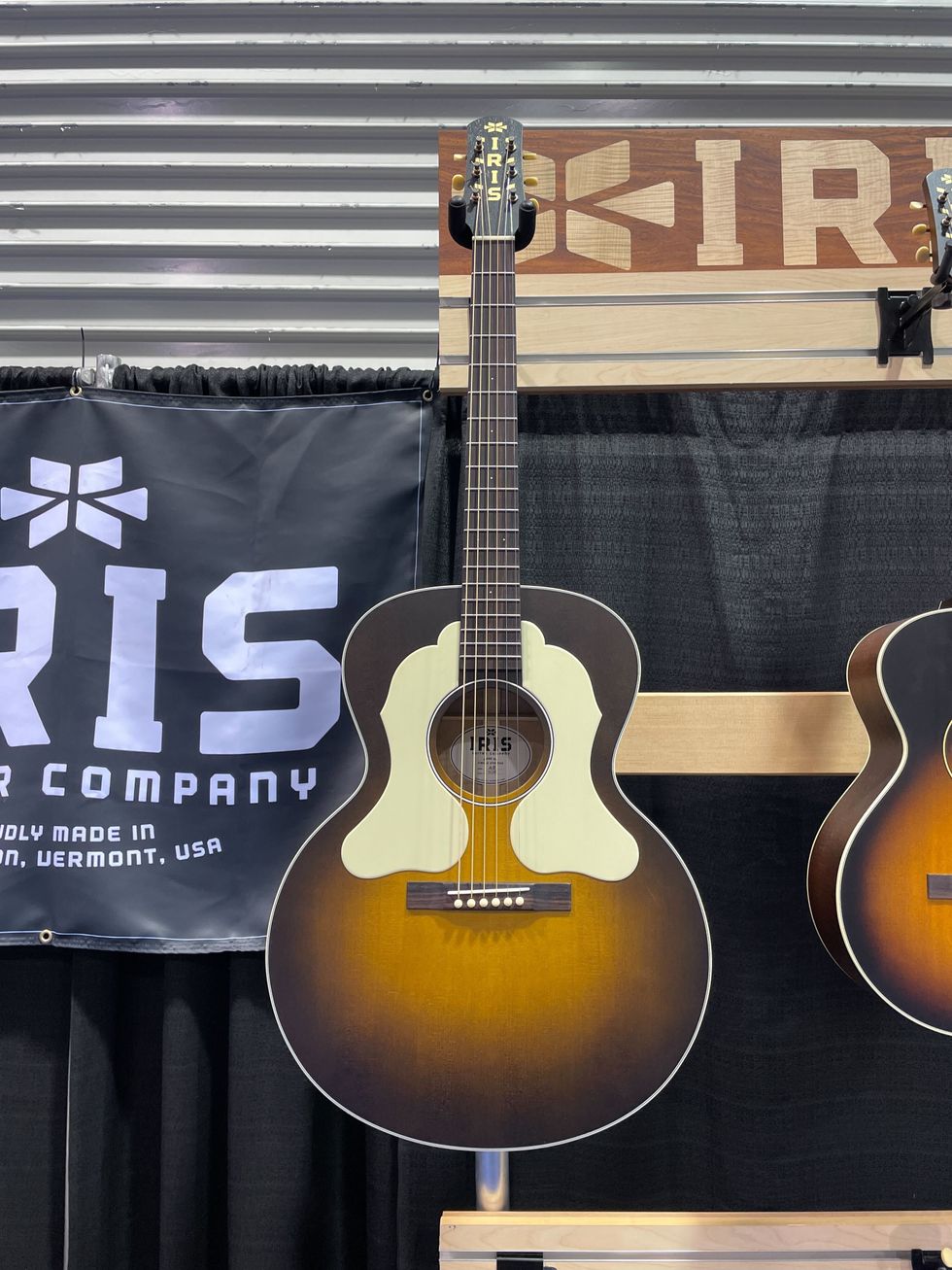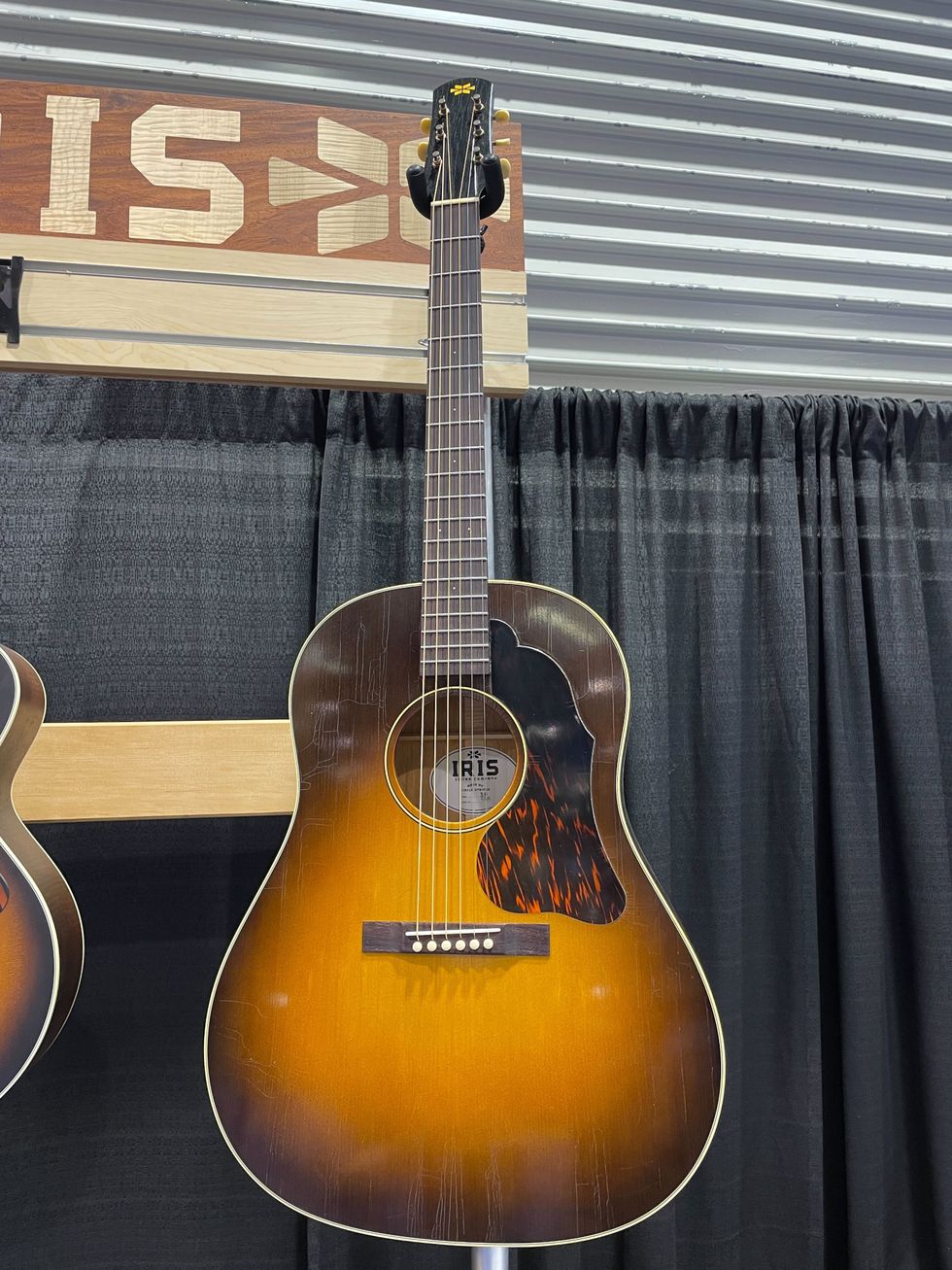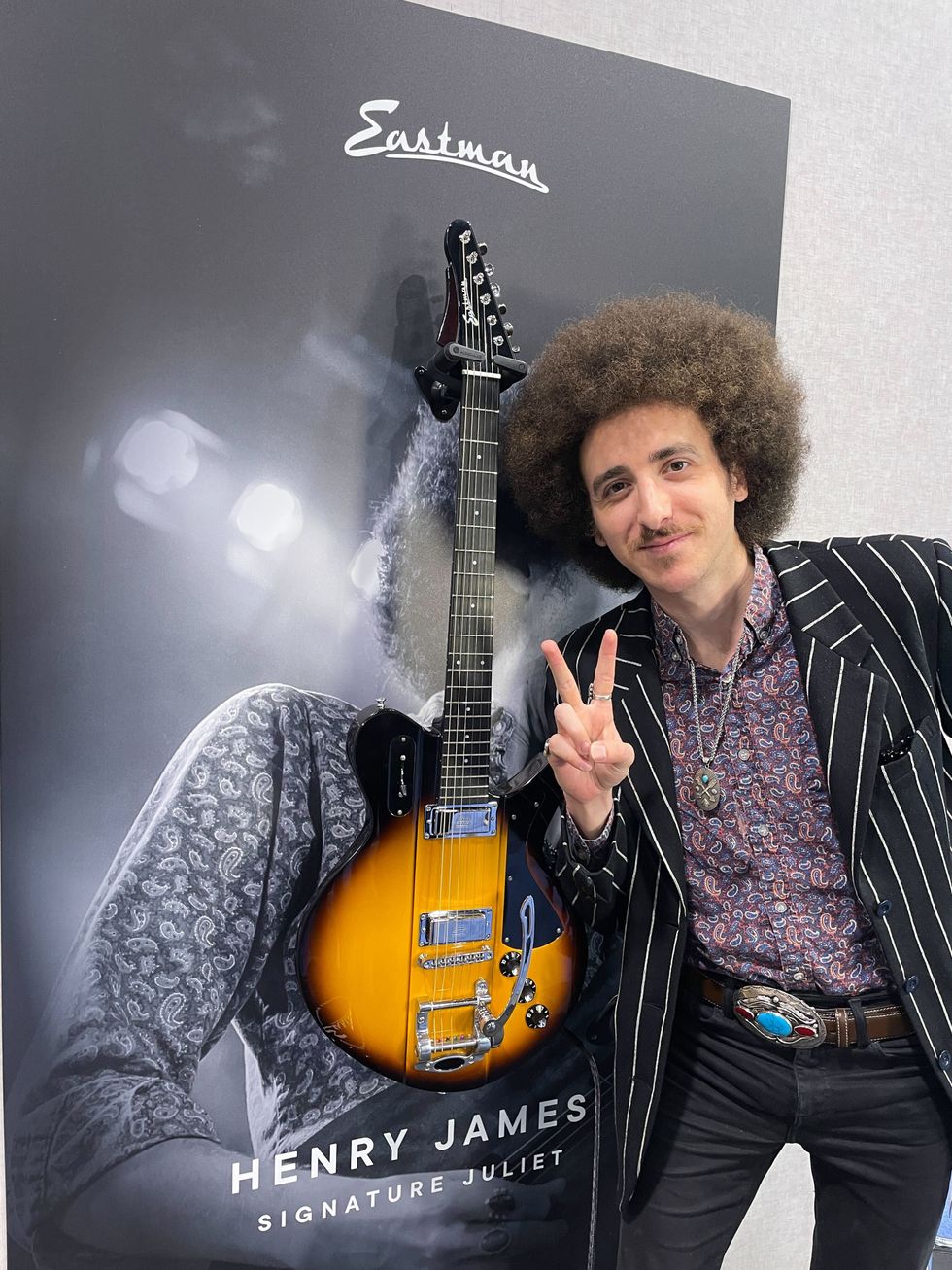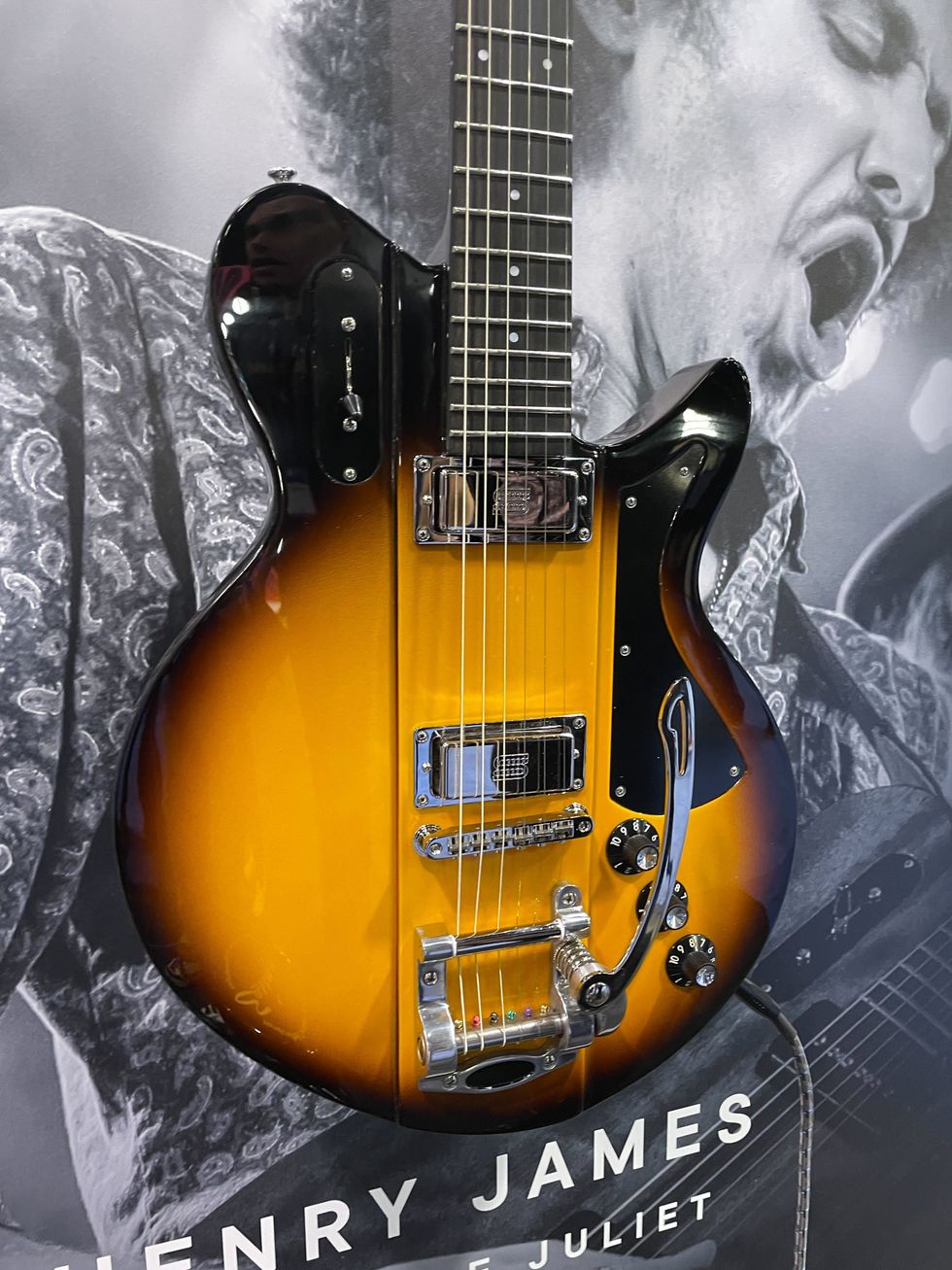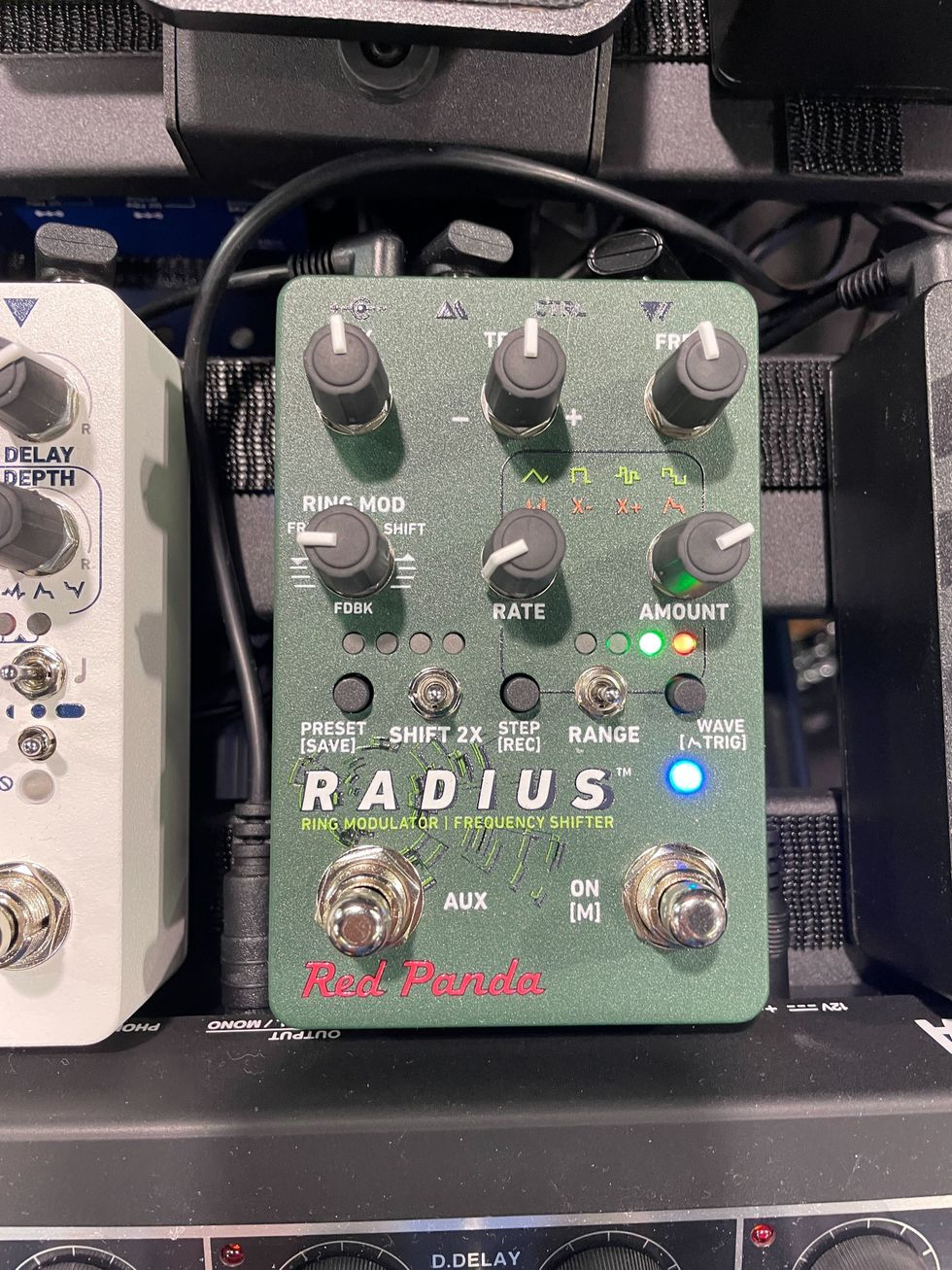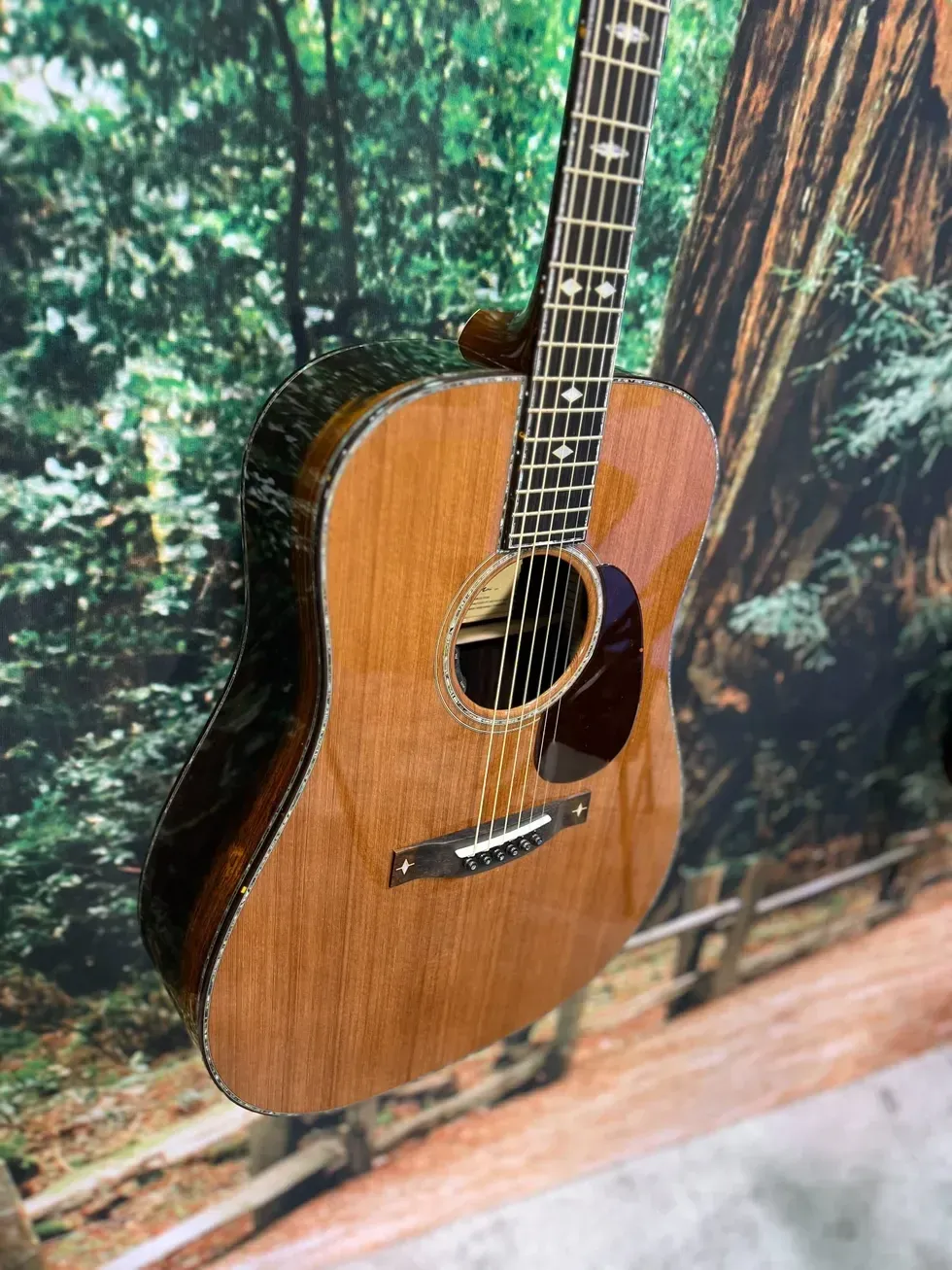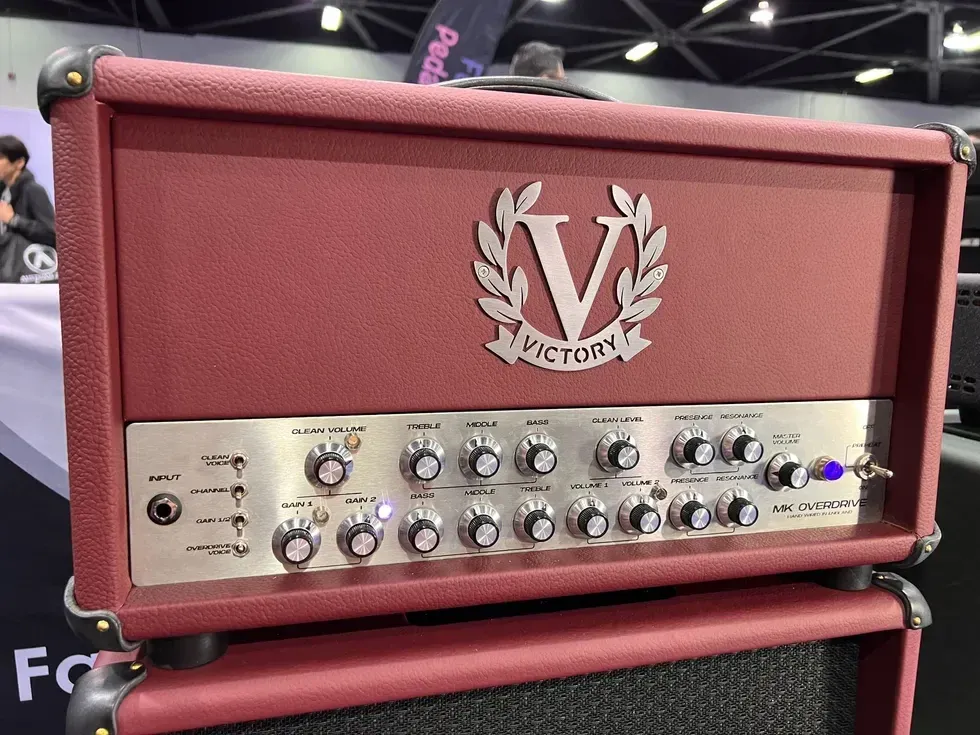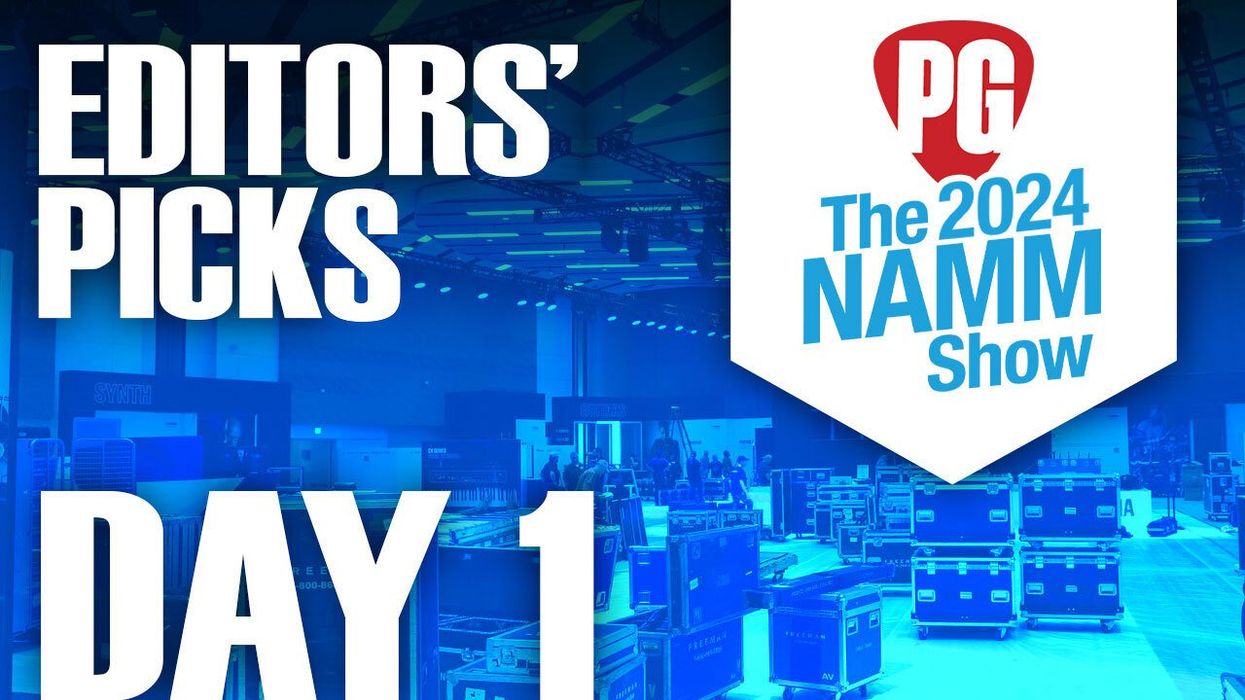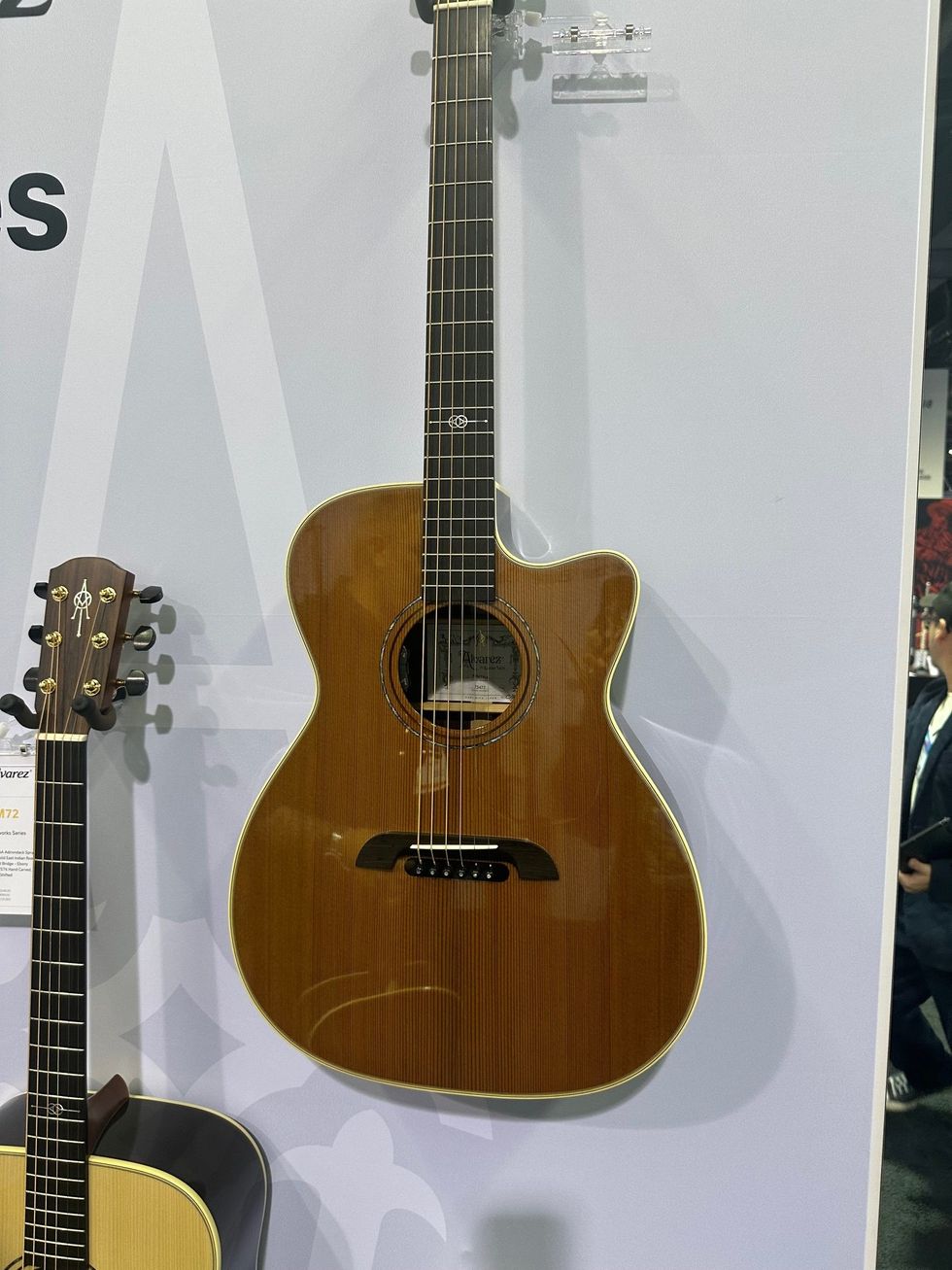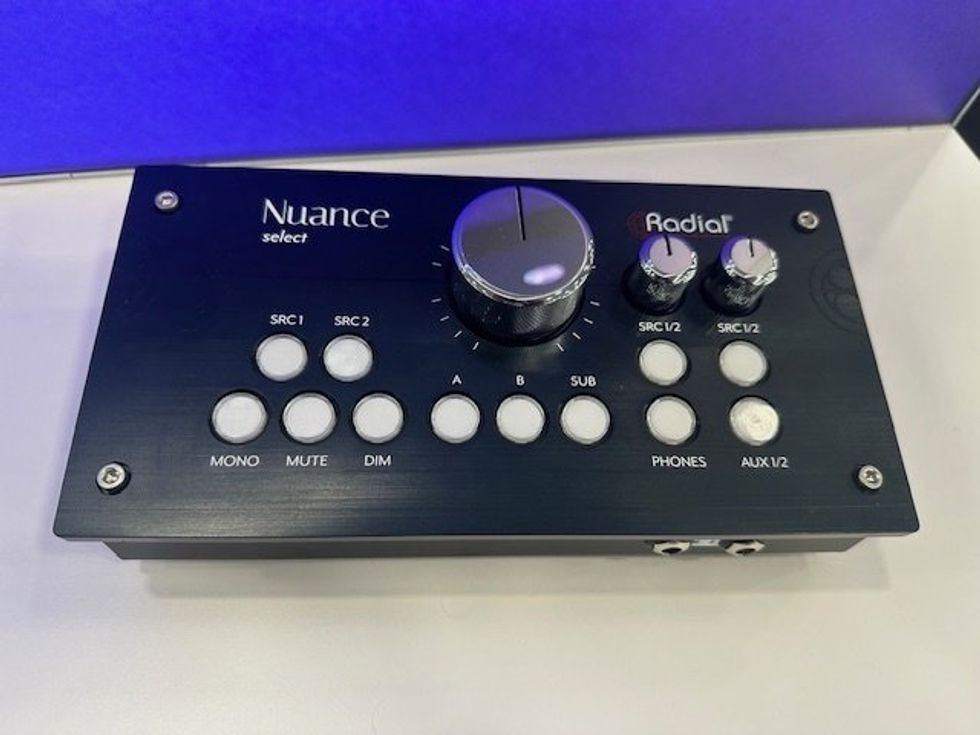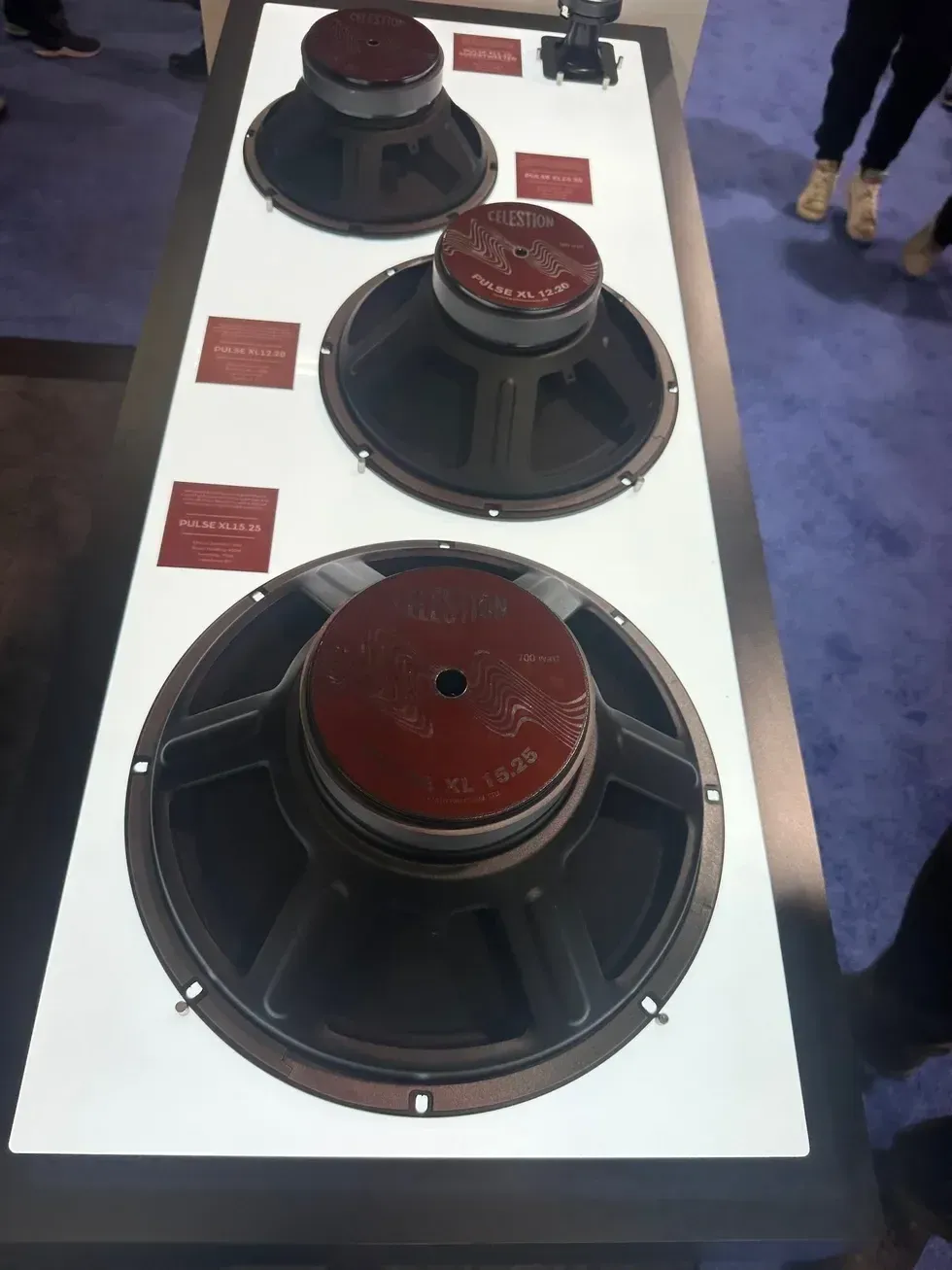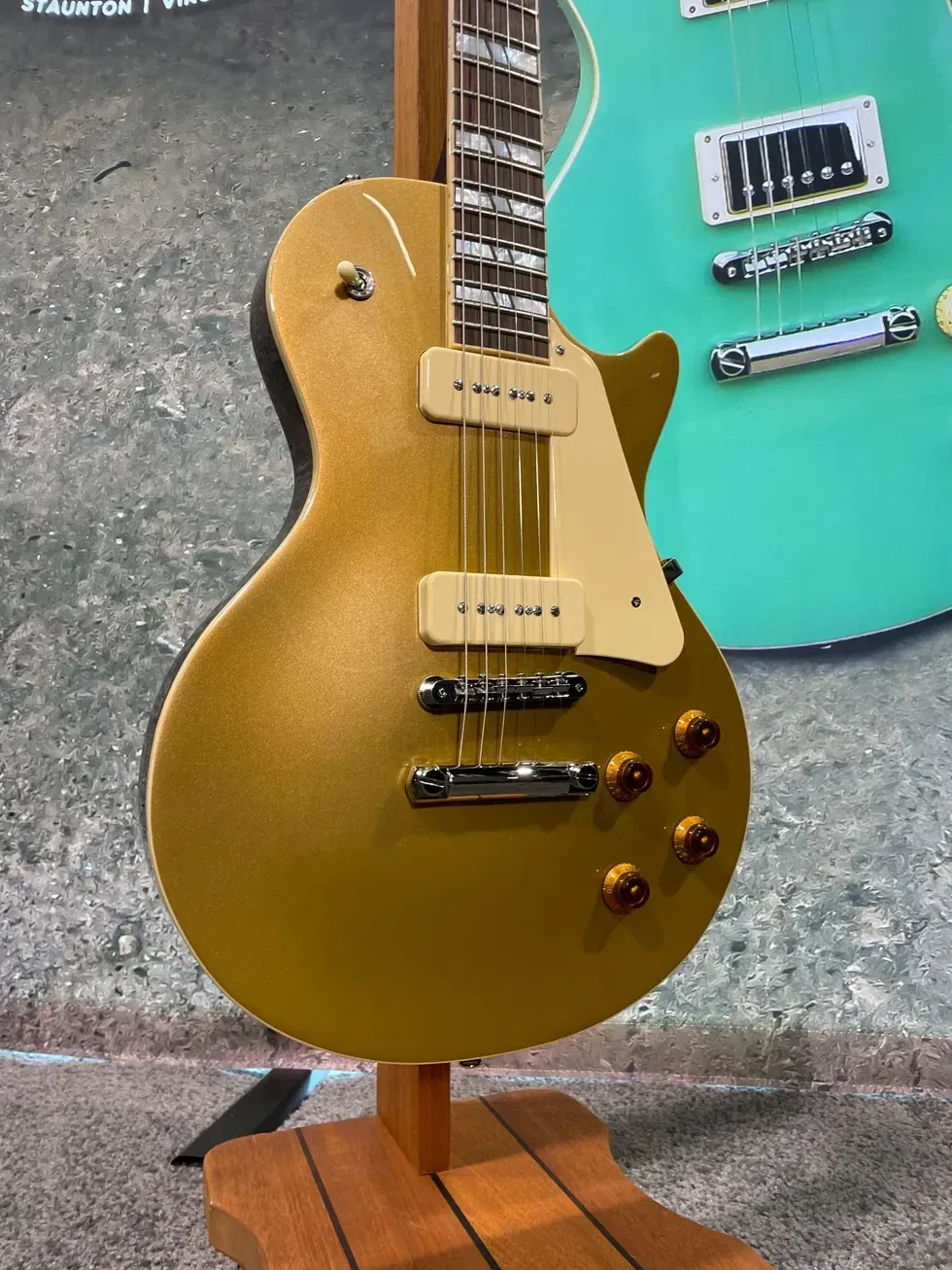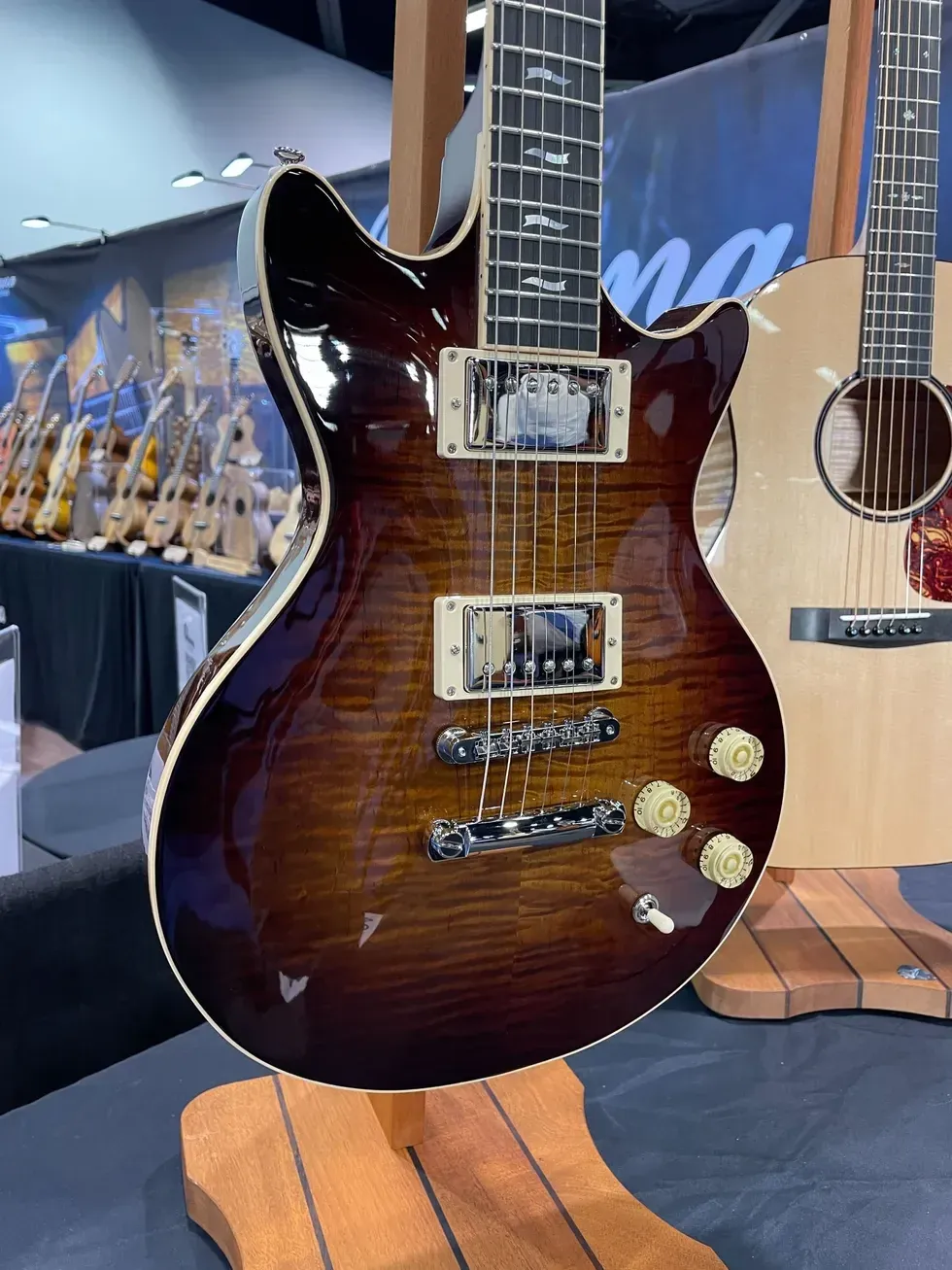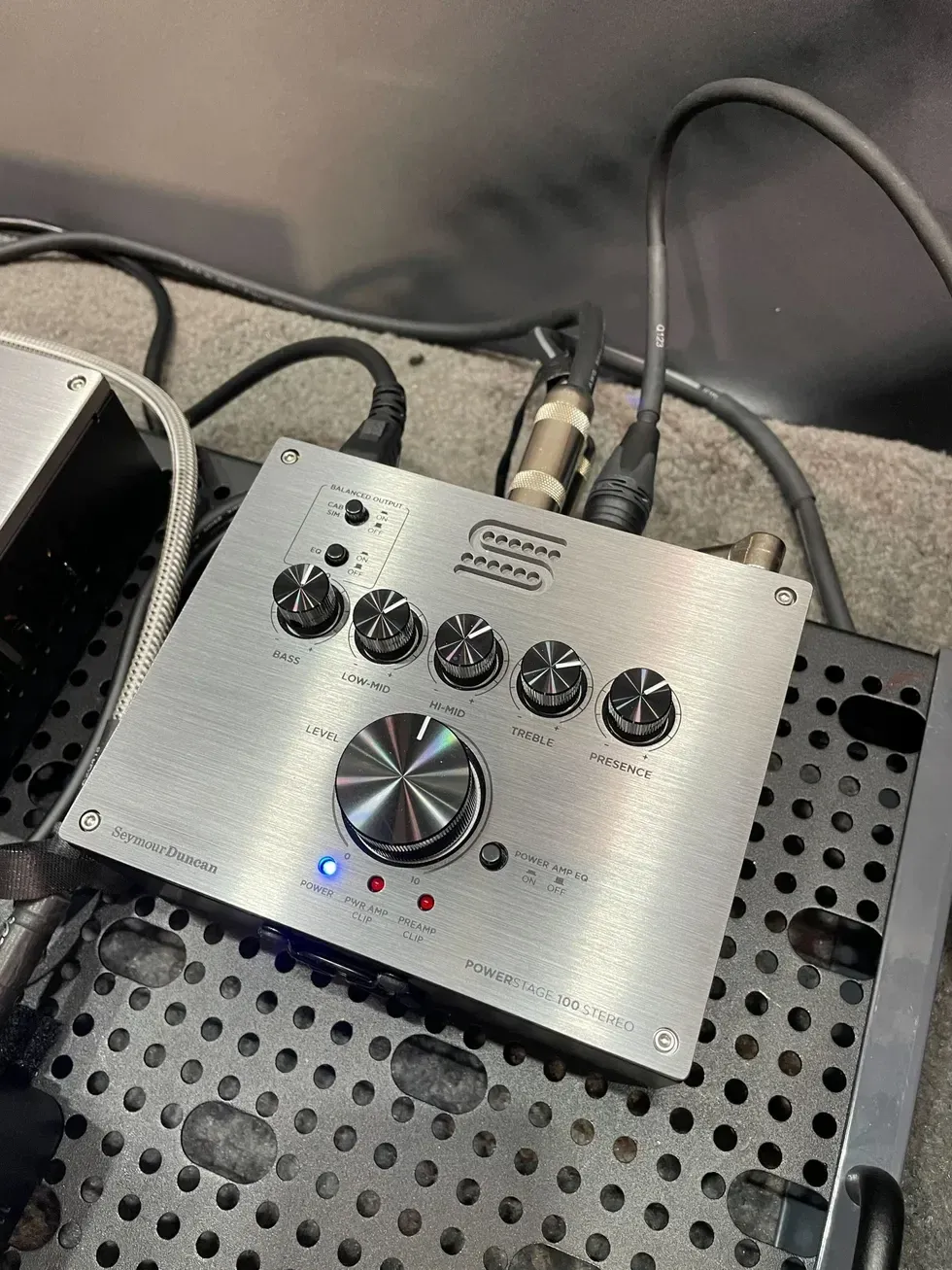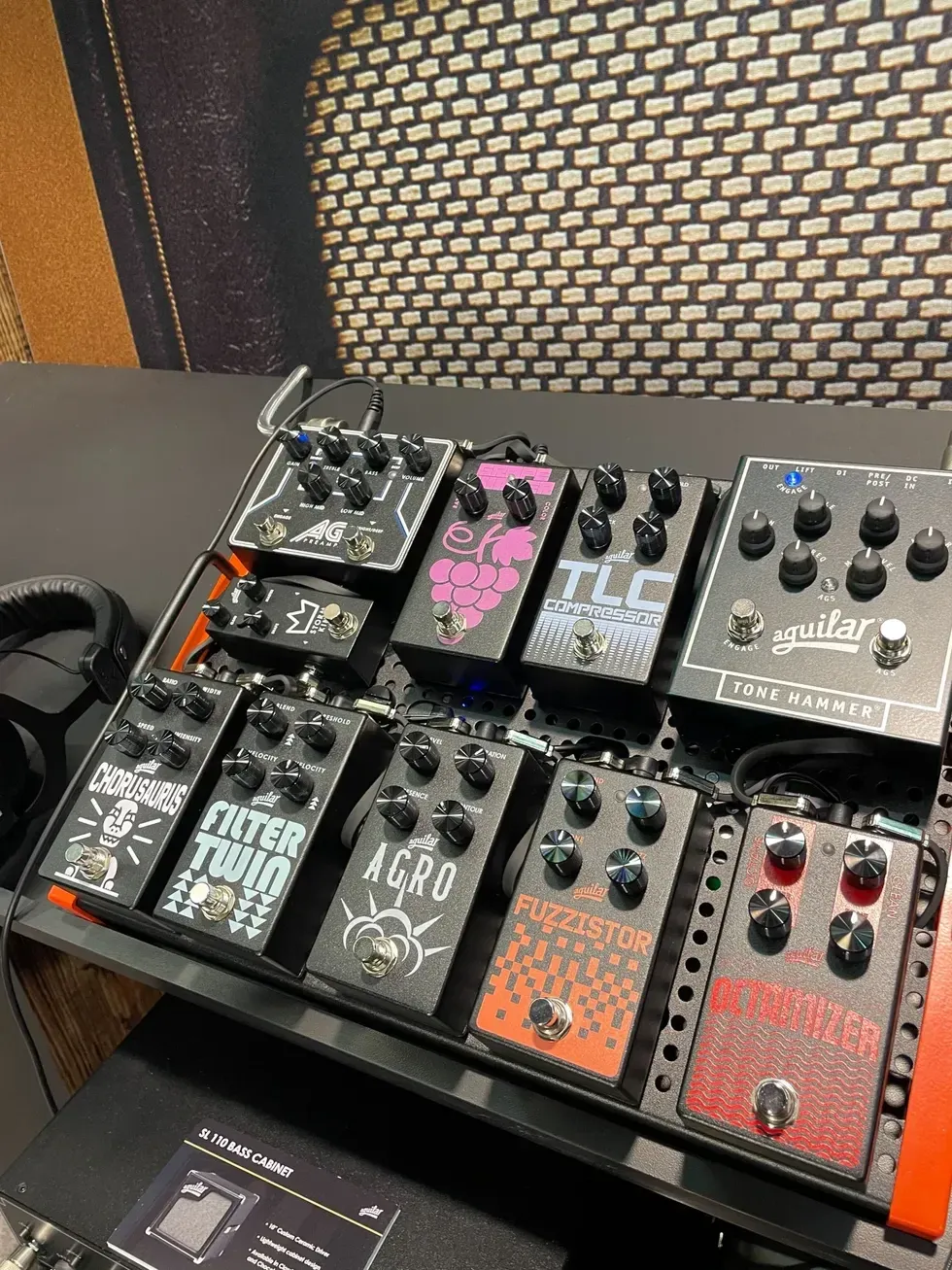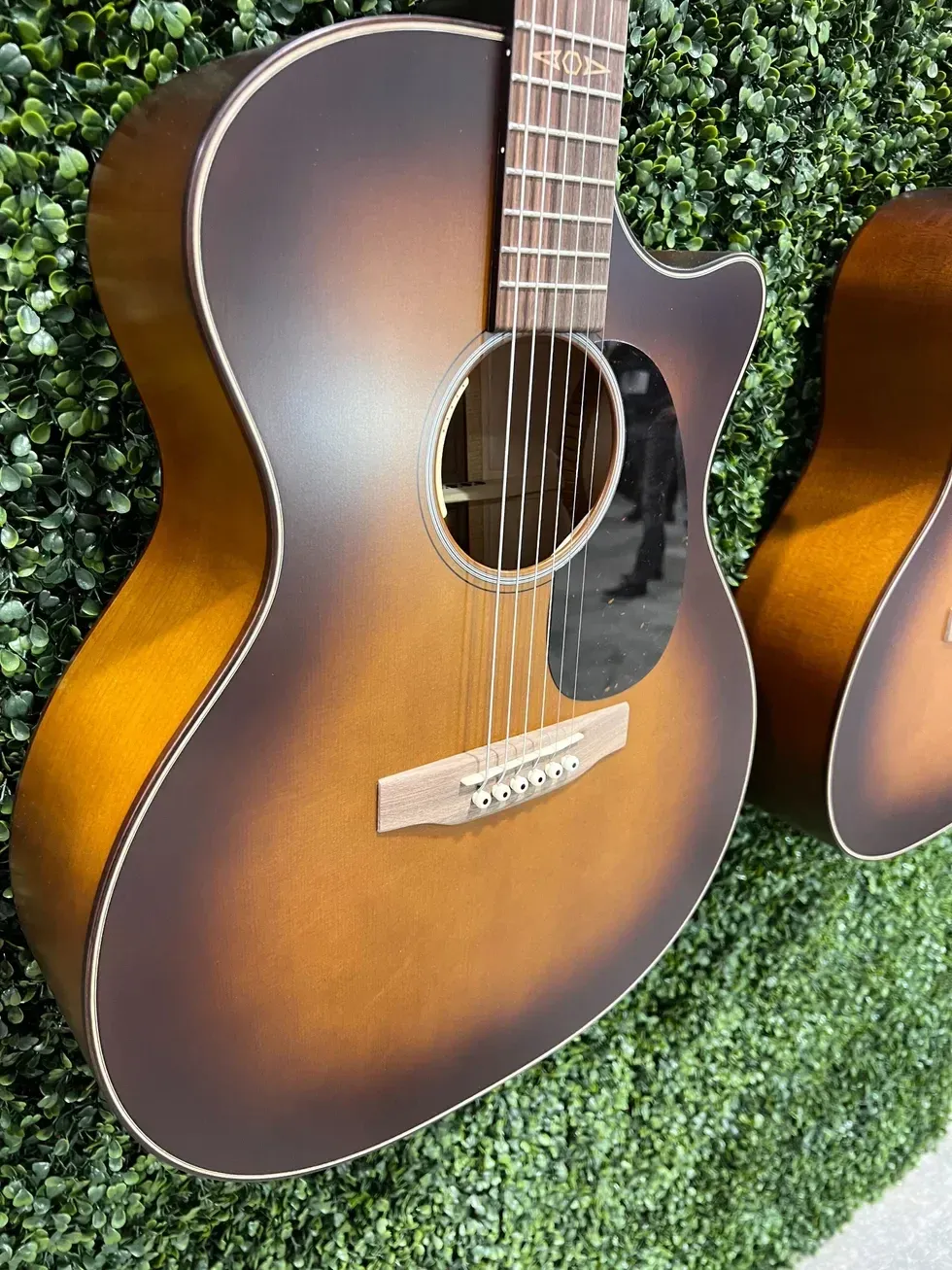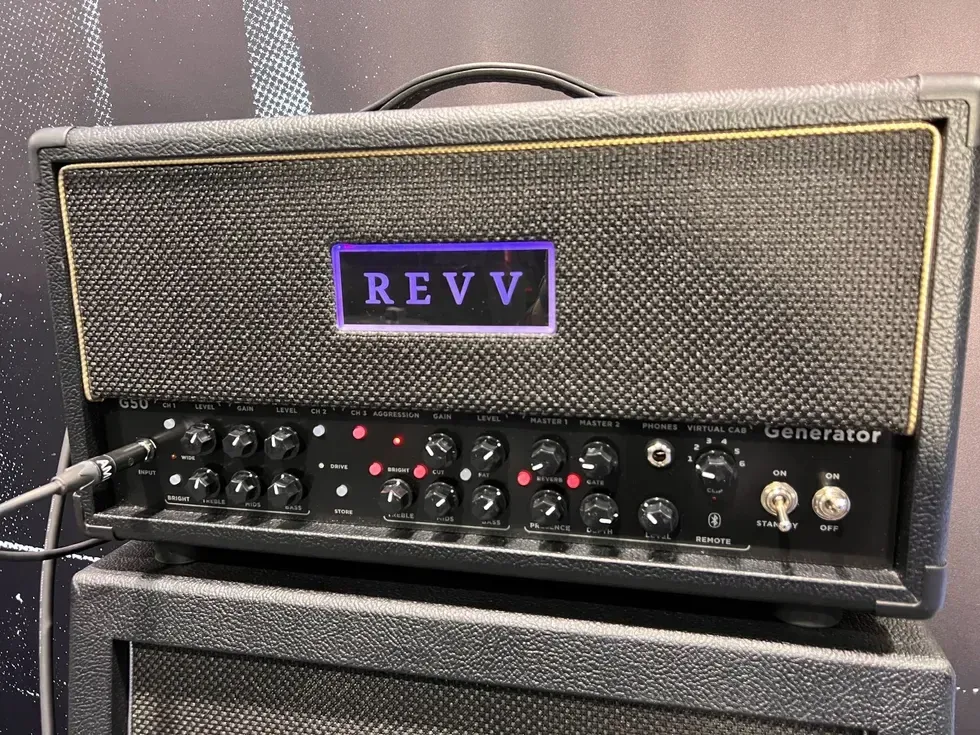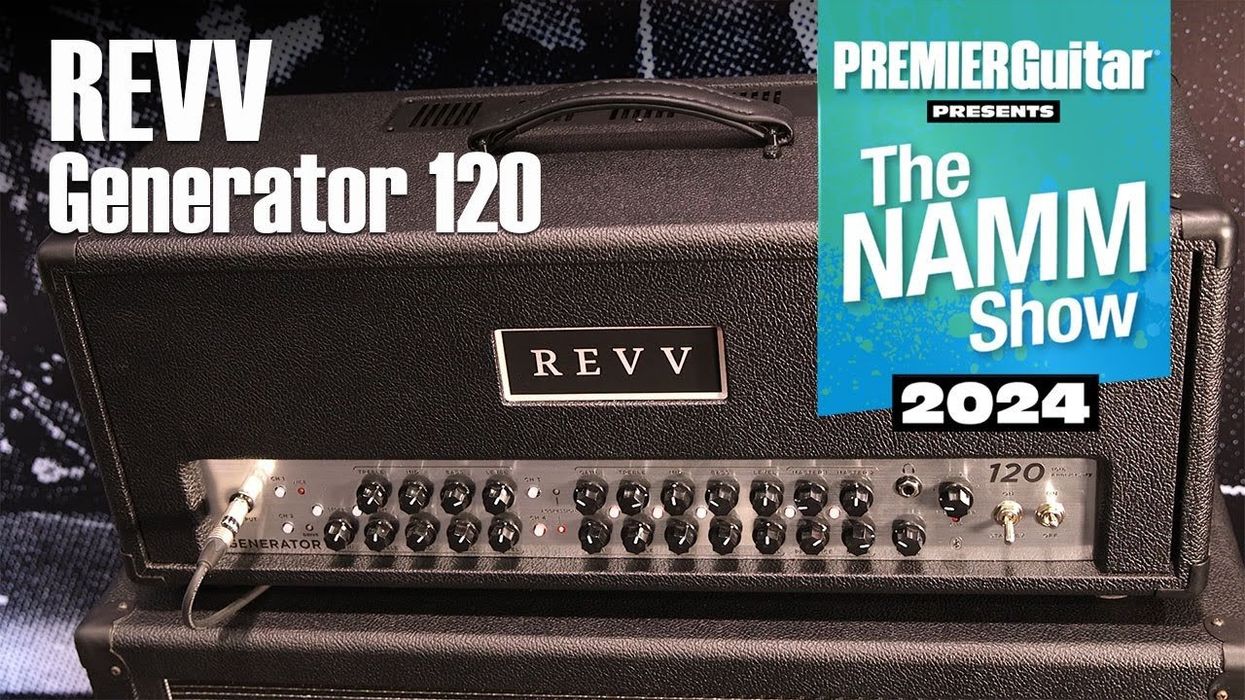Dig into the details of new gear from Martin, Godin, Friedman Amps, Reverend, Eastman, Victory Amps, Danelectro and more!
Taylor 314ce LTD
Taylor celebrated their 50th anniversary Wednesday night with an unveiling party in Anaheim for its new anniversary models, which include limited editions of the 814ce, 314ce, AD14ce-SB, PS14ce, PS24ce, and more. Check out the headstock and neck inlays on the PS24ce, joined here by an anniversary model of their popular 314ce.
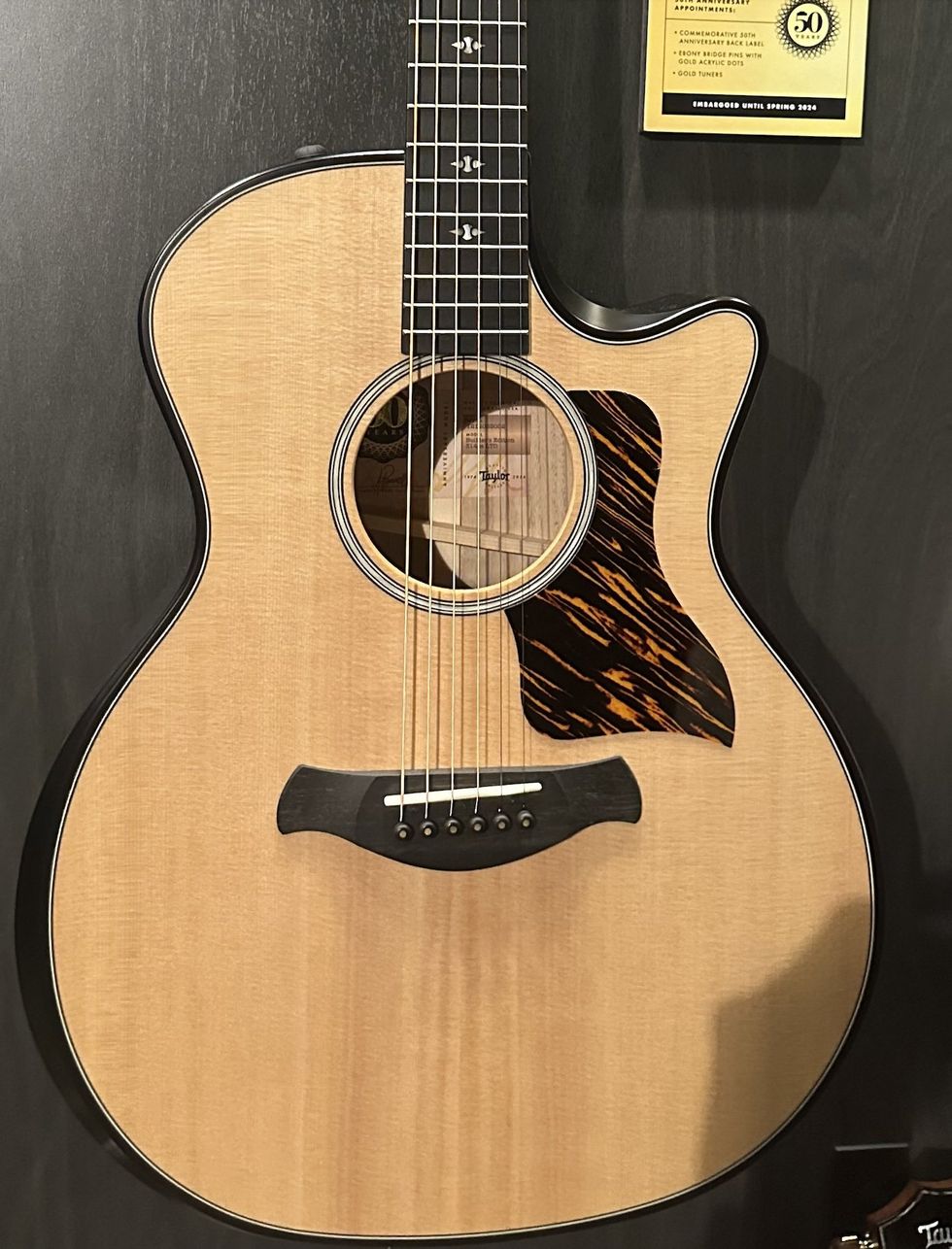
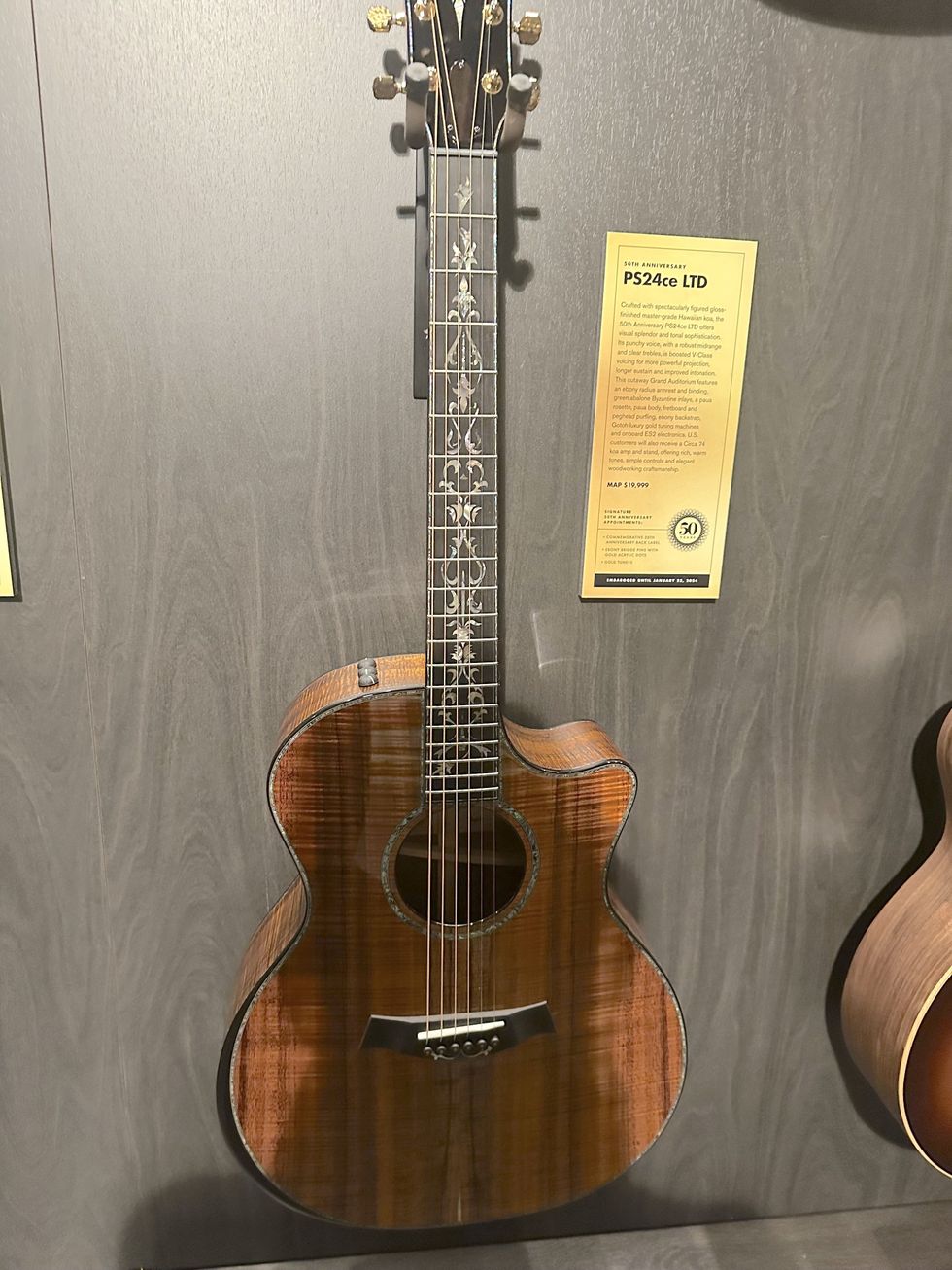
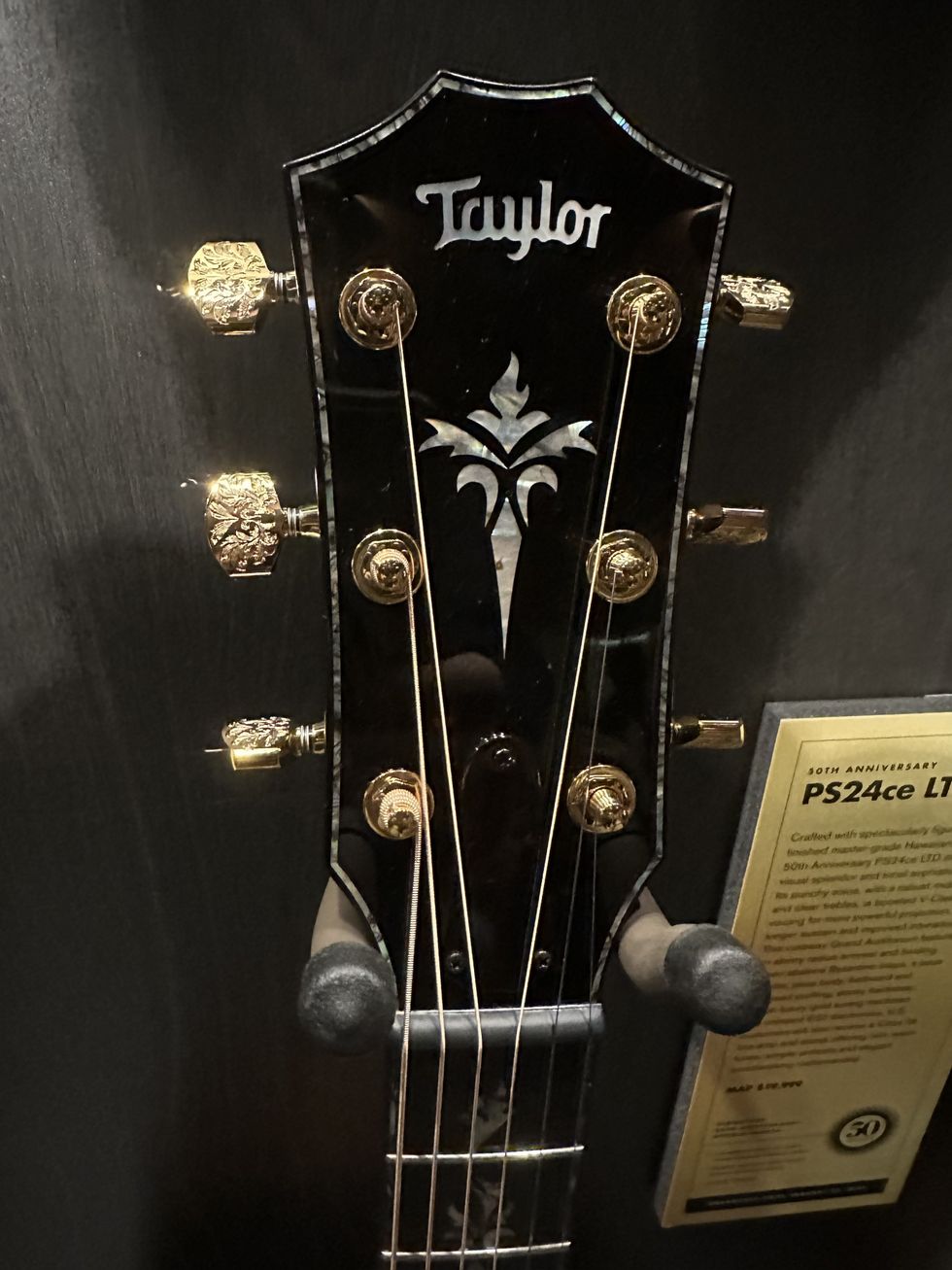
Martin Inception Maple
Martin took a look at their recipe for making acoustic guitars and tweaked it a bit for their Inception Maple series. They come with a walnut neck and bridge, L.R. Baggs Anthem electronics, and an interesting new bracing system. They are available now for $3,999.
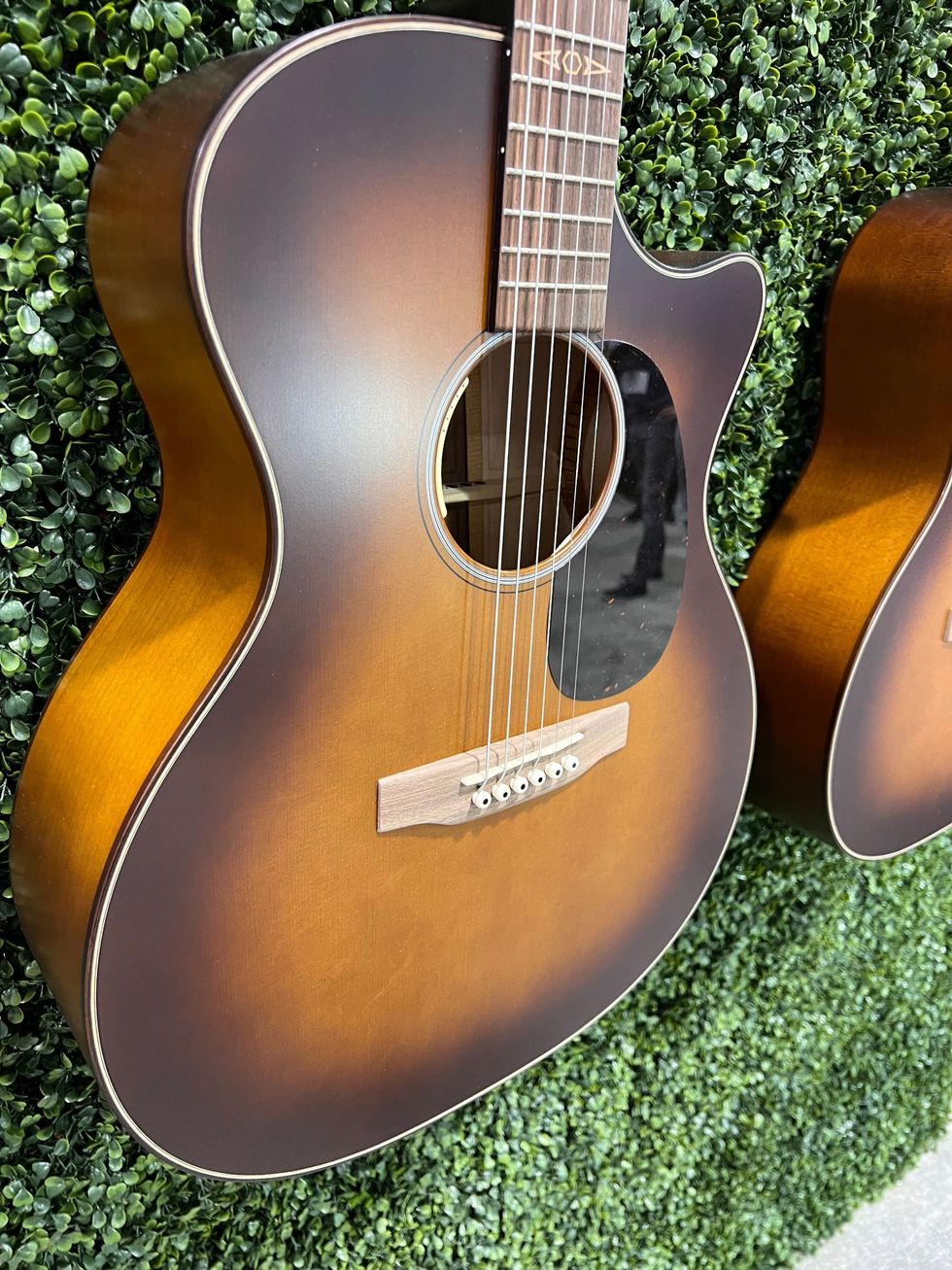
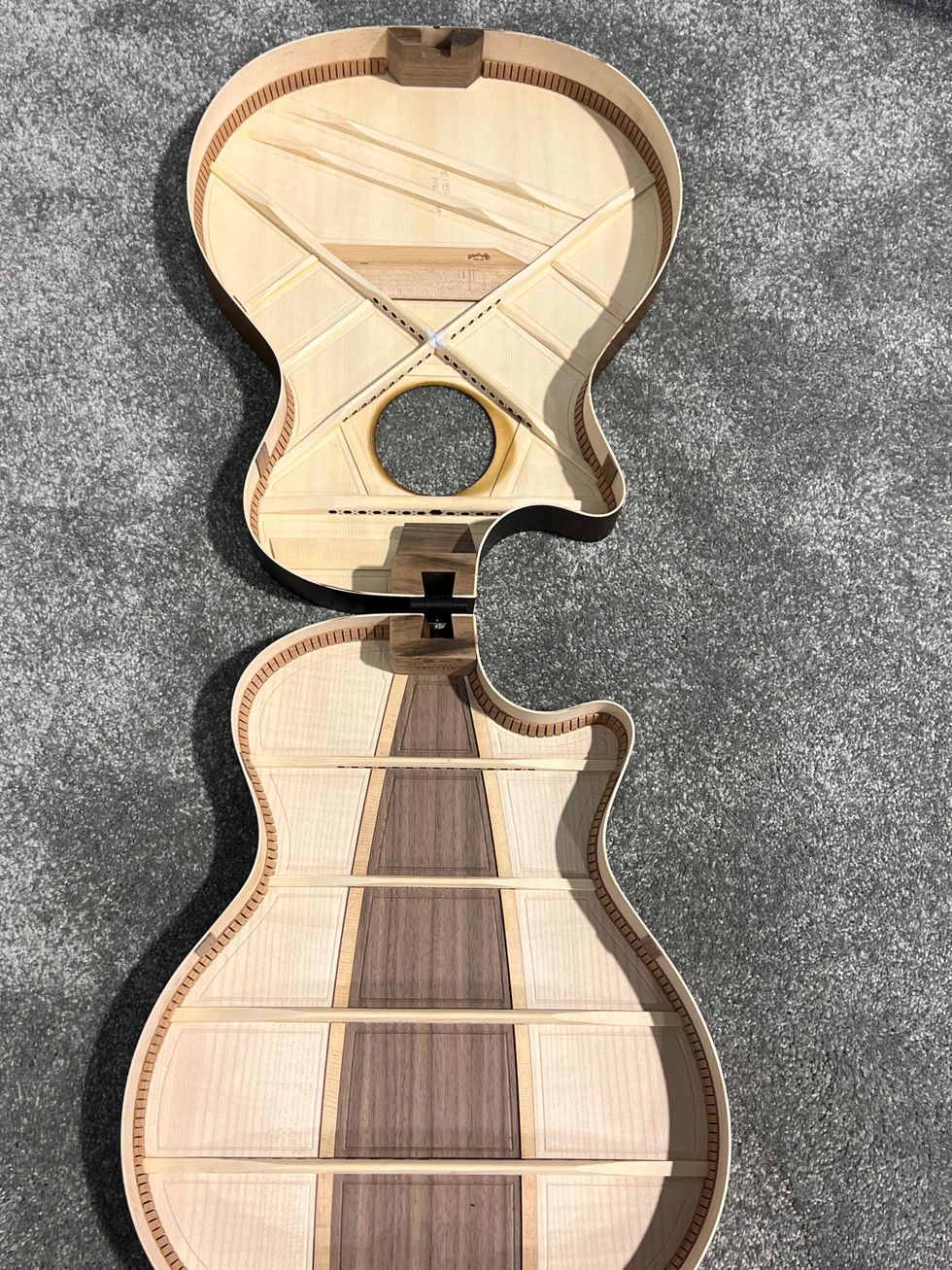
Blackstar ID:Core
Blackstar’s line of ID Core amps are feature packed with loads of sounds and unique recording and streaming capabilities, plus with the PB-1 power bank, you’ll have up to 10 hour of playing—or charging—time. Available now at $159, $199, and $229.
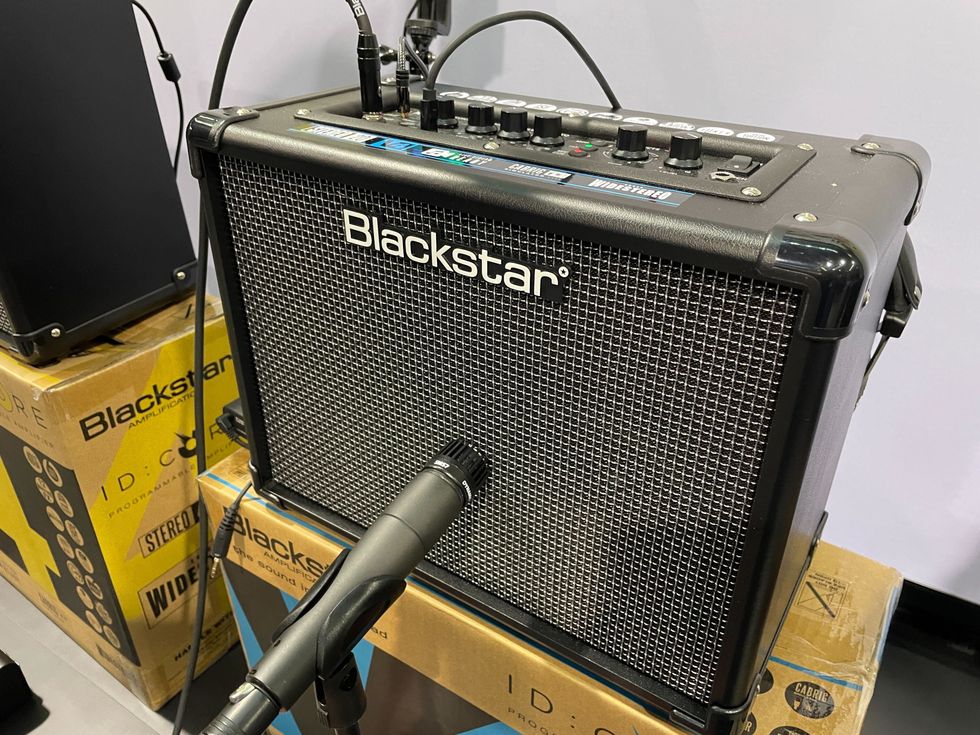

Vox V846 Wah
Vox is unleashing an array of vintage-inspired designs from the Real McCoy and V846 wahs (available March/April for $279 street) to a full line of handwired amps coming this summer.
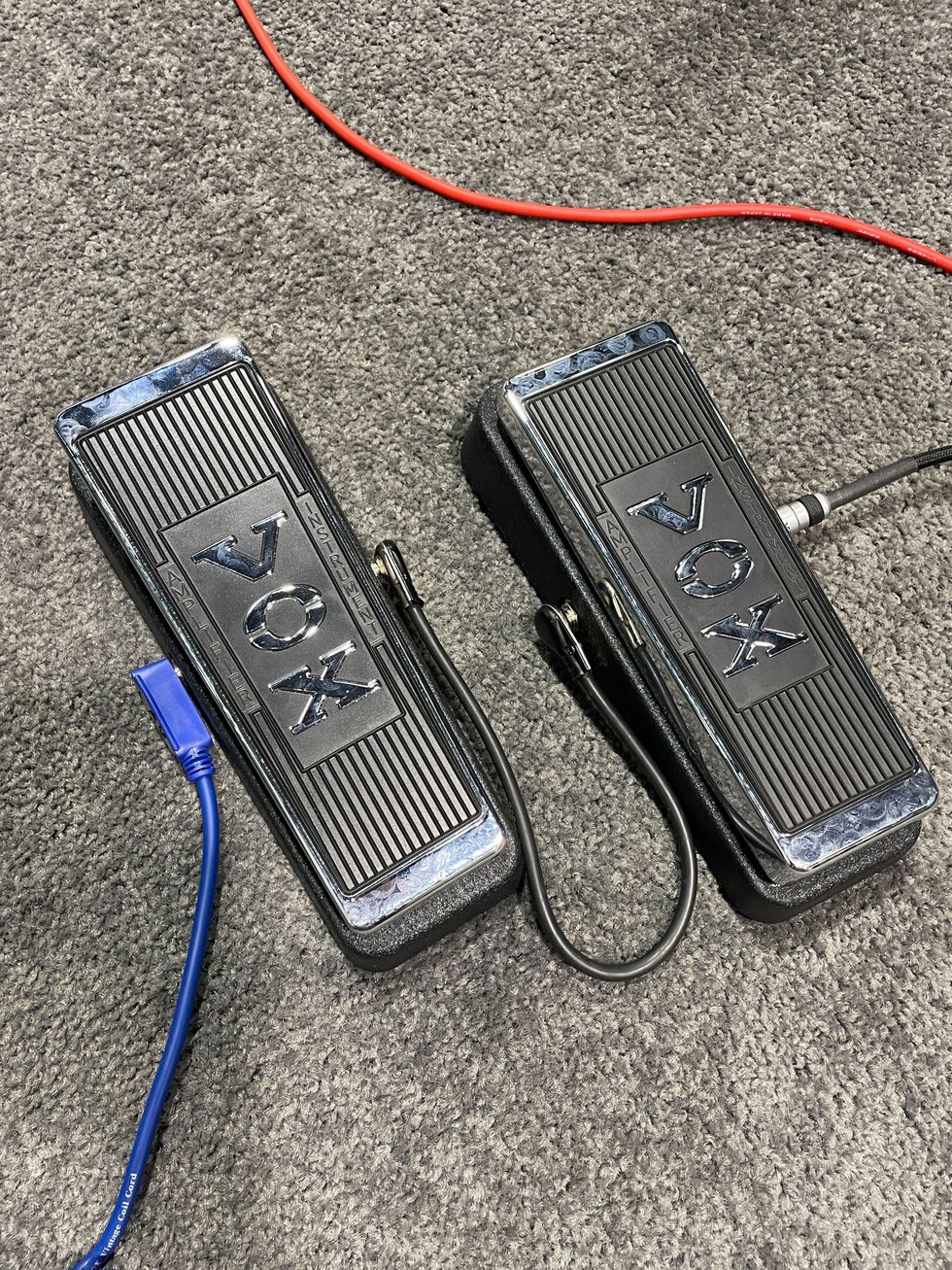
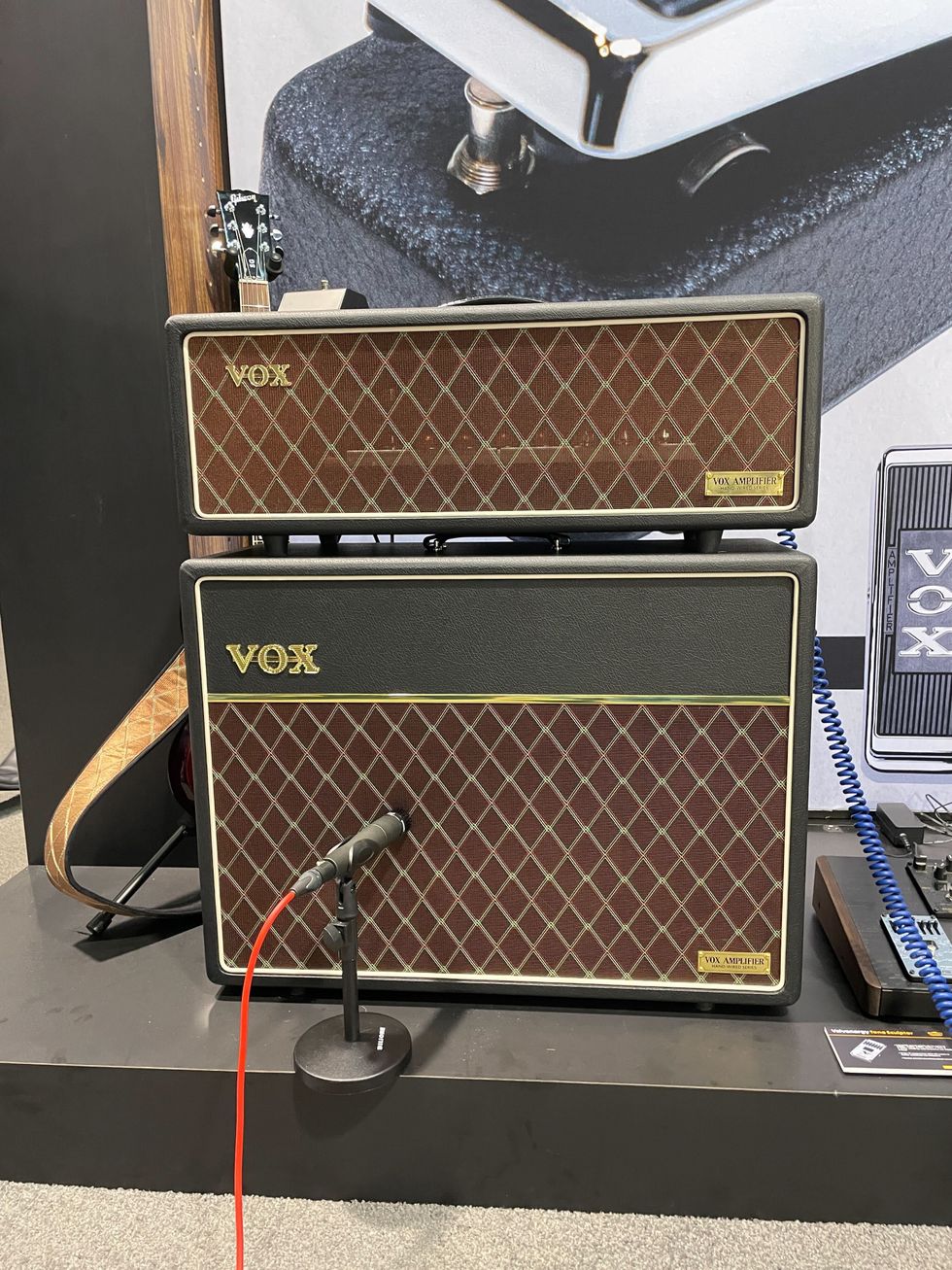
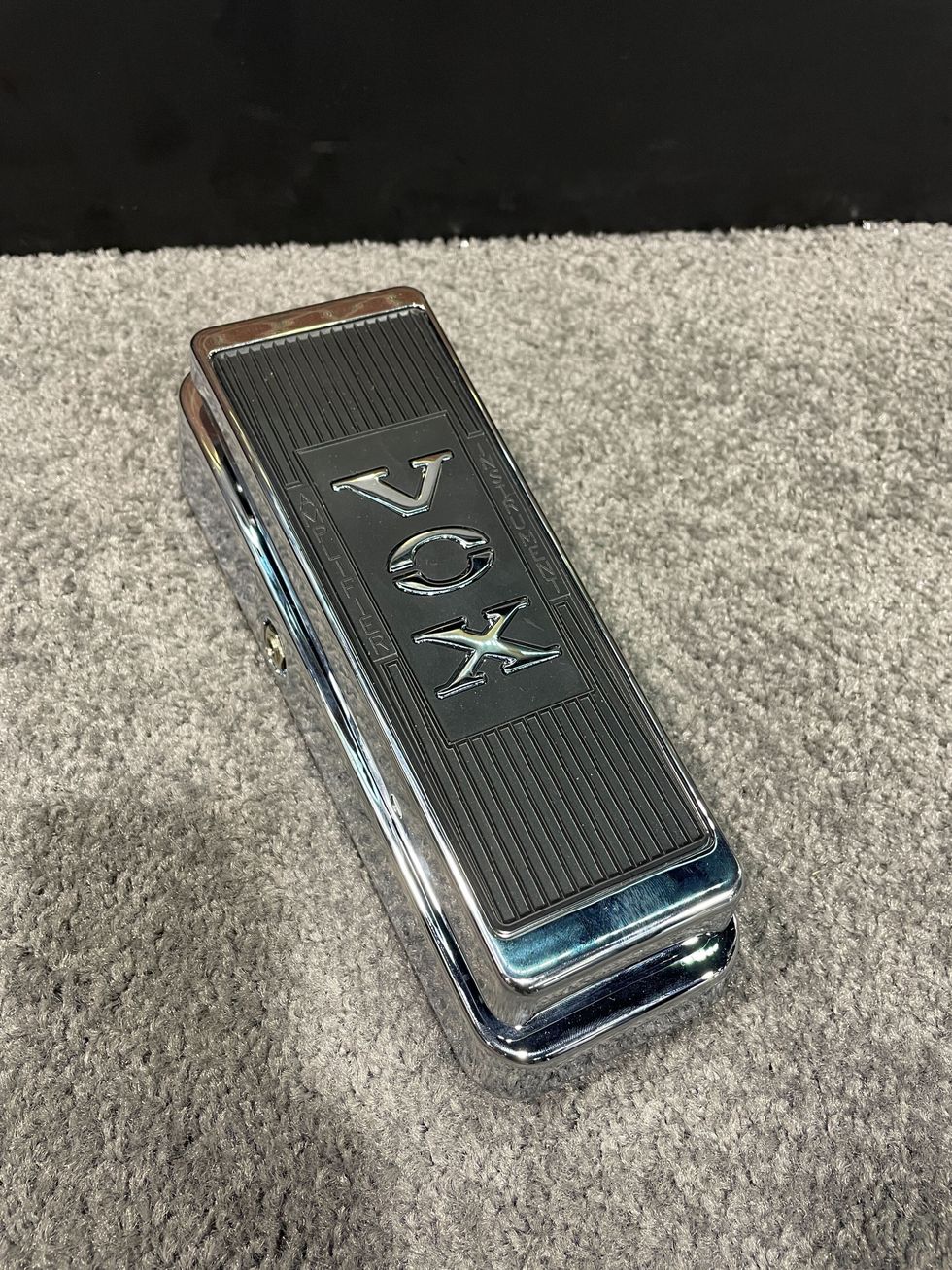
Silvertone Baritone
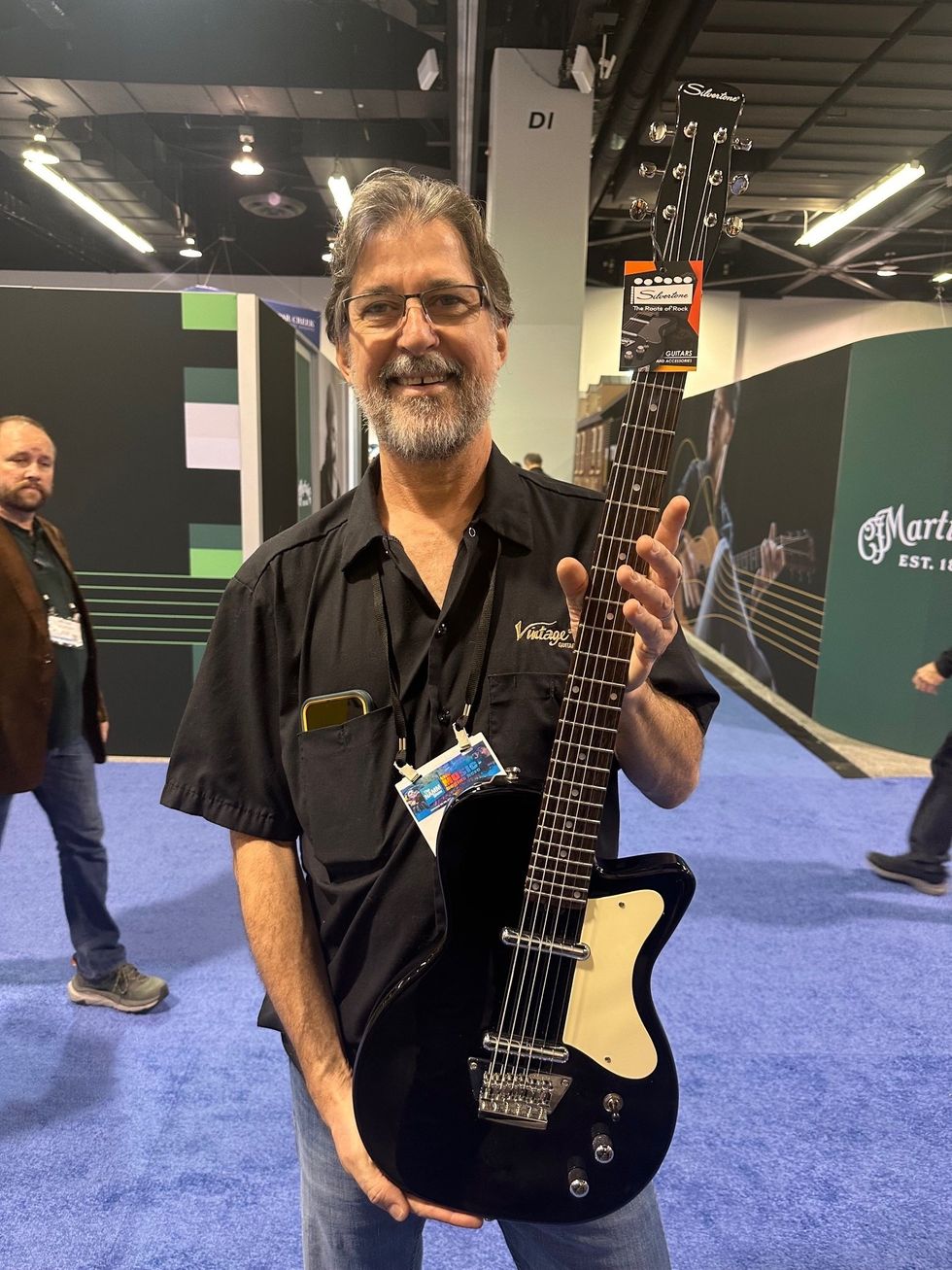
Silvertone’s Rick Taylor showed us the company’s late spring entry in the nuevo-retro 6-string sweepstakes—a super comfortable lightweight (naturally) baritone with a 28" scale and the company’s classic lipstick pickups, built to be tuned B to B. Price tag: an attractive $399.
Radial Nuance Select
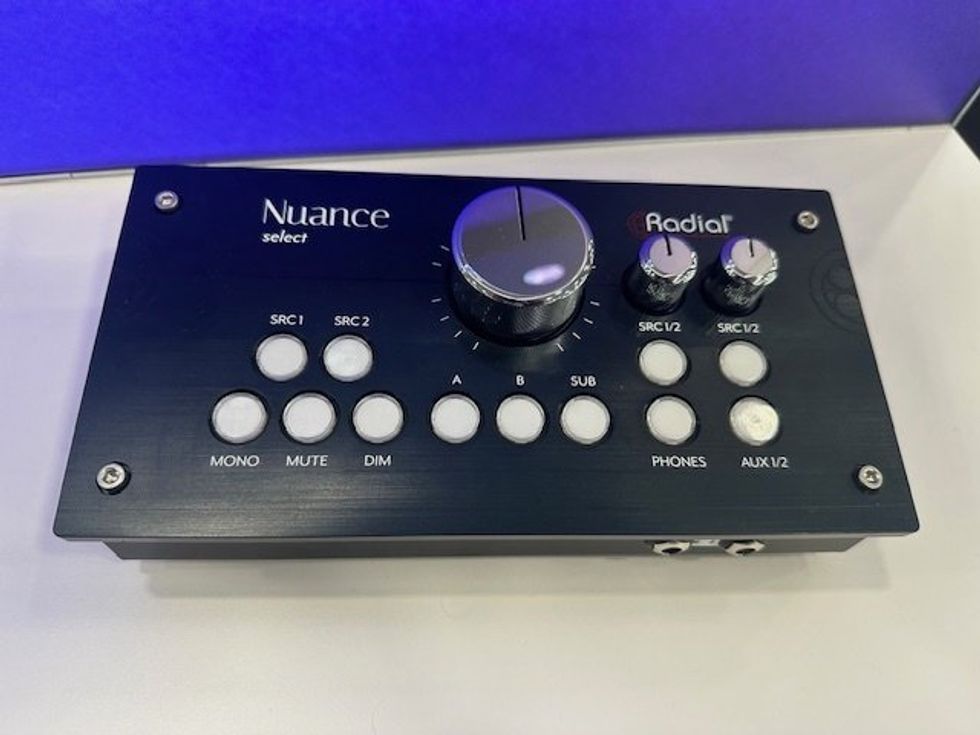
Radial, whose products for studio and stage include the famed Tonebone preamp, has just released the Nuance Select studio monitor controller—in time for NAMM 2024. The aptly named Nuance allows you to silently switch between two sets of monitors and a subwoofer, has dual stereo inputs with an aux out, two independent headphone amps, and ultra-low distortion of transparency. The tag? $699.
Spector Basses
Spector’s new line of production basses is on display as well as their deep well of custom shop offerings, including a couple NAMM special builds with special finishes and electronic options. Printing and availability on all models at spectorbass.com.
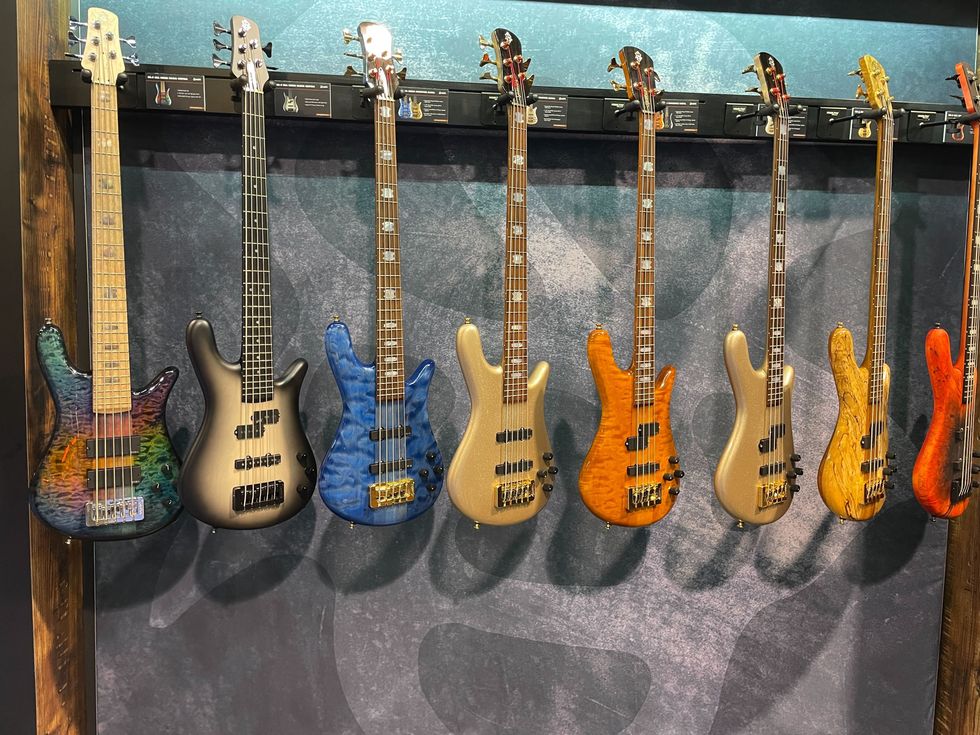
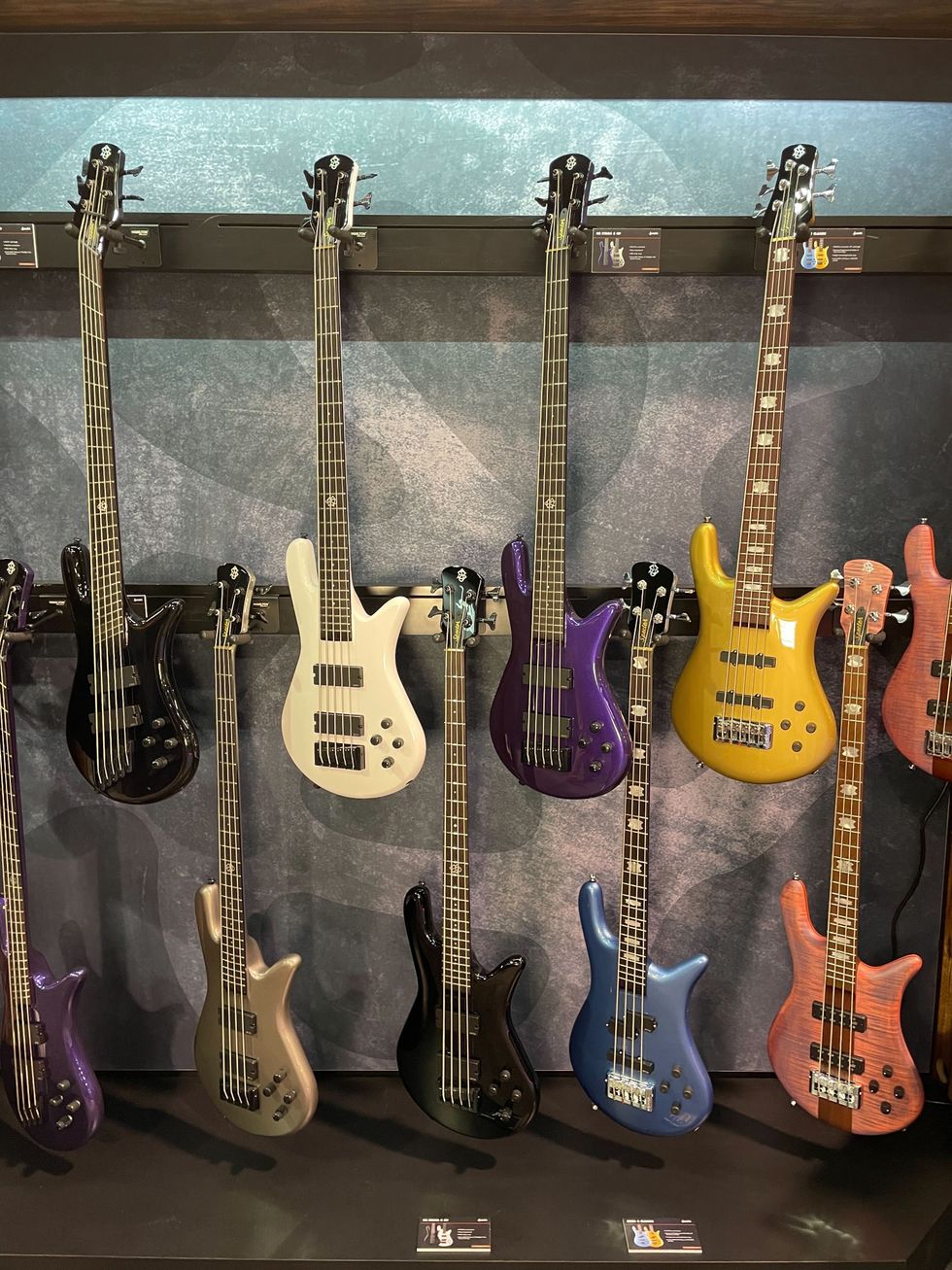
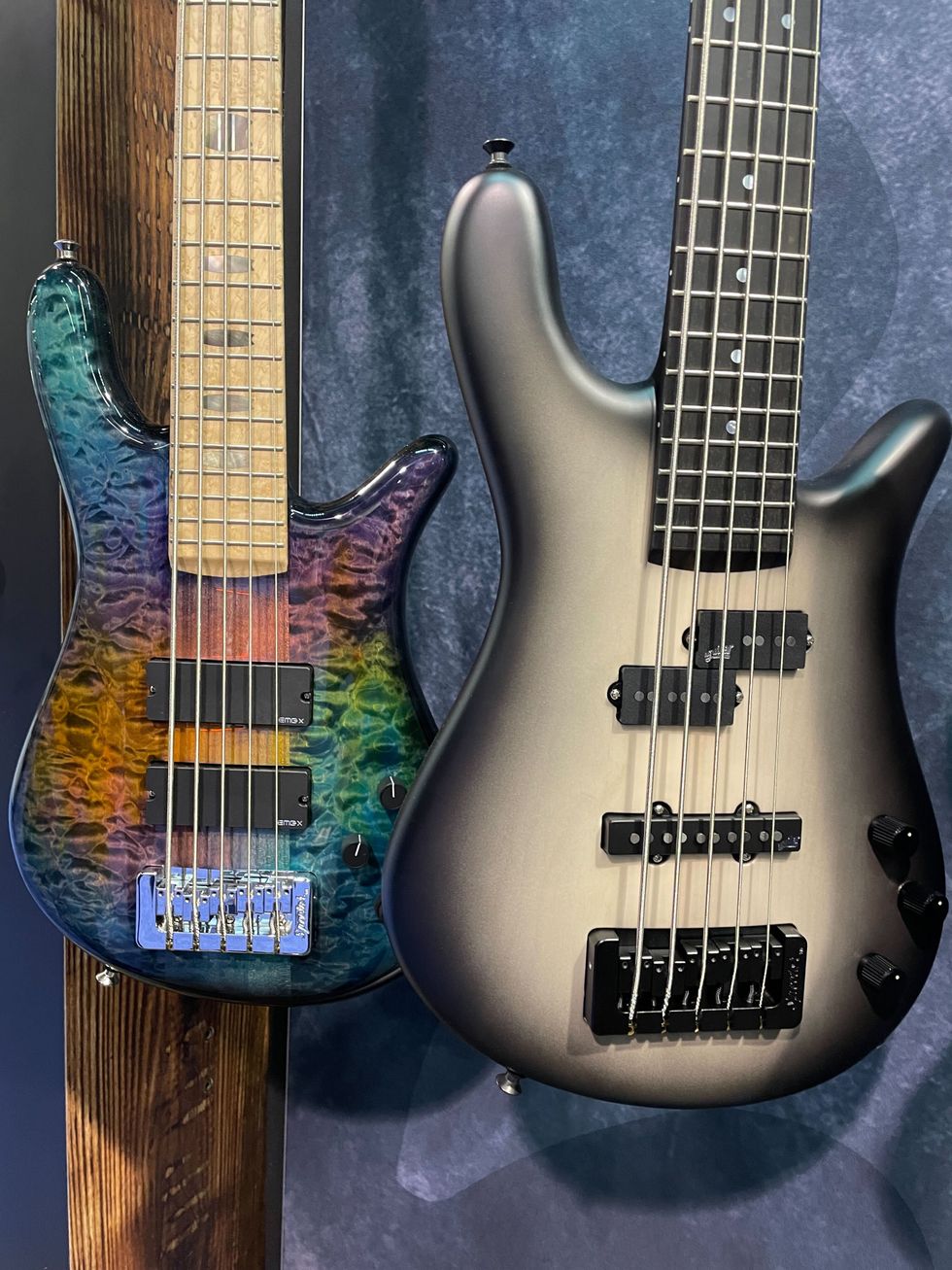
Revv Generator 120
Revv’s flagship amp, the Generator 120, gets a 10th anniversary update. Designer Dan Trudeau went back to his original prototype and revolved the high-gain channels to be more open and aggressive while still keeping all the modern functionality. They are available now for $3,299.
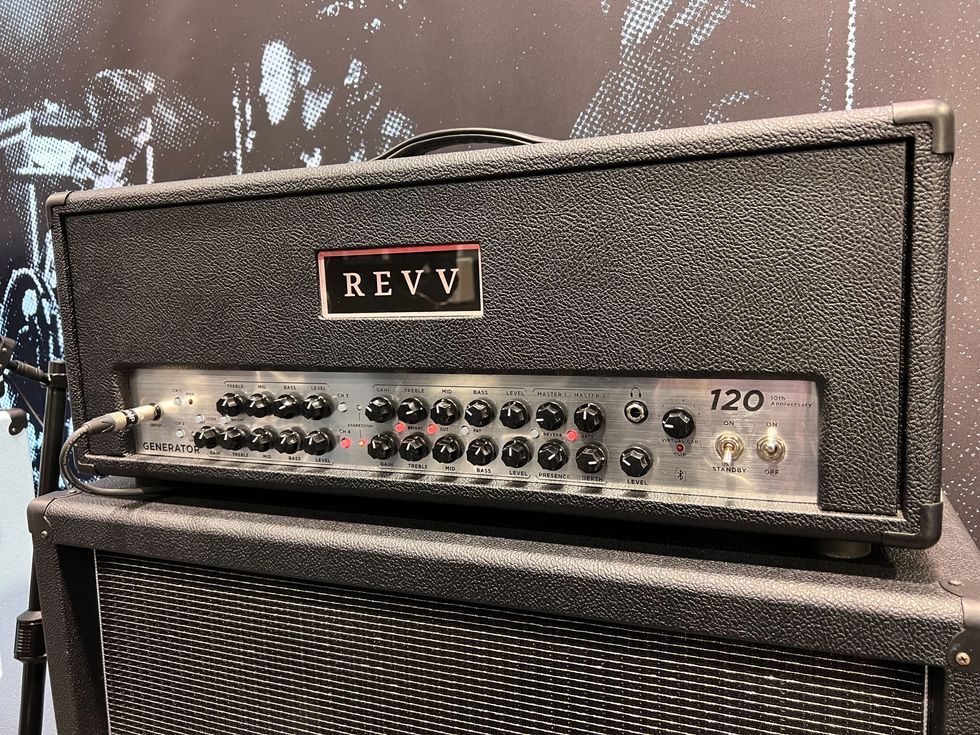
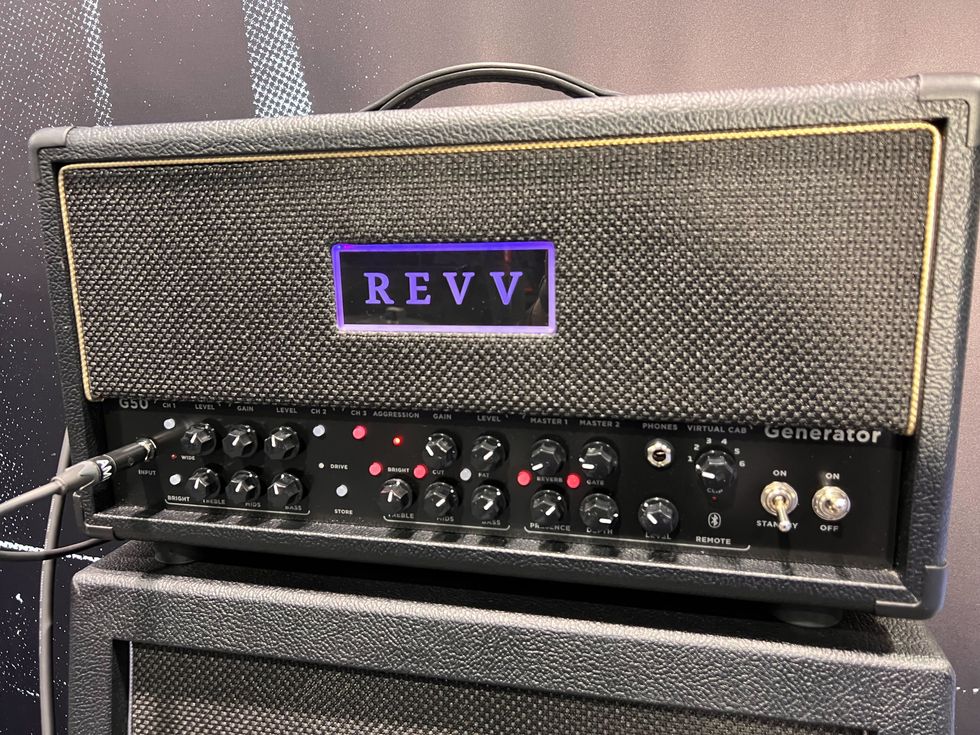
Celestion Pulse XI
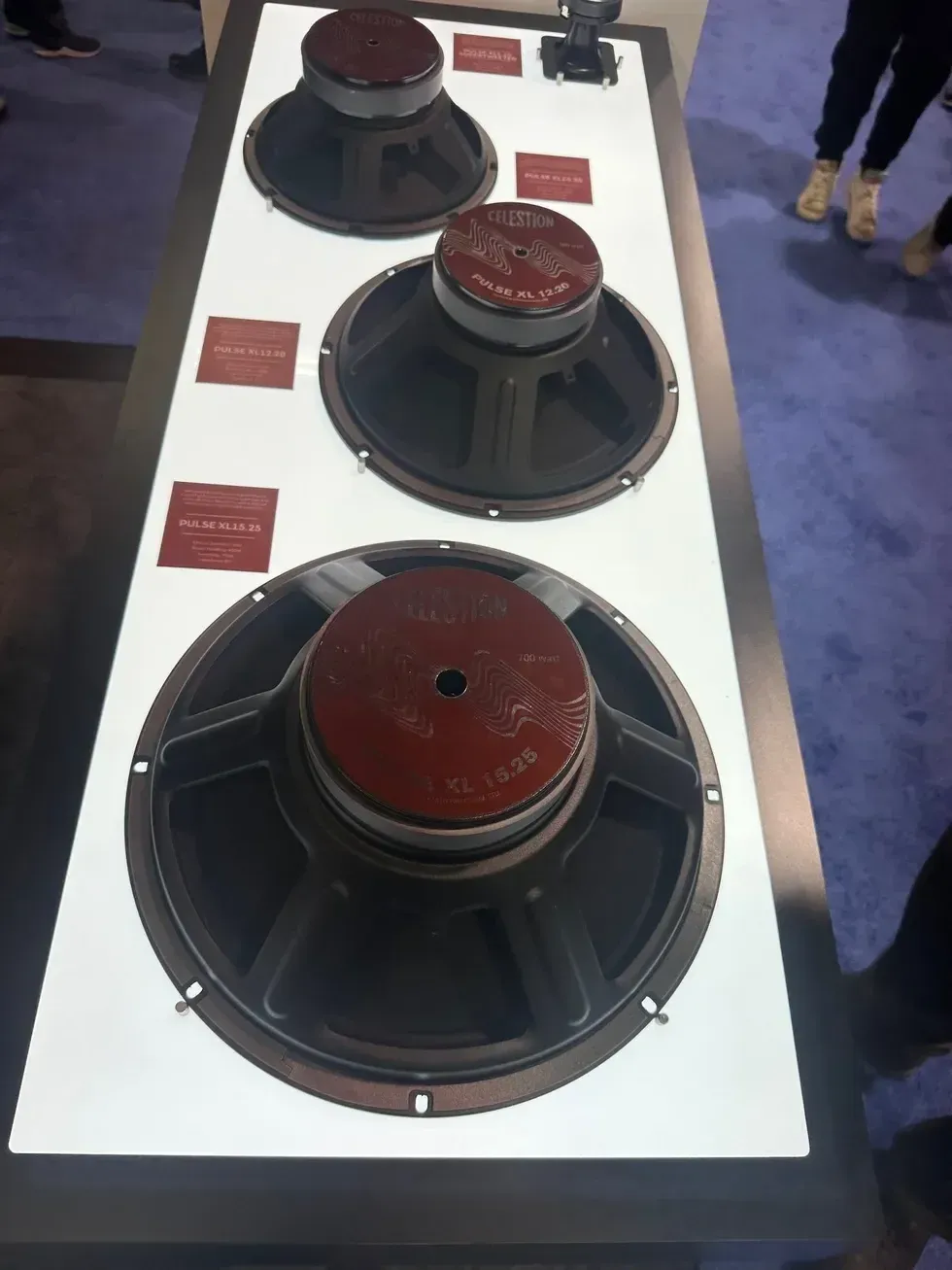
Celestion’s got the big bottom covered with their new line of bass speakers, the Pulse Xl series in 15", 12", 10" and horn. Punchy, responsive, with rich full frequency sound and articulation, they boast long voice coils for a deeper bass sound and greater clarity, wound with round copper for the right taste of treble, formed on heat retardant polyimide. Hit celestion.com for more.
Aguilar AG Preamp
Aguilar’s AG preamp delivers the high fidelity tone of their AG series amps straight to pedalboards, with its bright and deep voicing. A great pairing with their SL 110 cabs. And their range of pedal offerings got a facelift to match. For pricing and availability, contact your Aguilar dealer.
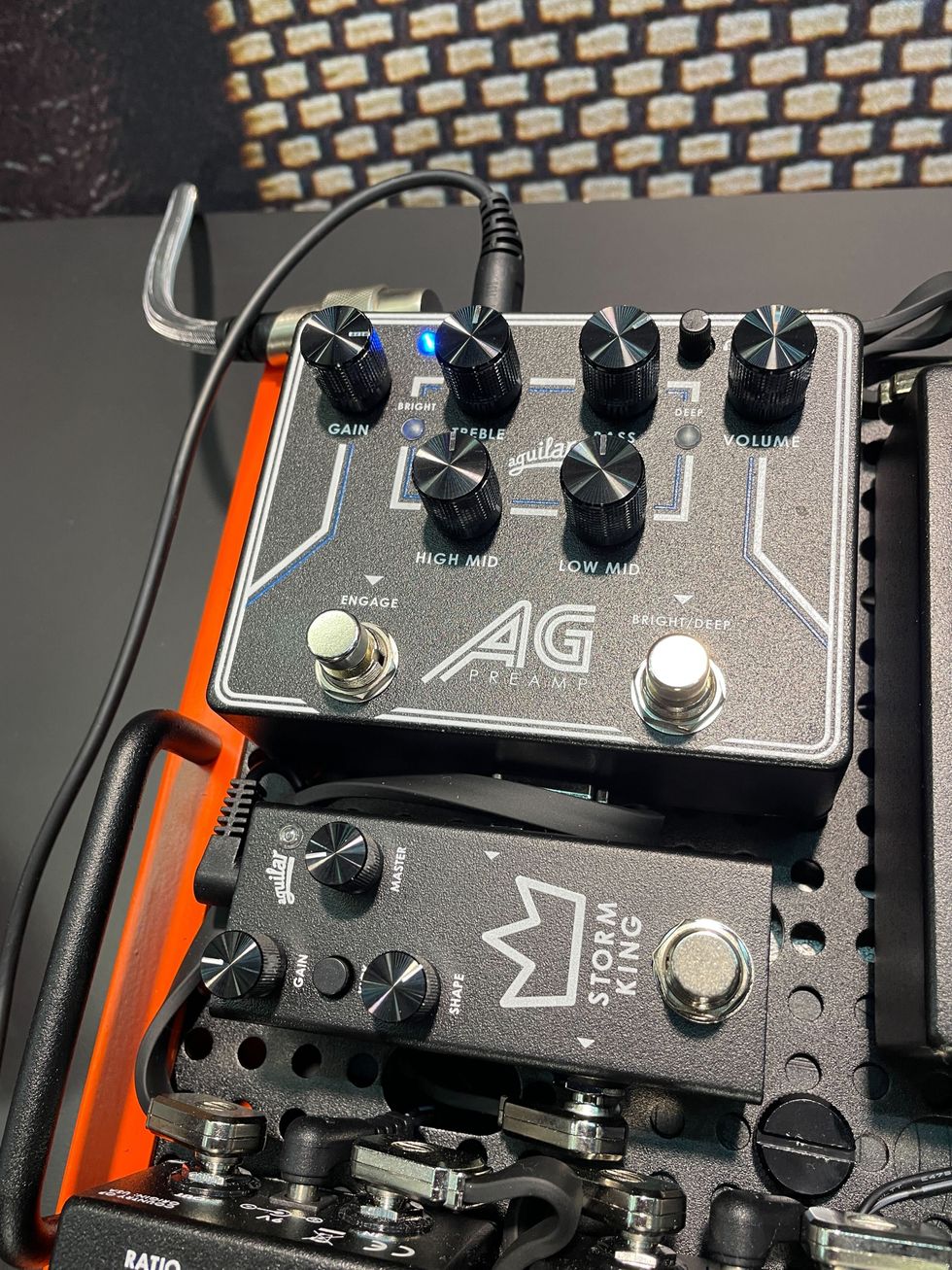
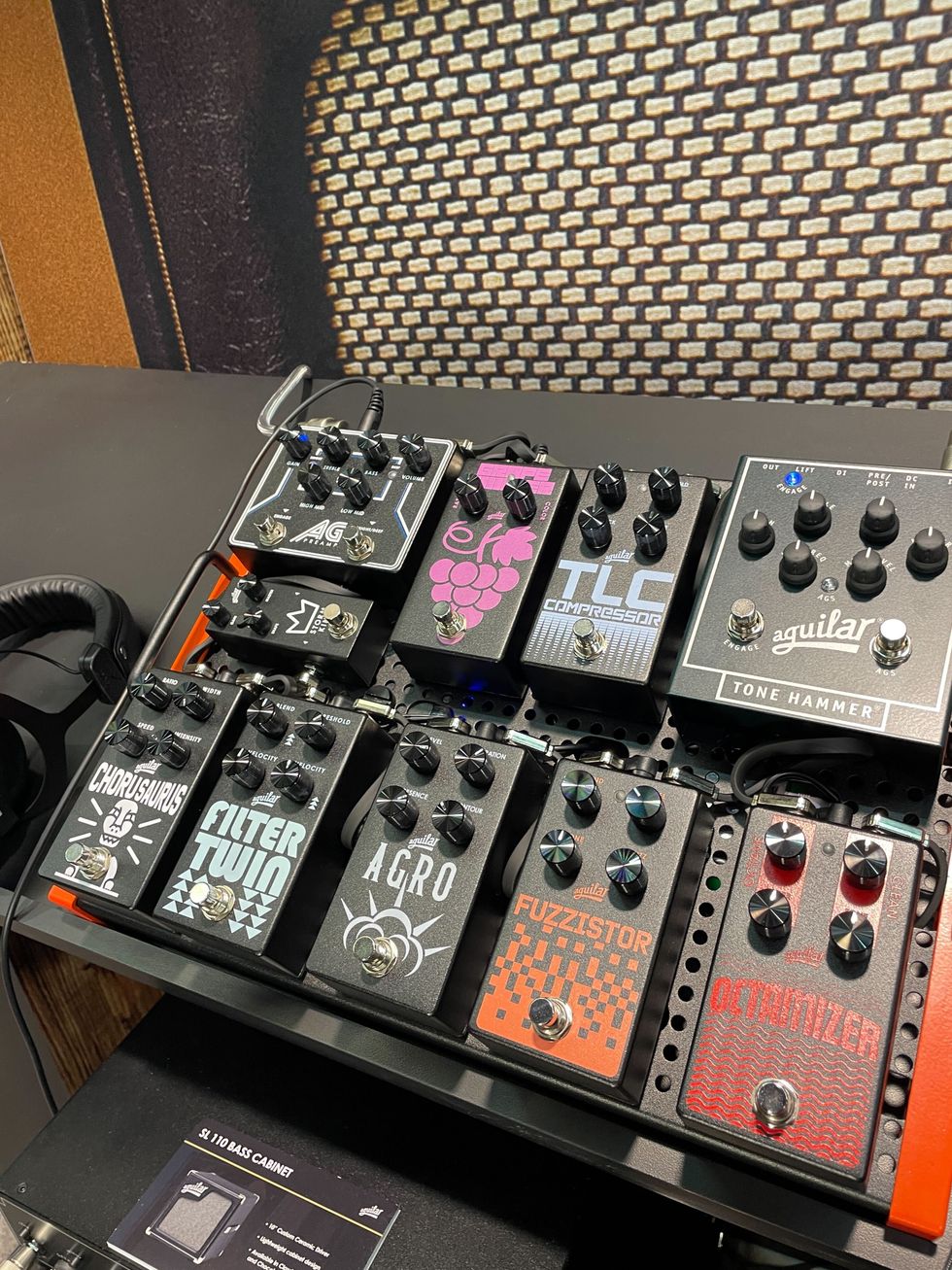
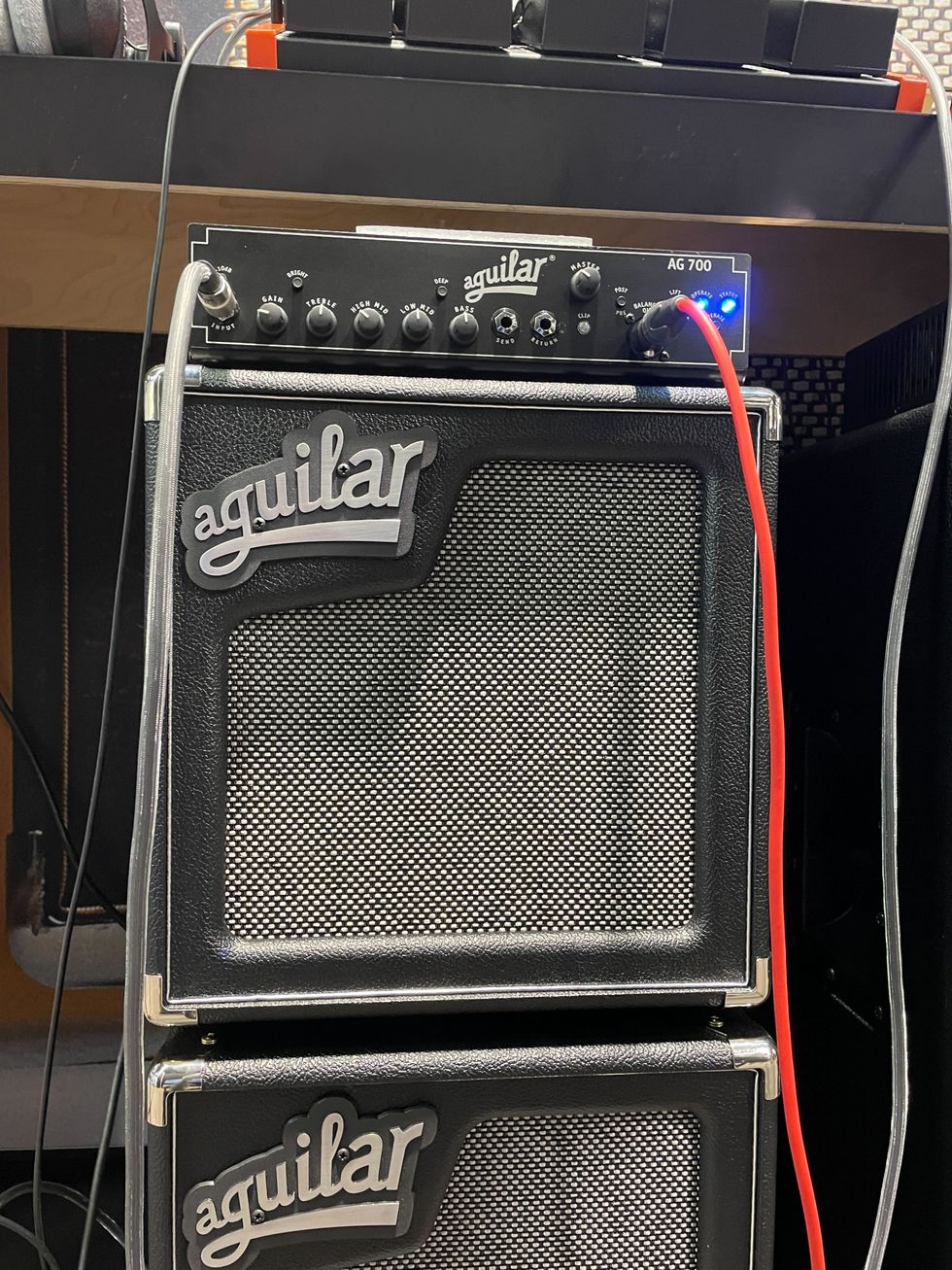
Darkglass Combo 500
The new combos from Darkglass cover analog and digital tones. Both the Infinity and Microtubes 500 combo are chock full of sounds, plus they look great, and come in 2x10 and 1x12 arrangements. The line starts at $1,099 and will be available starting late March.
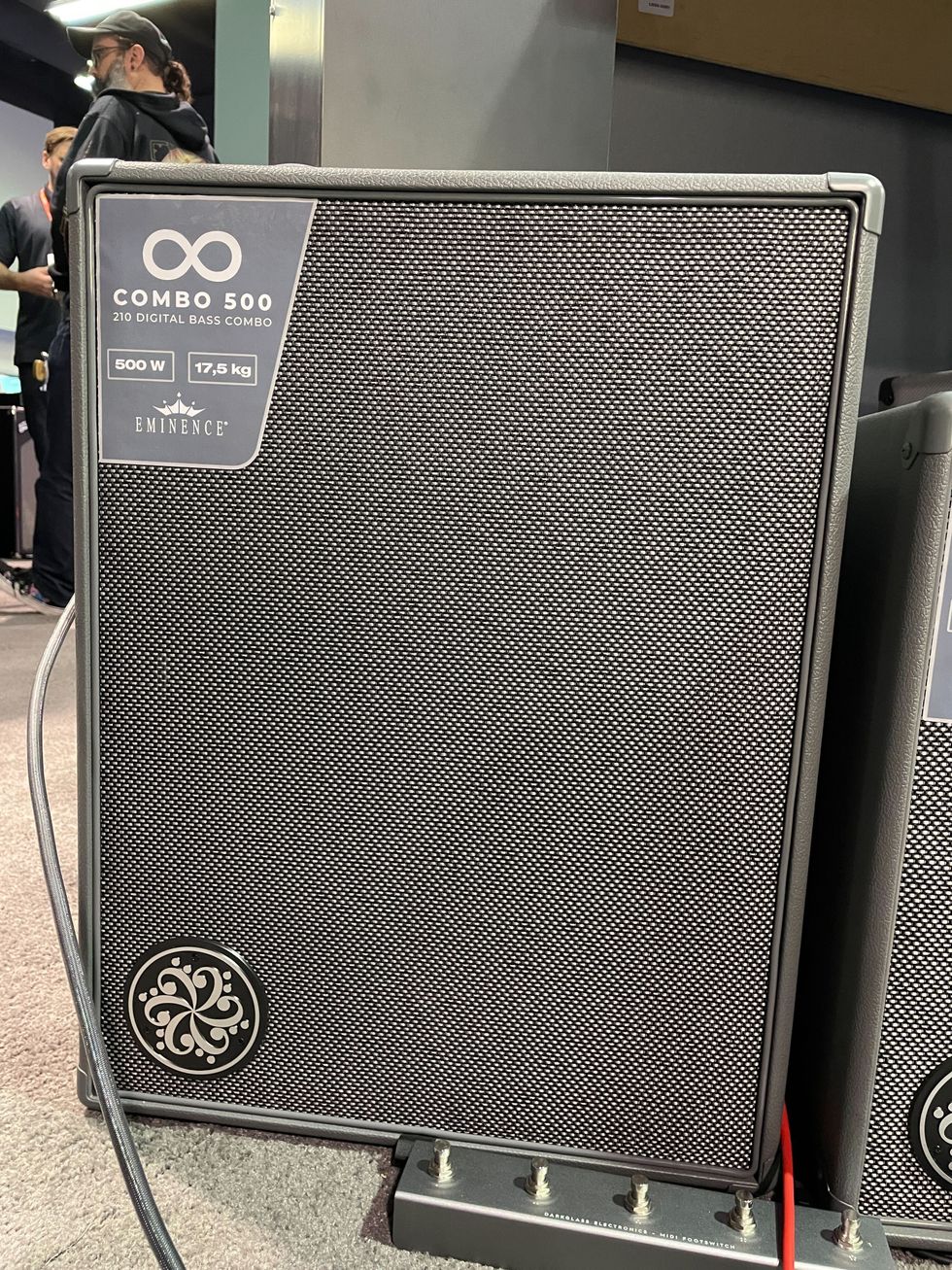
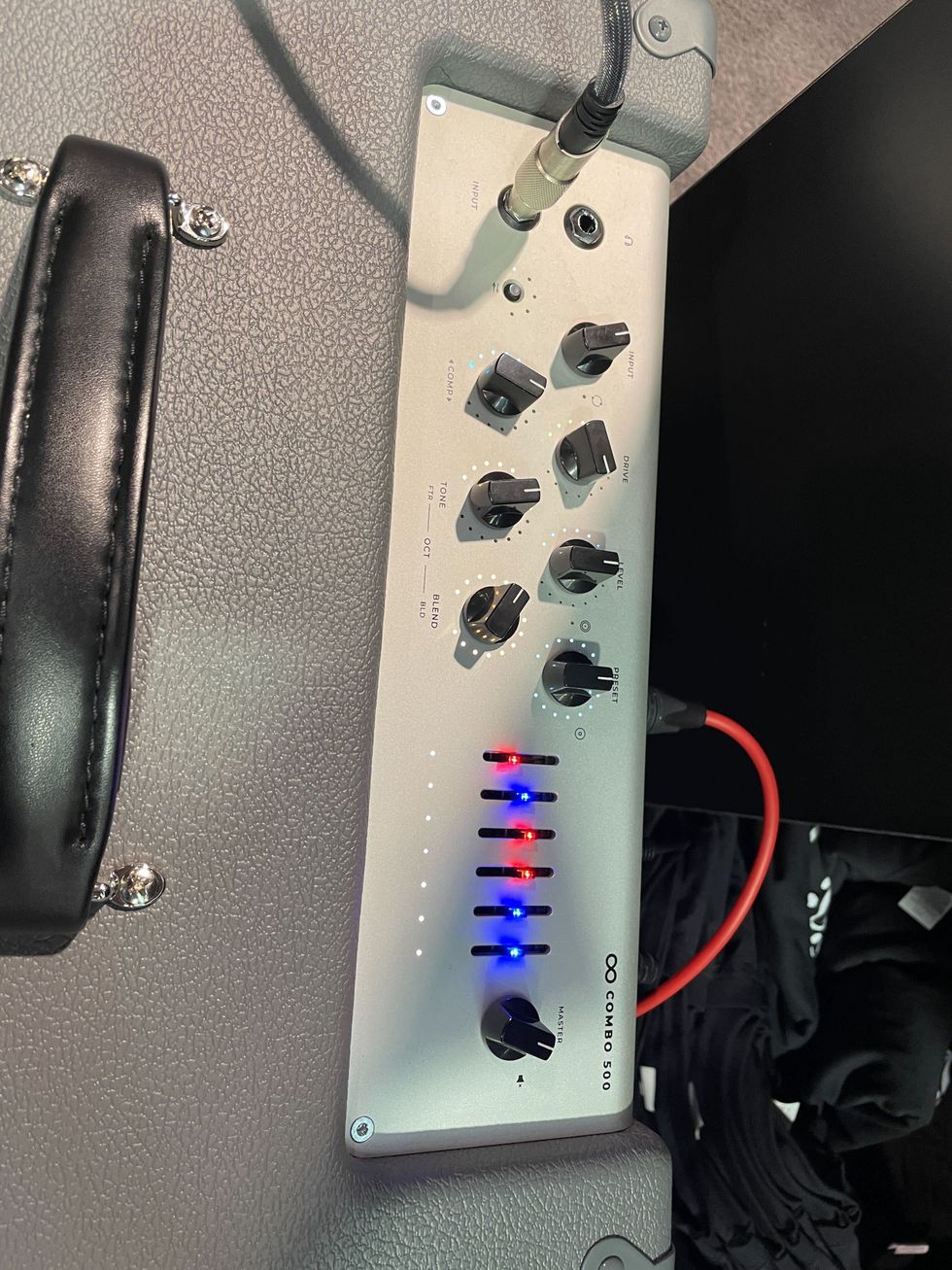

Huss & Dalton Electric Guitars
You know Huss & Dalton from their rich history as a boutique acoustic builder, but their electric offerings are on display here at NAMM. With singlecut and doublecut options, they start around $5,000. To customize your own build, you’ll want to reach out to your dealer or direct to the company about wait times.
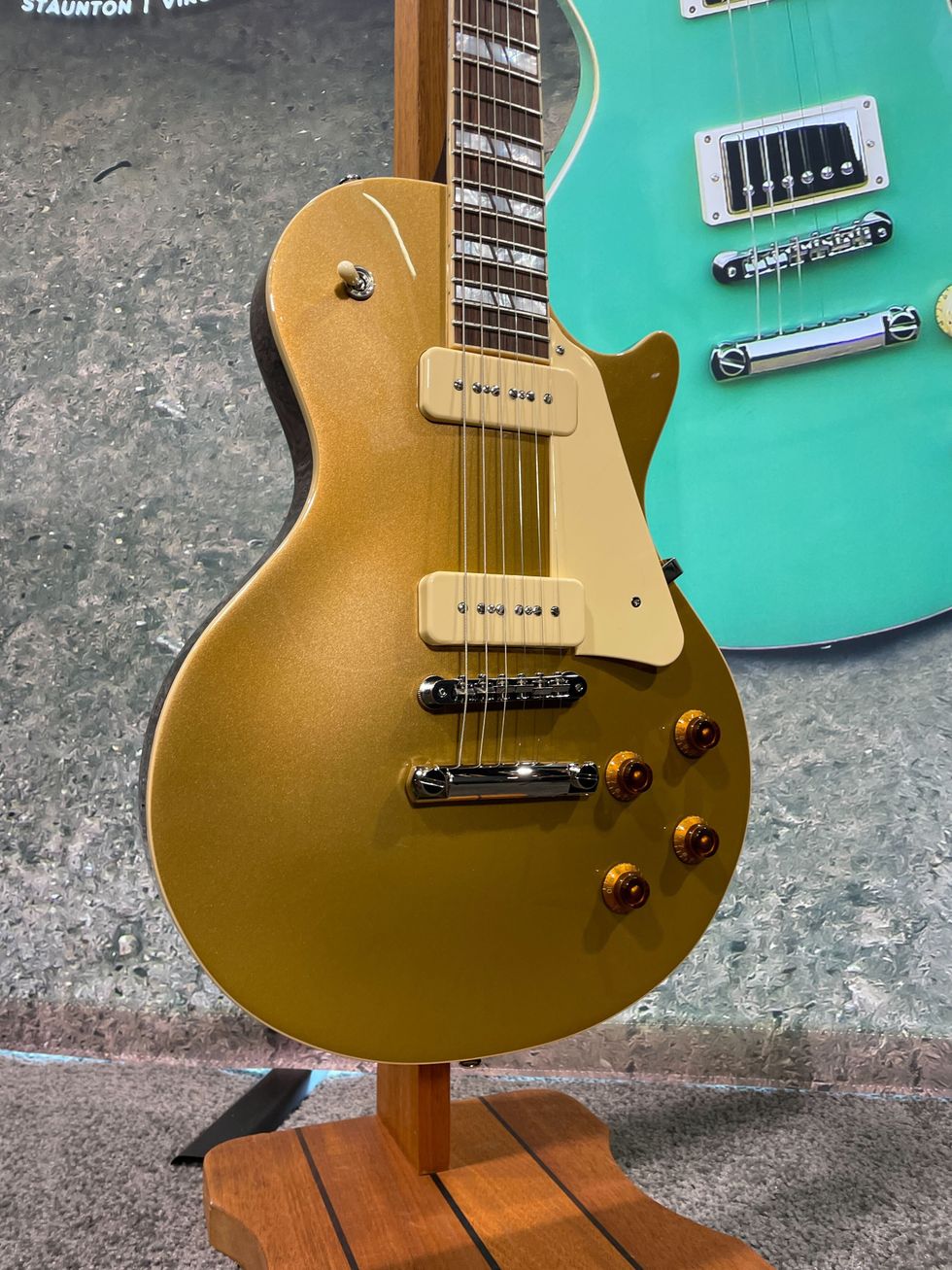
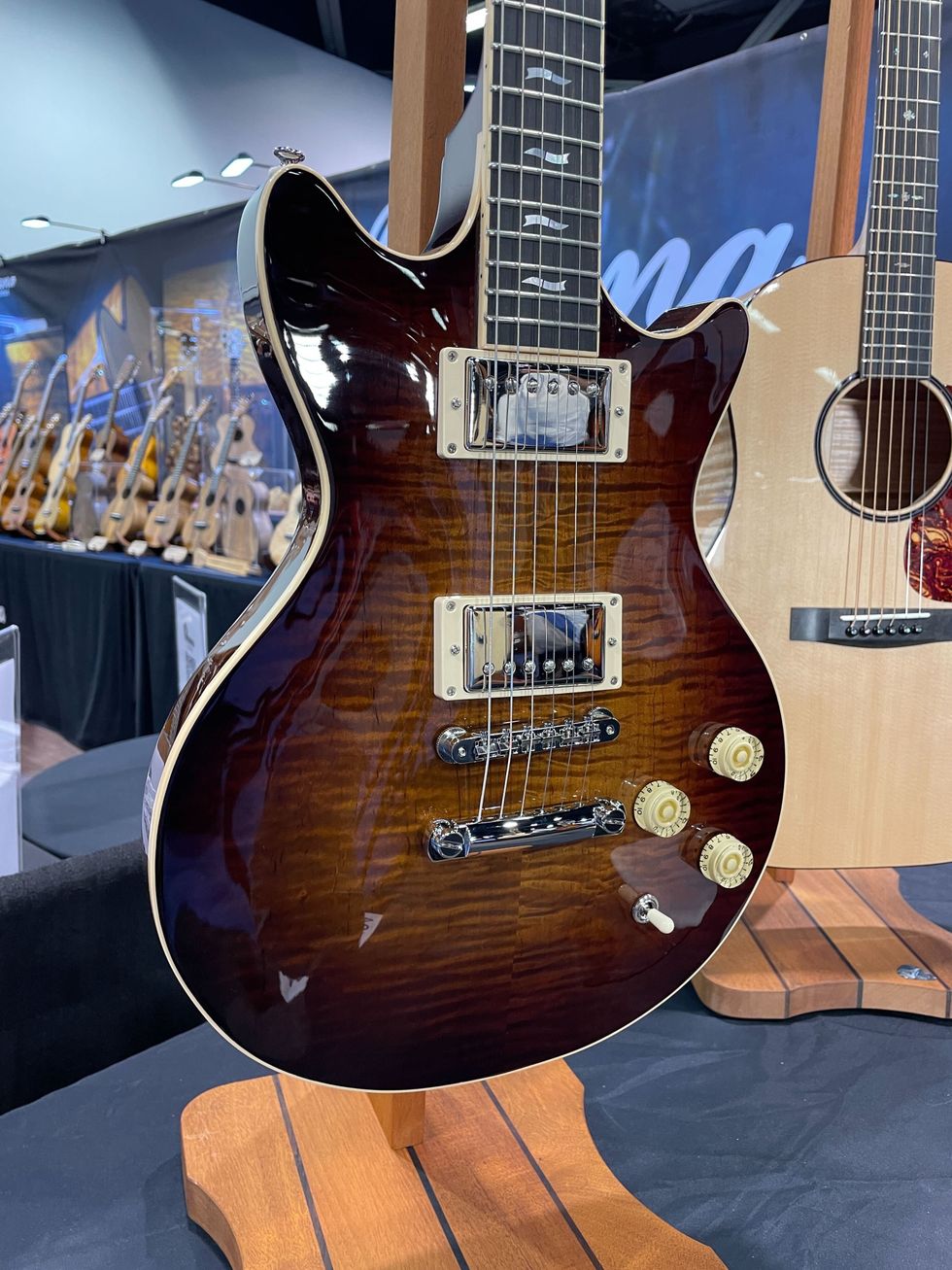
Seymour Duncan Powerstage 100 Stereo

Seymour Duncan’s Powerstage 100 Stereo takes their portable—and lightweight!—line of power amps to the next level with more power, more EQ, and, of course, stereo capabilities! Priced at $599, they’re available now.
Positive Grid's Spark Live
Positive Grid’s Spark Live delivers the sounds you love from the company’s other offerings into a 4-channel PA that’s ready to take on any instrument you want to give it. Pre-orders are open now at a special price of $499.
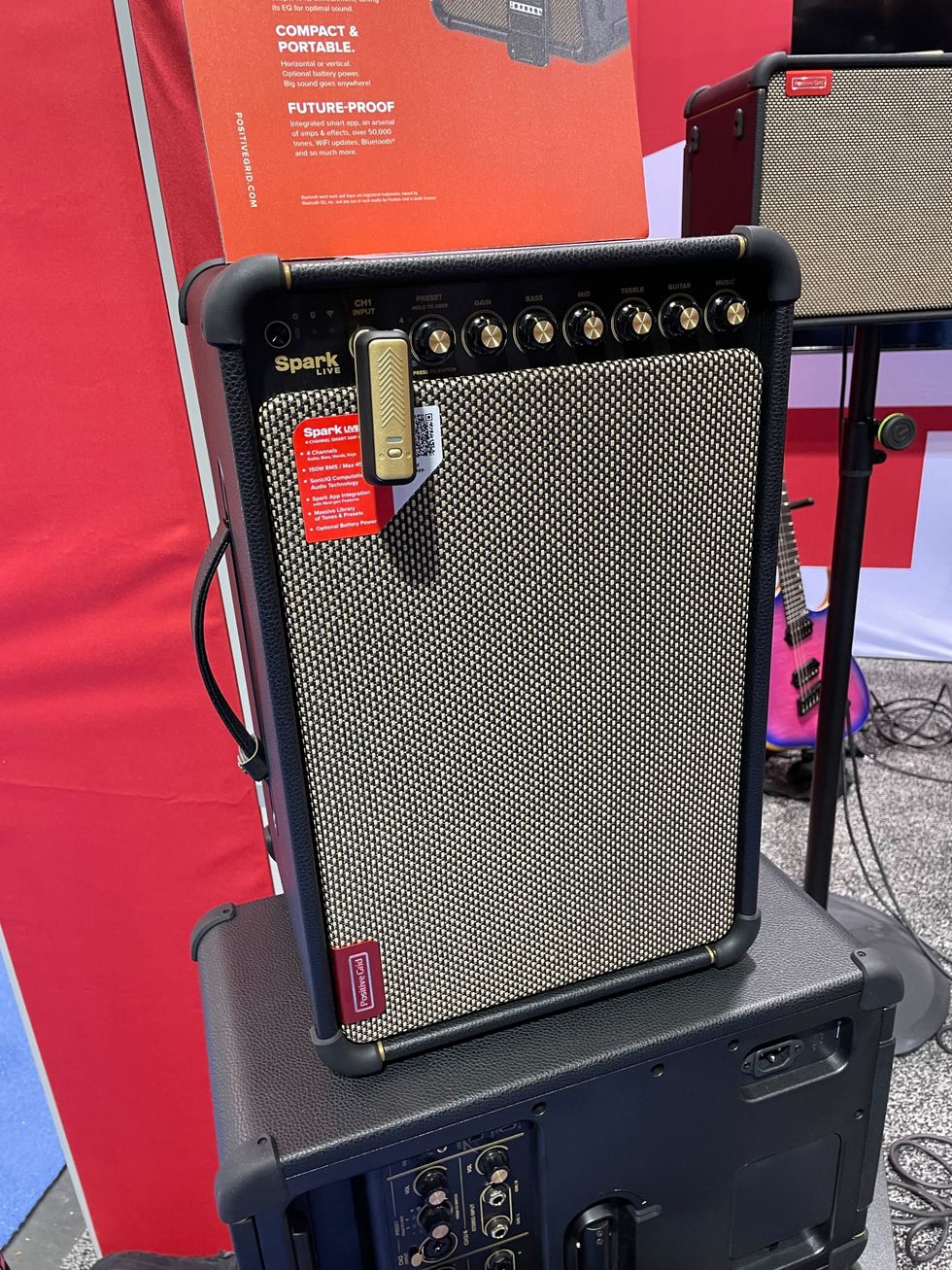
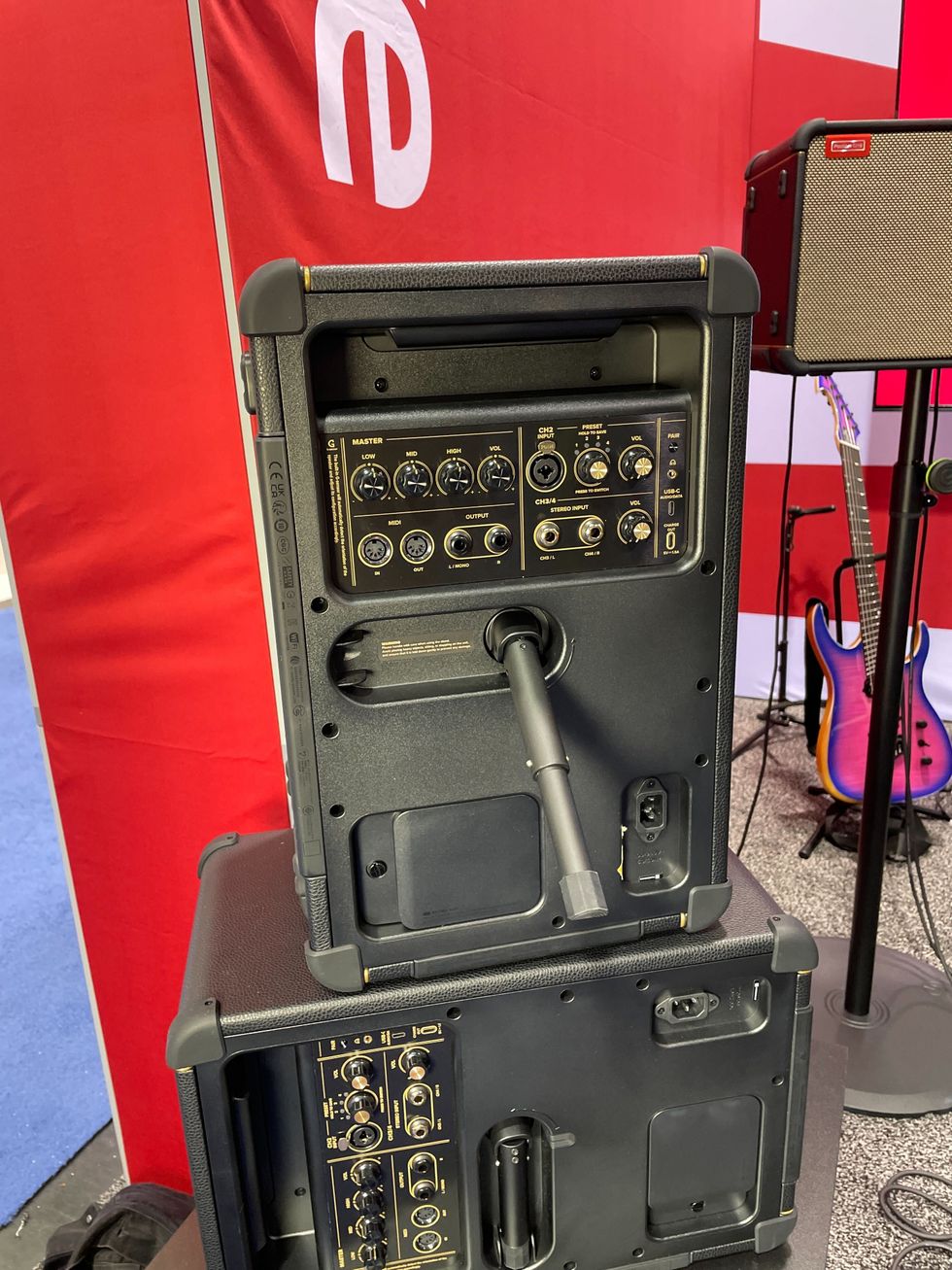
NUX B-8
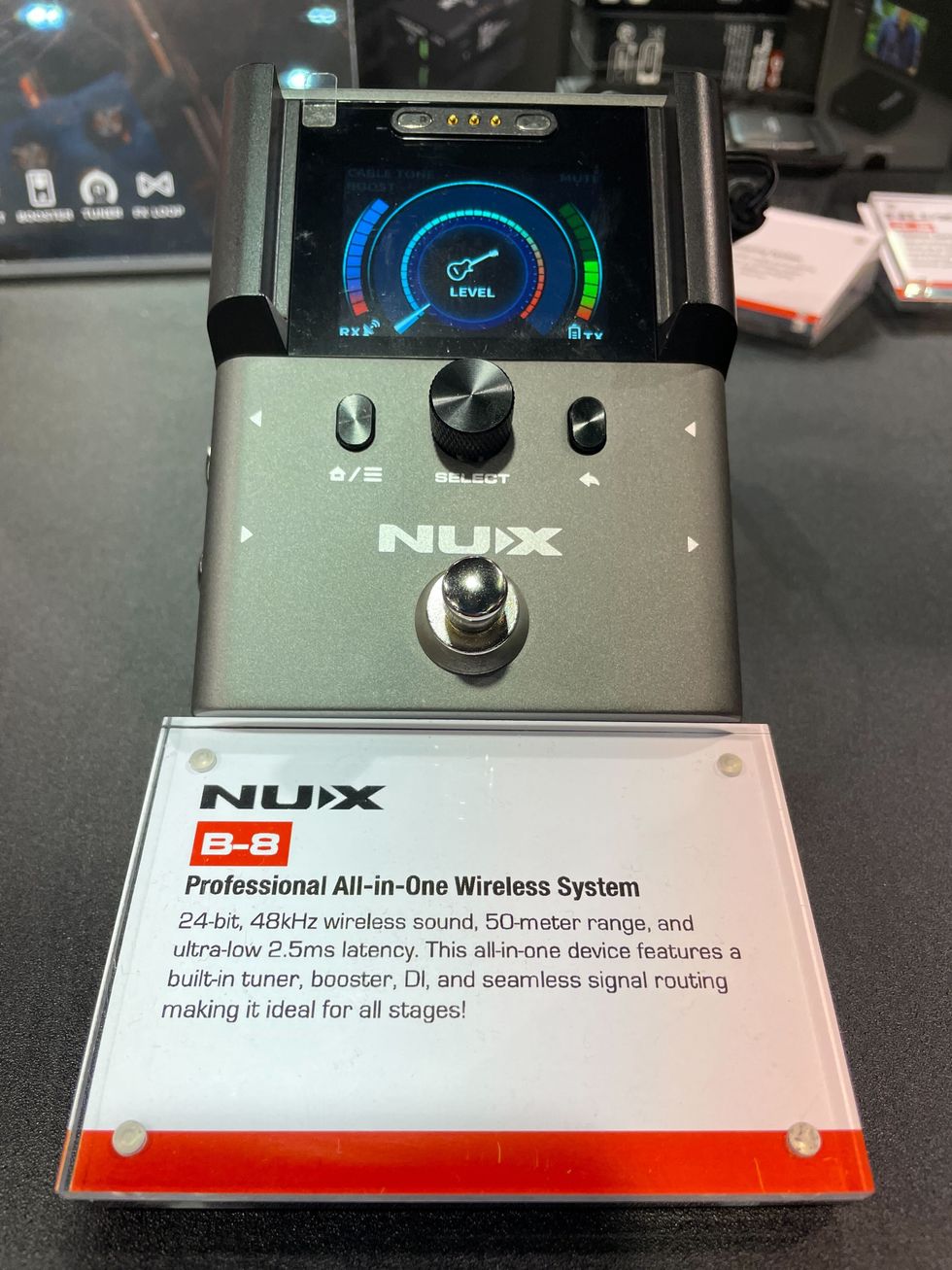
The NUX B-8 brings advanced wireless capabilities straight to your board with 160 foot range. Features include tuning and boost capabilities and loads of screen options. Available now for $319 street.
Cherub Products
We were treated to a host of new products from Cherub, best known for their clip-on tuners, whose line ranges from tuner/metronome/hydrometer hybrids to multi-use capos and guitar tools.
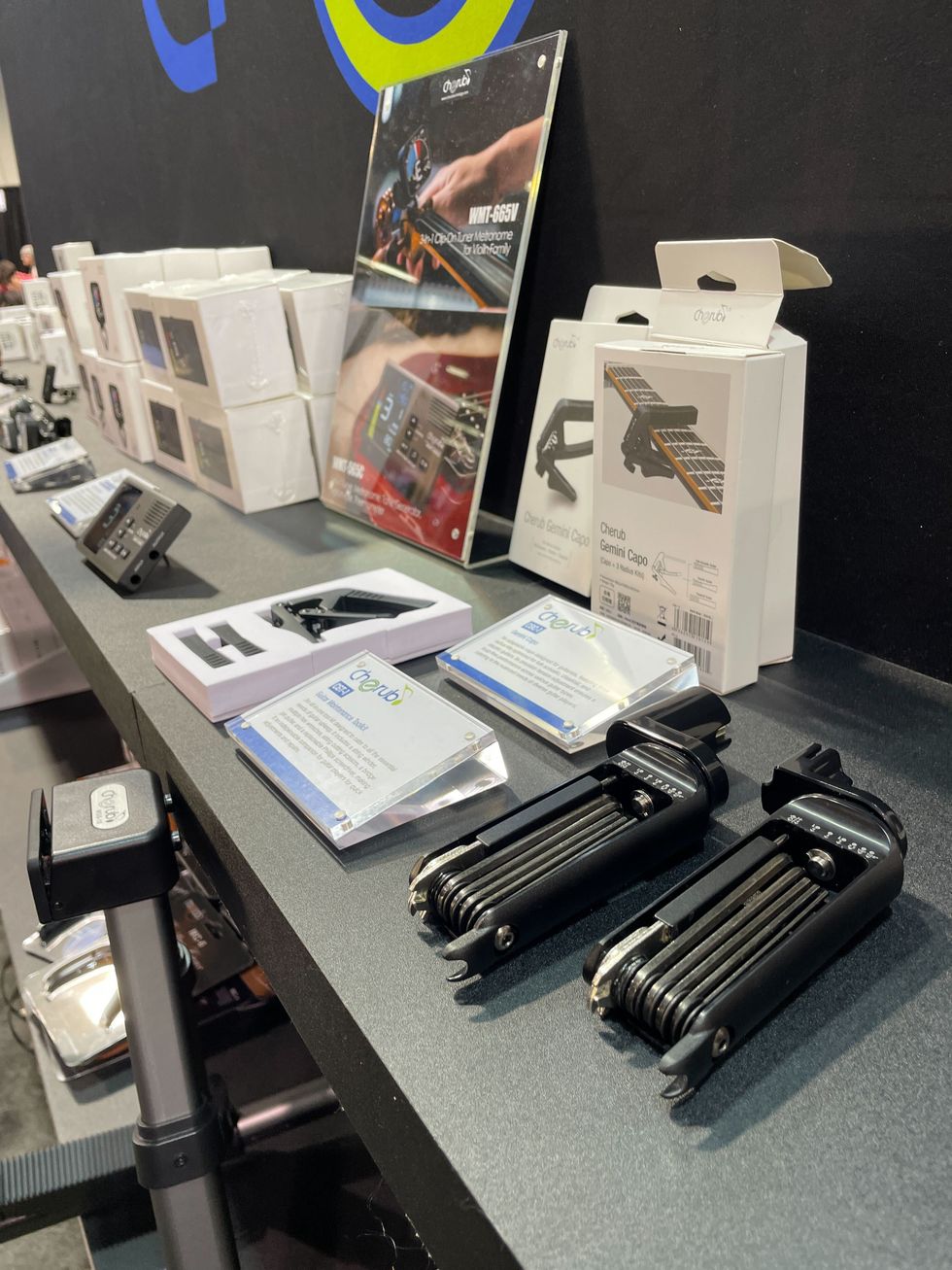
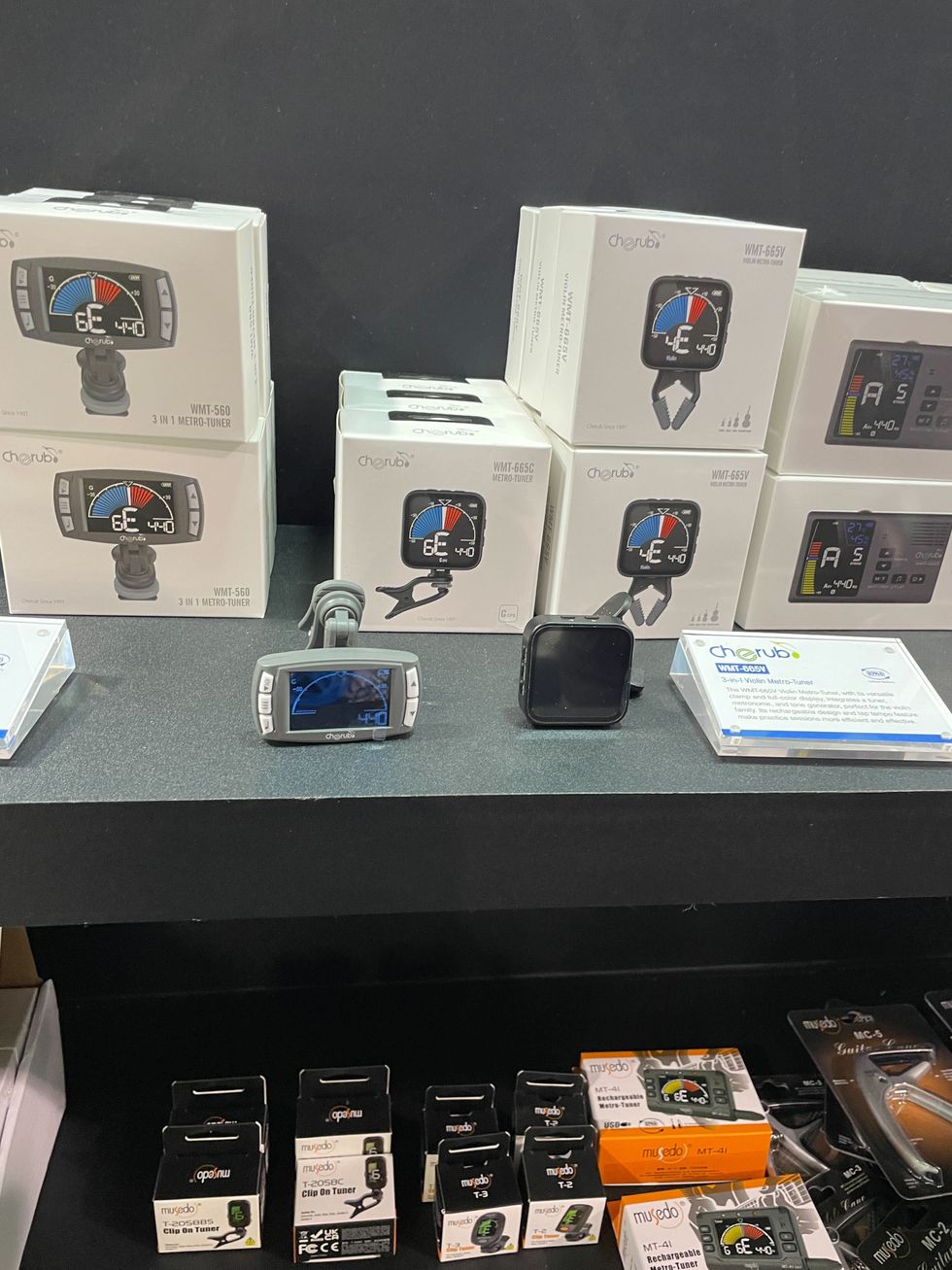
Mooer GE1000
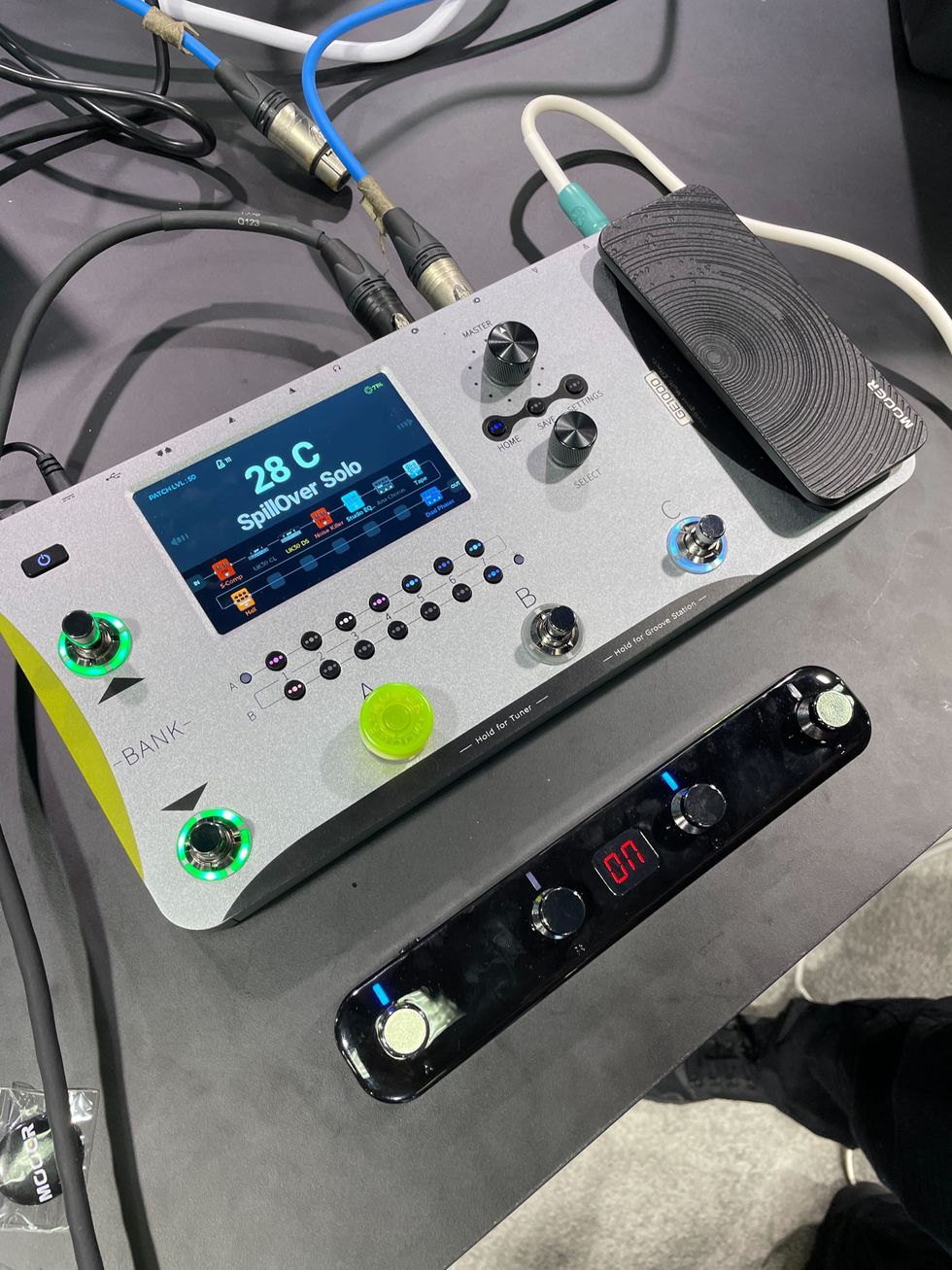
Mooer’s new GE1000 multi-effects unit delivers a multitude of stomp box functionality in a touchscreen-equipped unit with mappable expression pedal and Bluetooth capability. Priced at $528/$599 (battery powered), they’re available now.
Eko Marco Polo MM
The Eko Marco Polo MM is a travel-sized mahogany acoustic with big, warm sound. It’s open pore finish is inviting, as is its unique soundhole inlay. At $873, they’re available now.
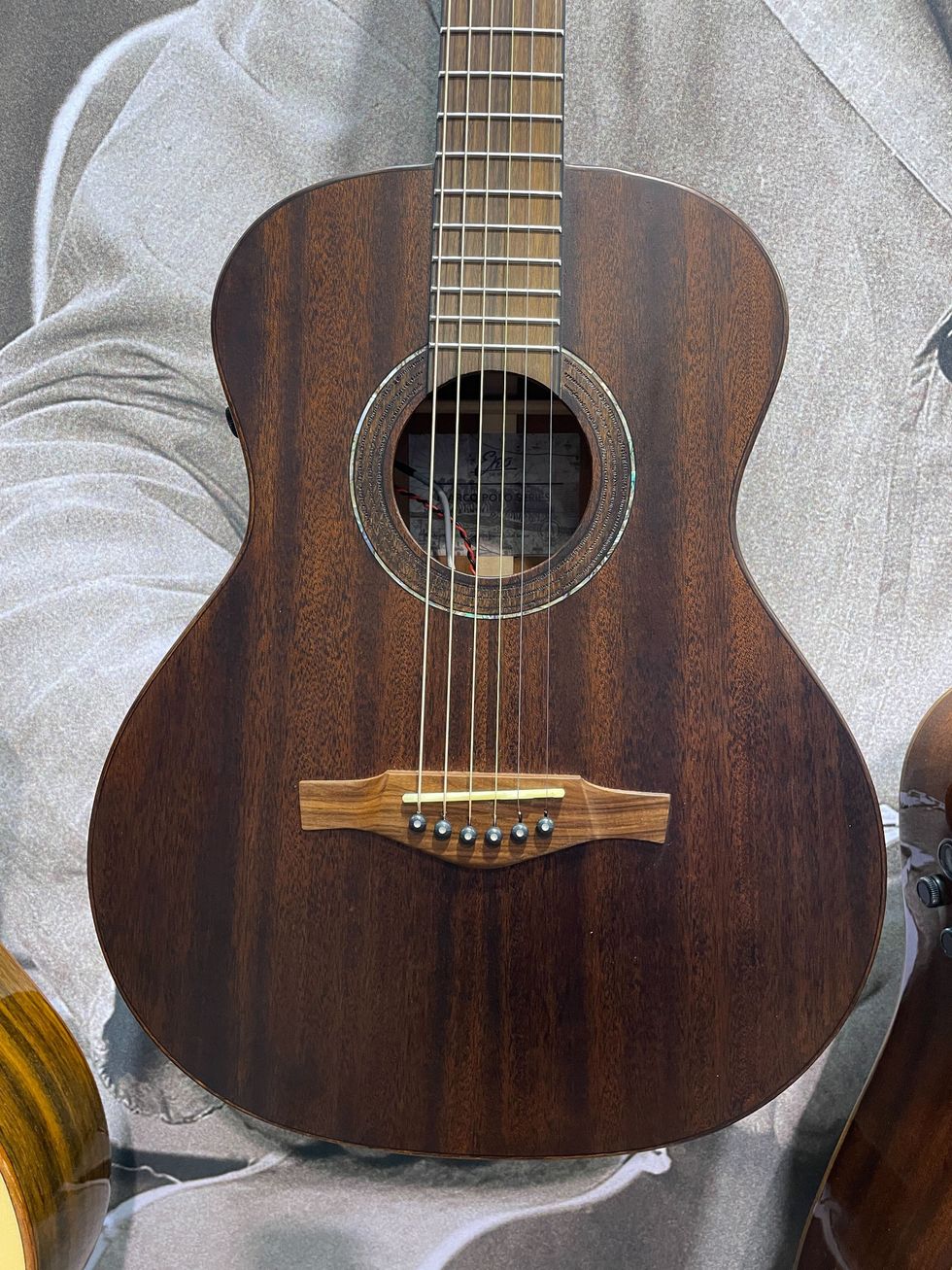
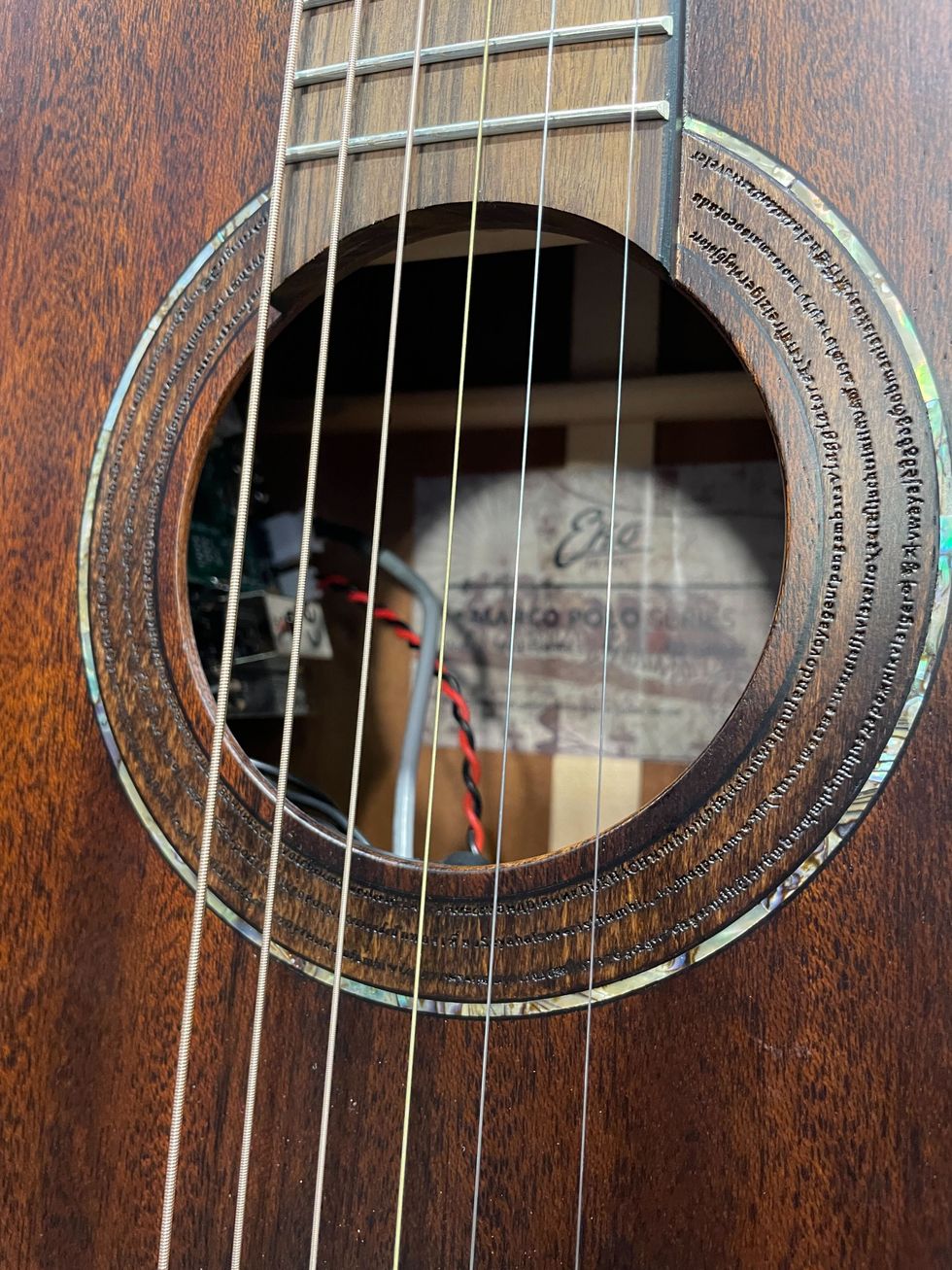
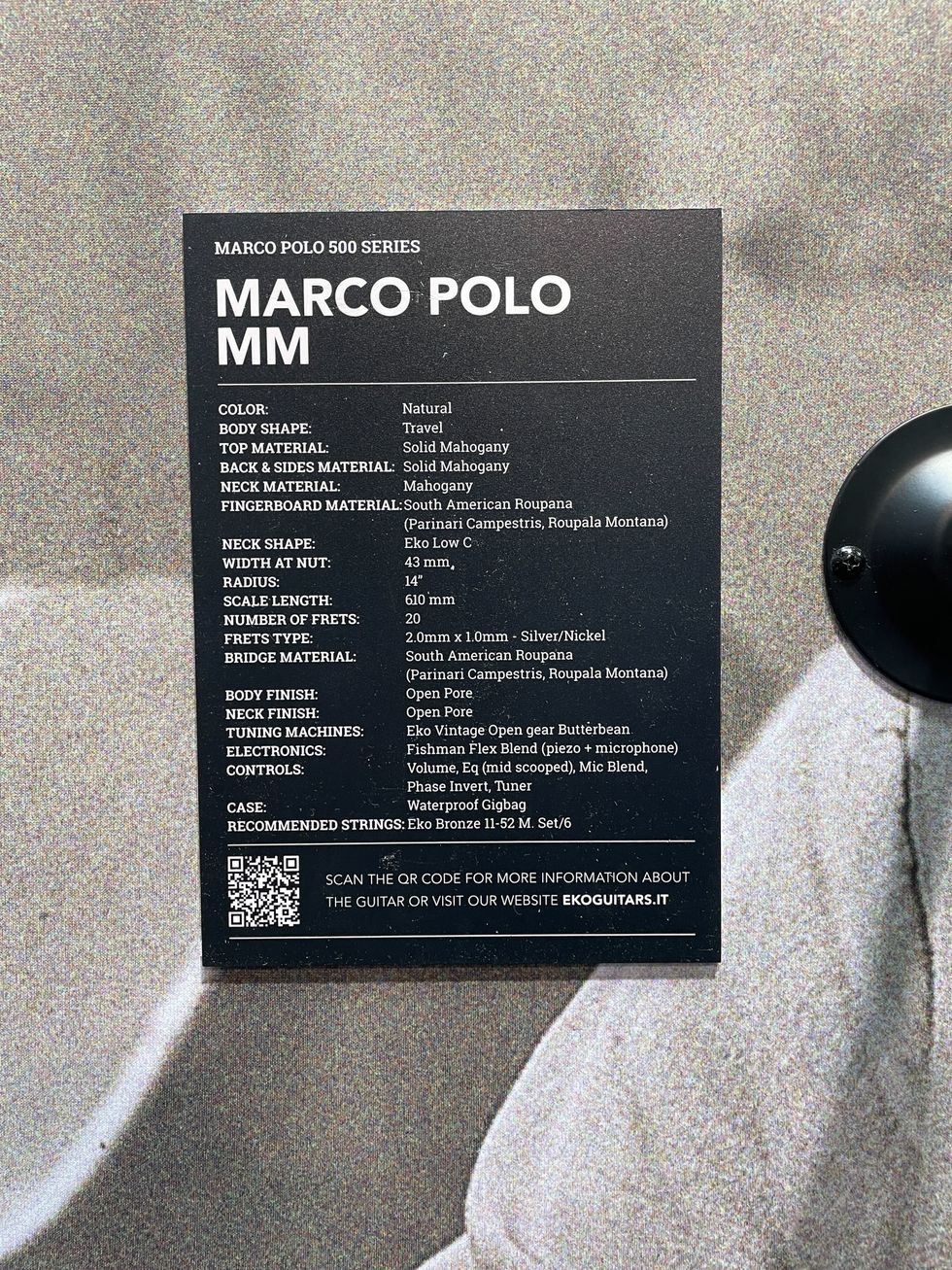
Eastman Henry James Signature Juliet
Over at Eastman, guitarist Henry James demoed his signature model. His version of the popular Juliet is a solidbody beast with Goldo vibrato, Seymour Duncan Vintage Mini-Humbockers, and a reverse headstock. They’re coming spring 2024 at $2,099.
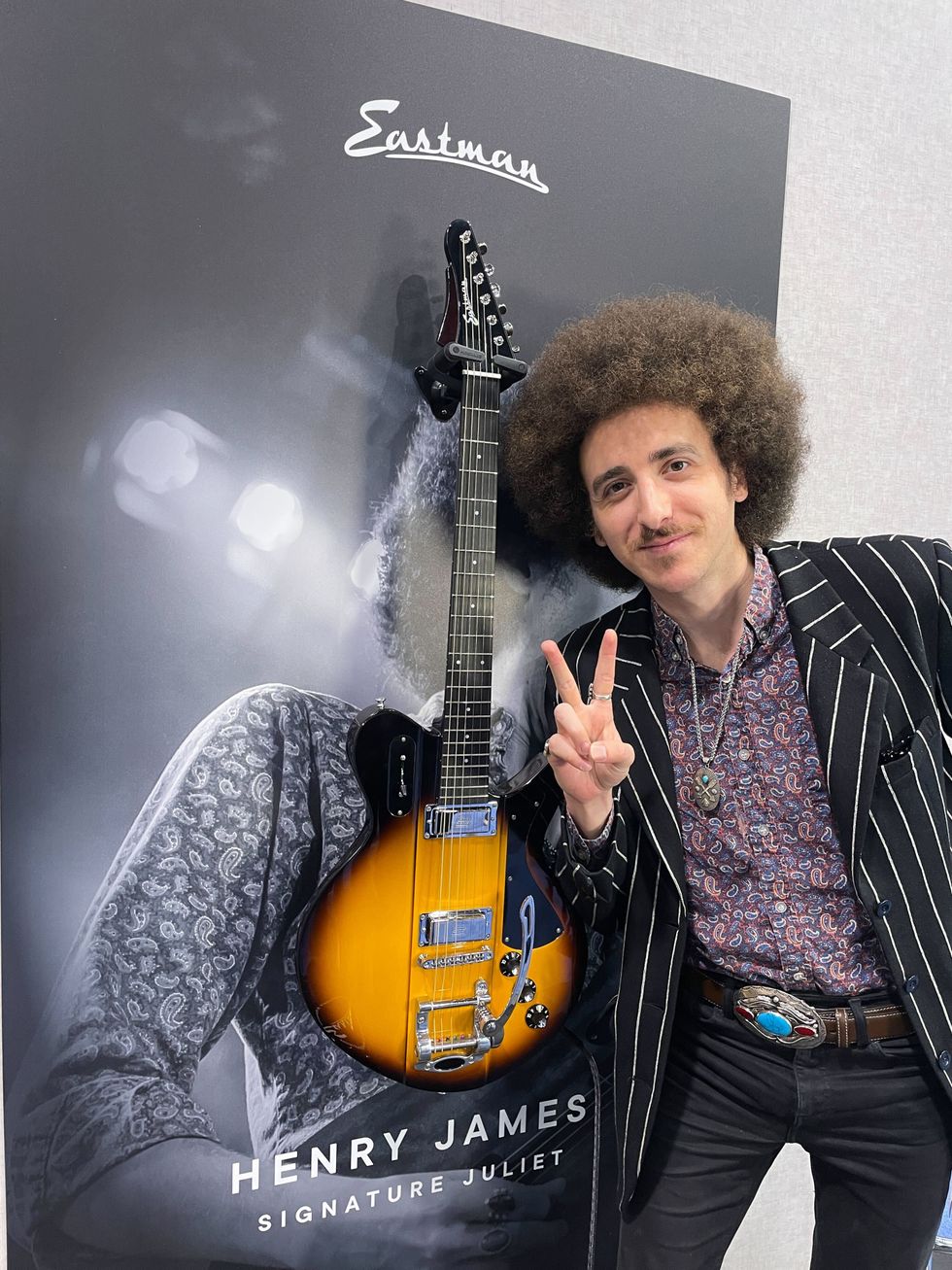

Lag Sauvage DCE
Lag have set their sites on sustainabilty, using smoked raw eucalyptus—an invasive species that needs to be harvested—for the striking back and sides of the Sauvage DCE. These affordable solid-top BrankoWood acoustics—starting at $420–offer a sound as warm as they look, with onboard electronics. Available in Europe, they’ll be in the U.S. soon.
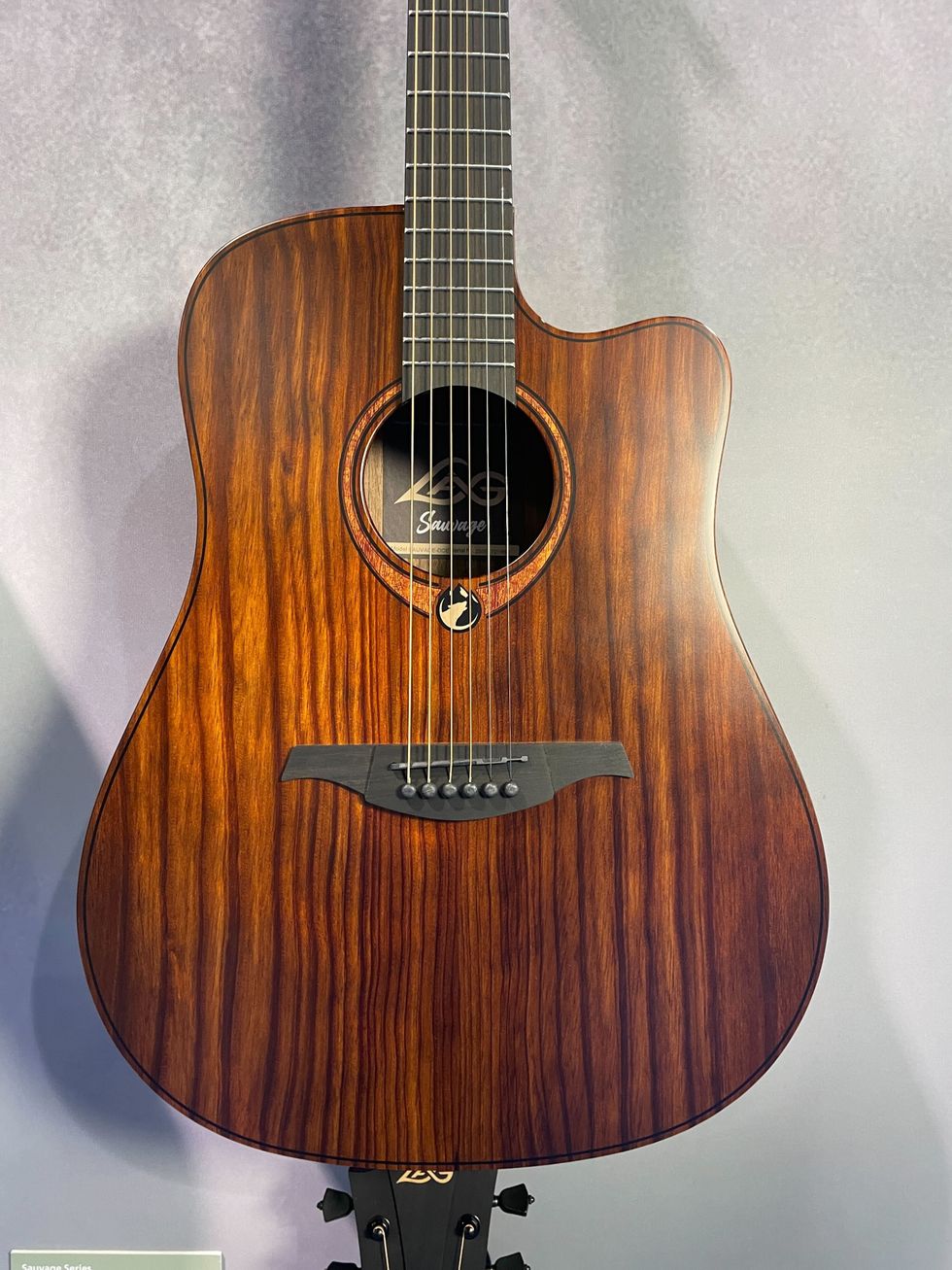
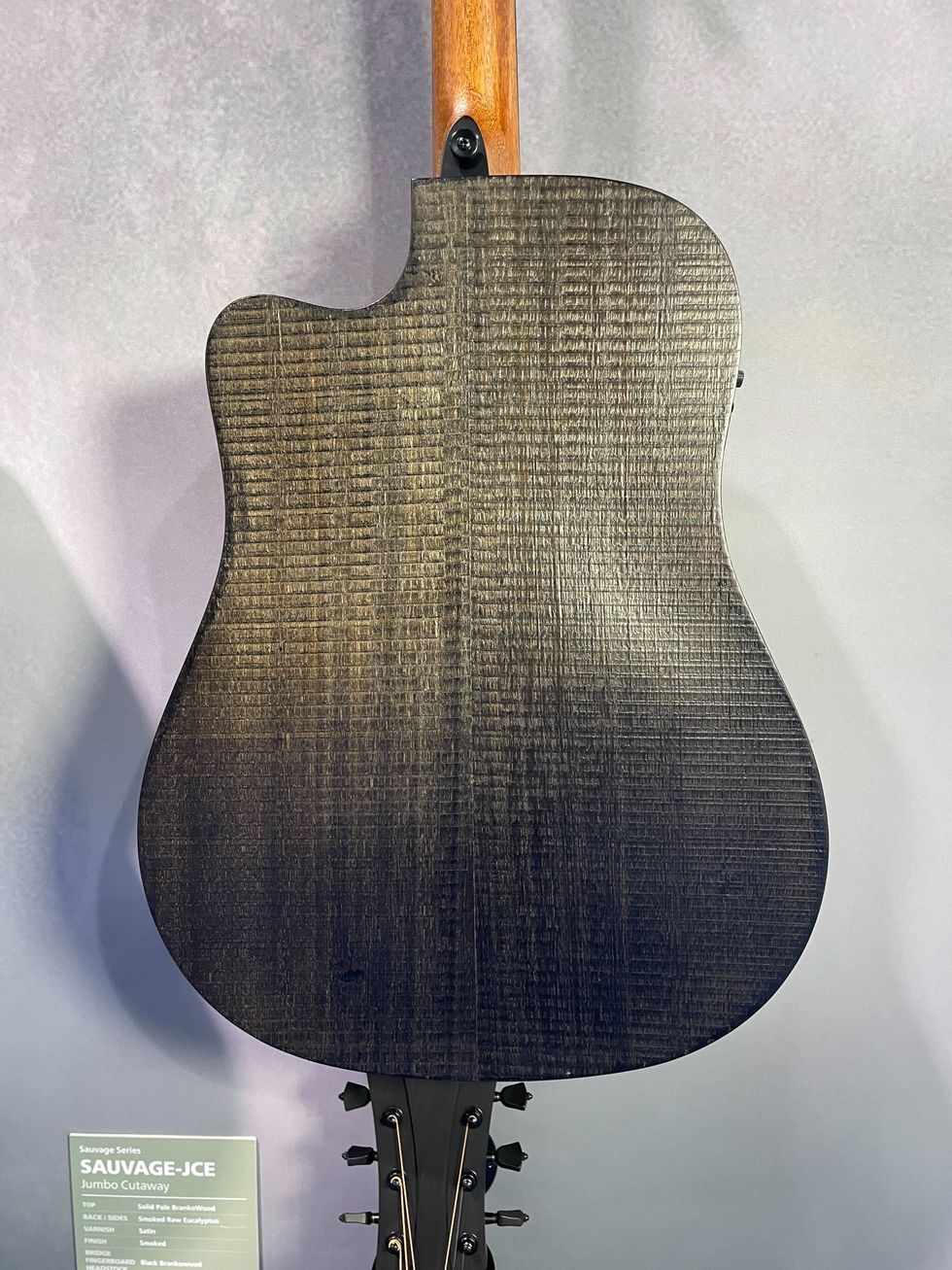
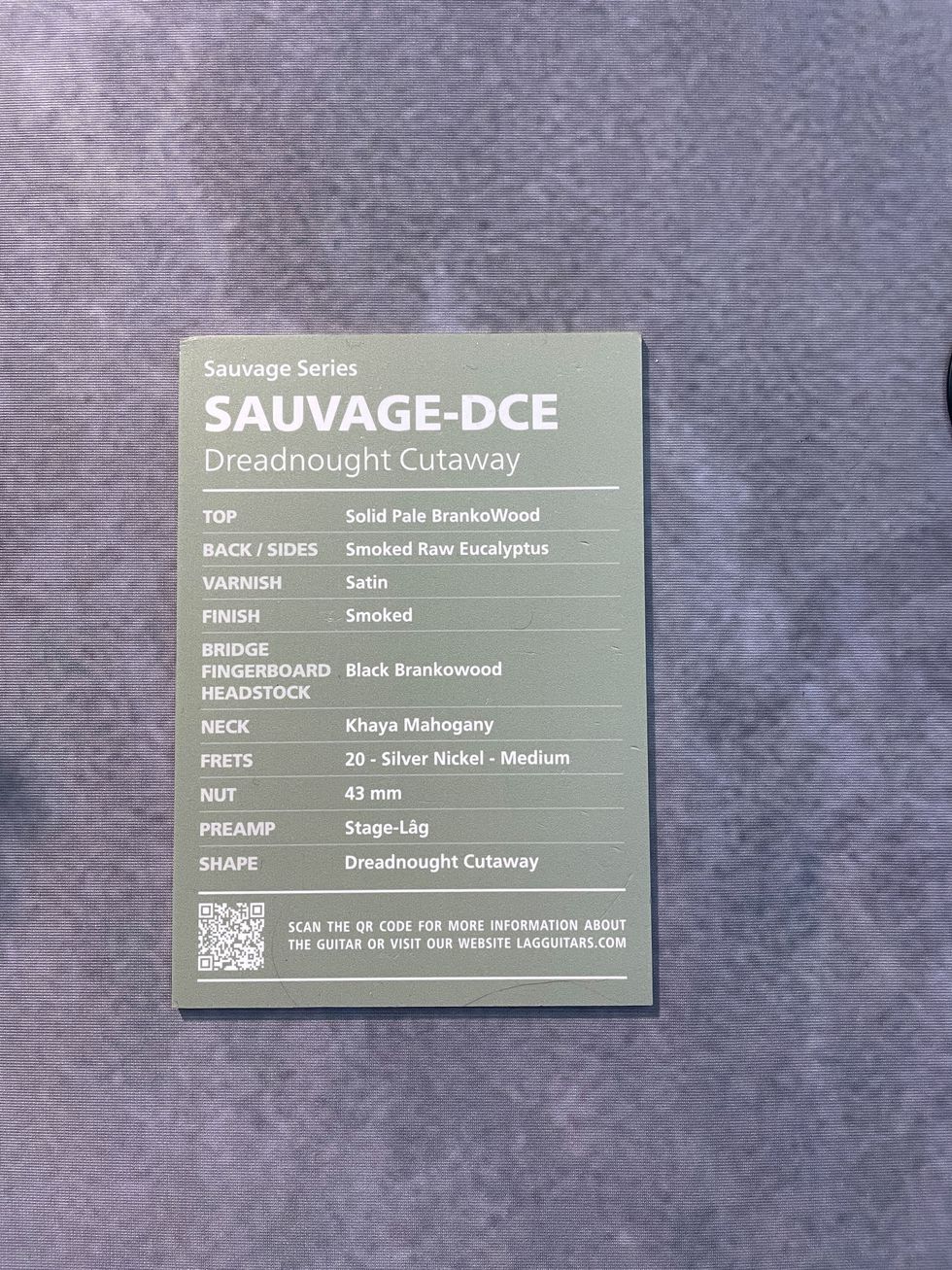
Red Panda Radius
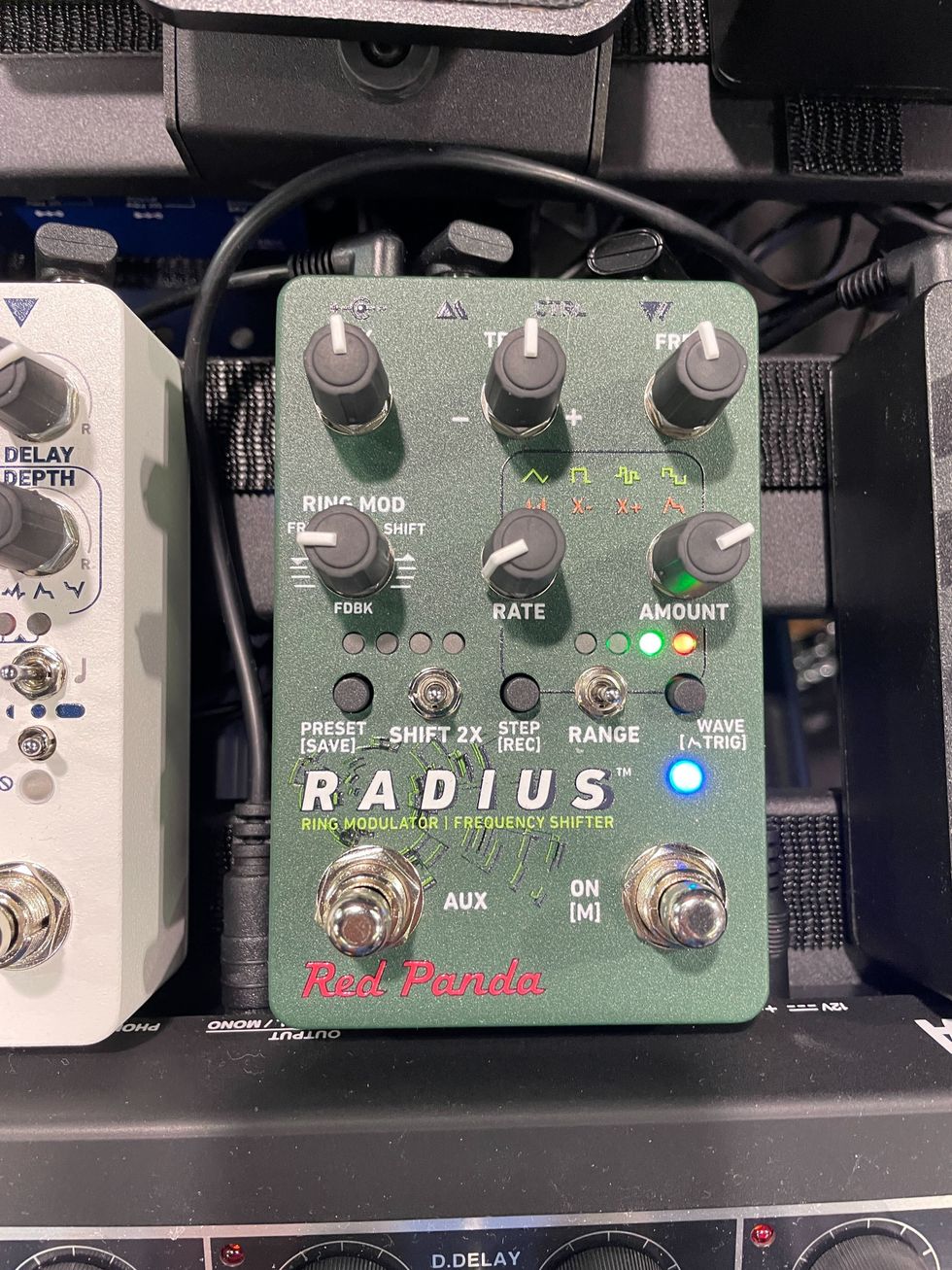
Red Panda’s new Radius pedal has loads of deep tones to discover. Ostensibly a ring mod/frequency shifter, its unique controls will allow you to head to the outer limits with phase-shifting, tremolo sounds, and much, much more! Priced at $349, they’re available now.
Balaguer Select Custom Guitars
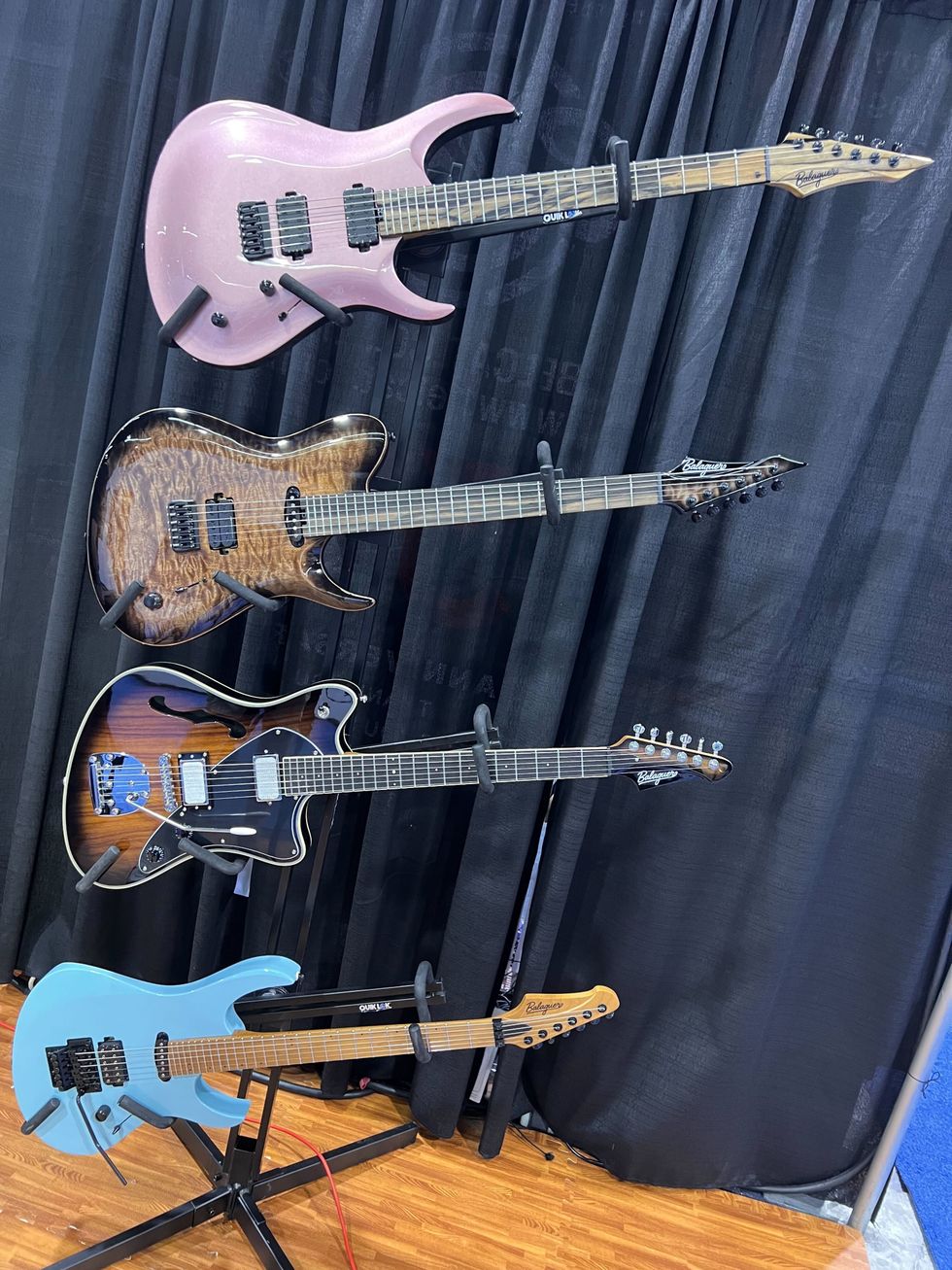
Balaguer Guitars just announced their Select Custom line of highly customized models based on their existing body shapes. Customers can choose scale length, wood, binding, finish, and electronics. All at fairly reasonable prices. You can head over to their website now to play with their online guitar designer.
Santa Cruz Vault Series
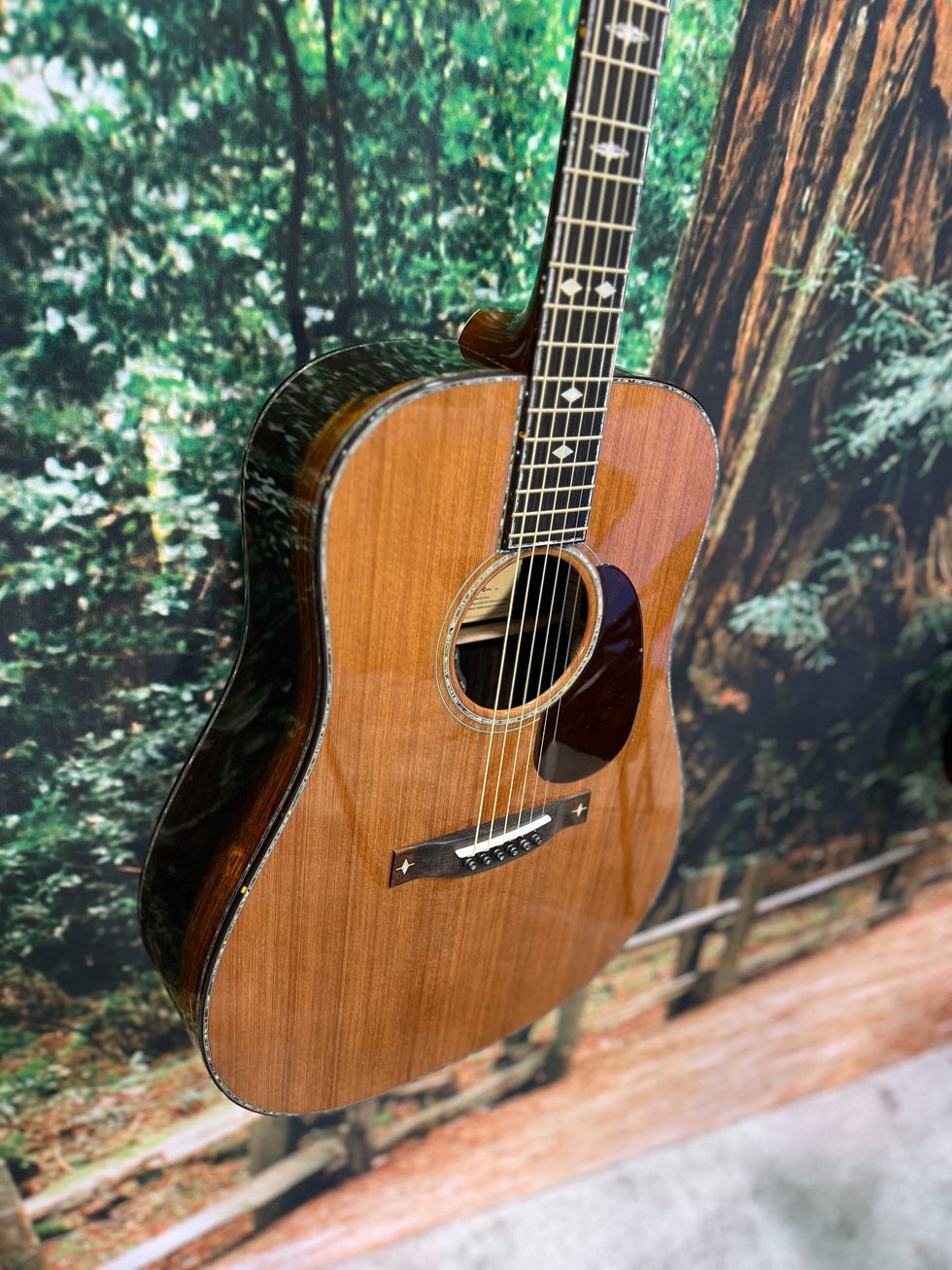
Santa Cruz’s Vault Series is built upon the idea of using very old reclaimed wood that master luthier Richard Hoover has been saving for decades. This D-style model uses Brazilian Rosewood from the Bryn Athena Cathedral for the back and sides and master grade Fort Ross Chapel redwood for the top. Nearly every part of this build is immaculate and the craftsmanship pushes the limits of modern lutherie. The price? $70,000.
Third Man Hardware and Donner Triple Threat
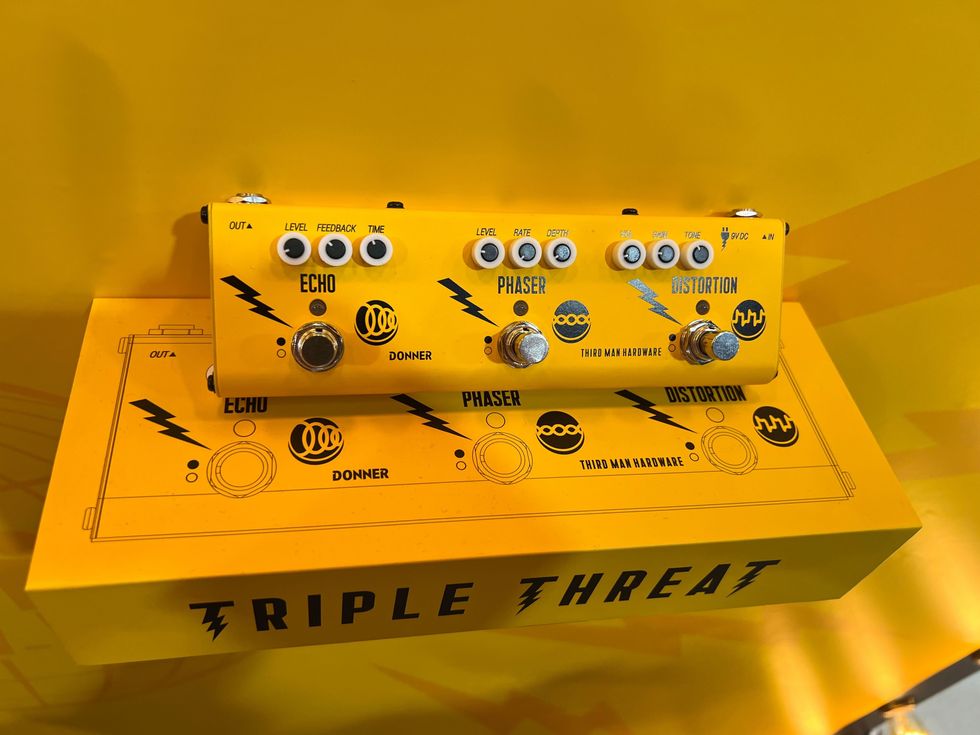
Donner and Third Man Hardware just released a new collaboration aimed at guitarists who need a simple and portable multi-effects solution. For $99 you get echo, phaser, and distortion.
Victory Amps MK Clean
Victory Amps brought two new models to the show. The MK Clean is a monster clean machine with loads of headroom, spring reverb, bright switch, and selectable EQ voicings. On the other side, the MK Overdrive is a 3-channel setup with independent gain controls, switchable volume levels, presence, and more. Production begins in March and they will go for around $5k.
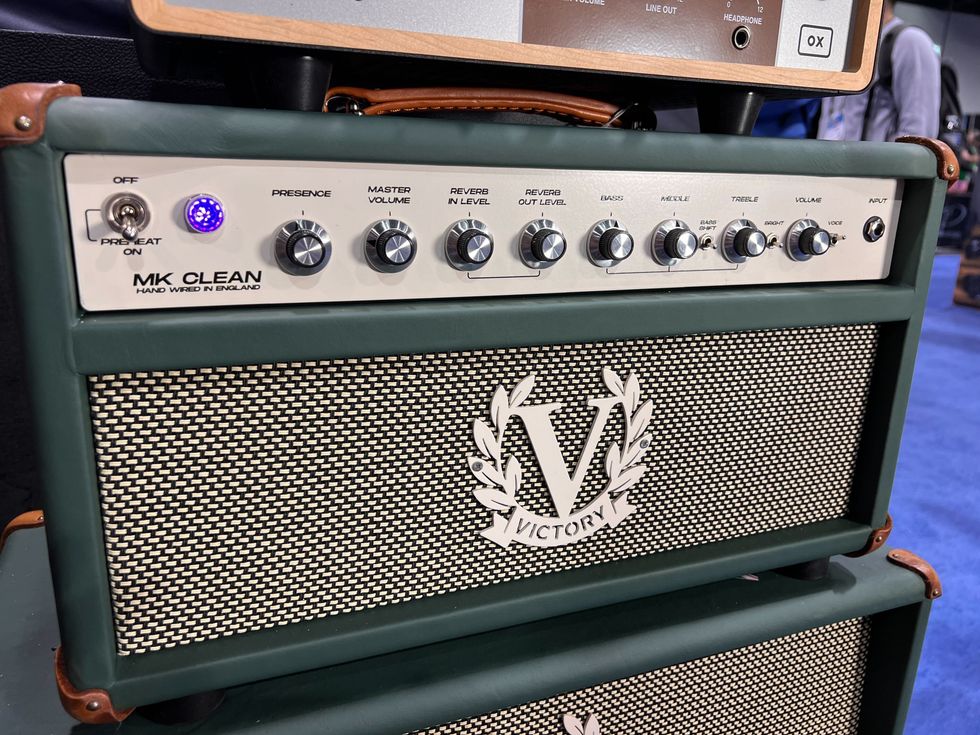
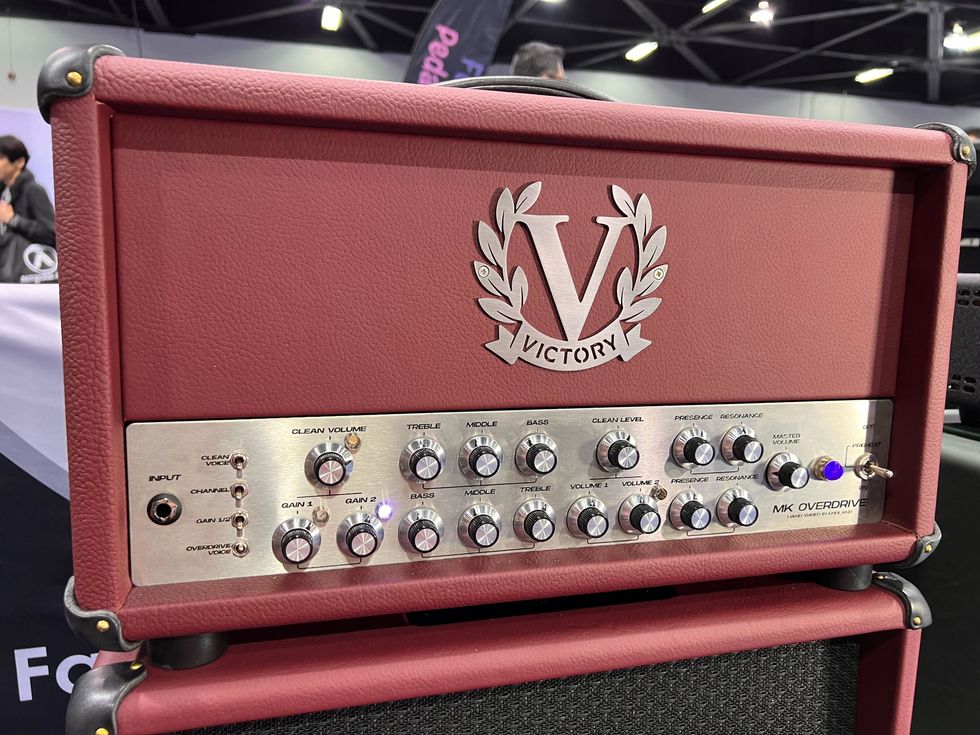
Collings Guitars
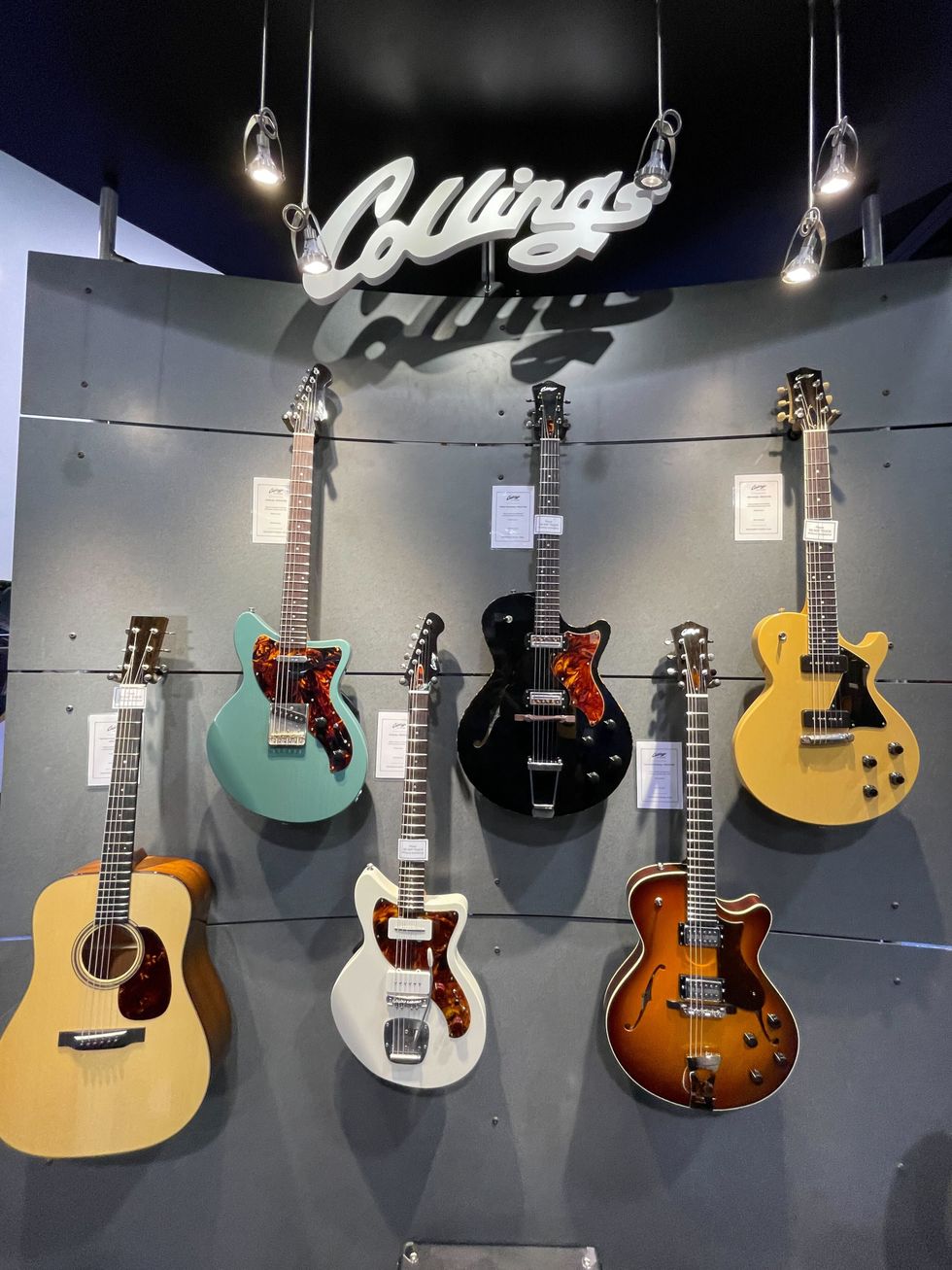
Collings is offering NAMM visitors a glimpse into some models to come, from sleek solidbodies to an all-new dreadnought. These prototypes aren’t available yet, but they’re here for everyone to get a peek at their vision for the future.
Two Notes Genome
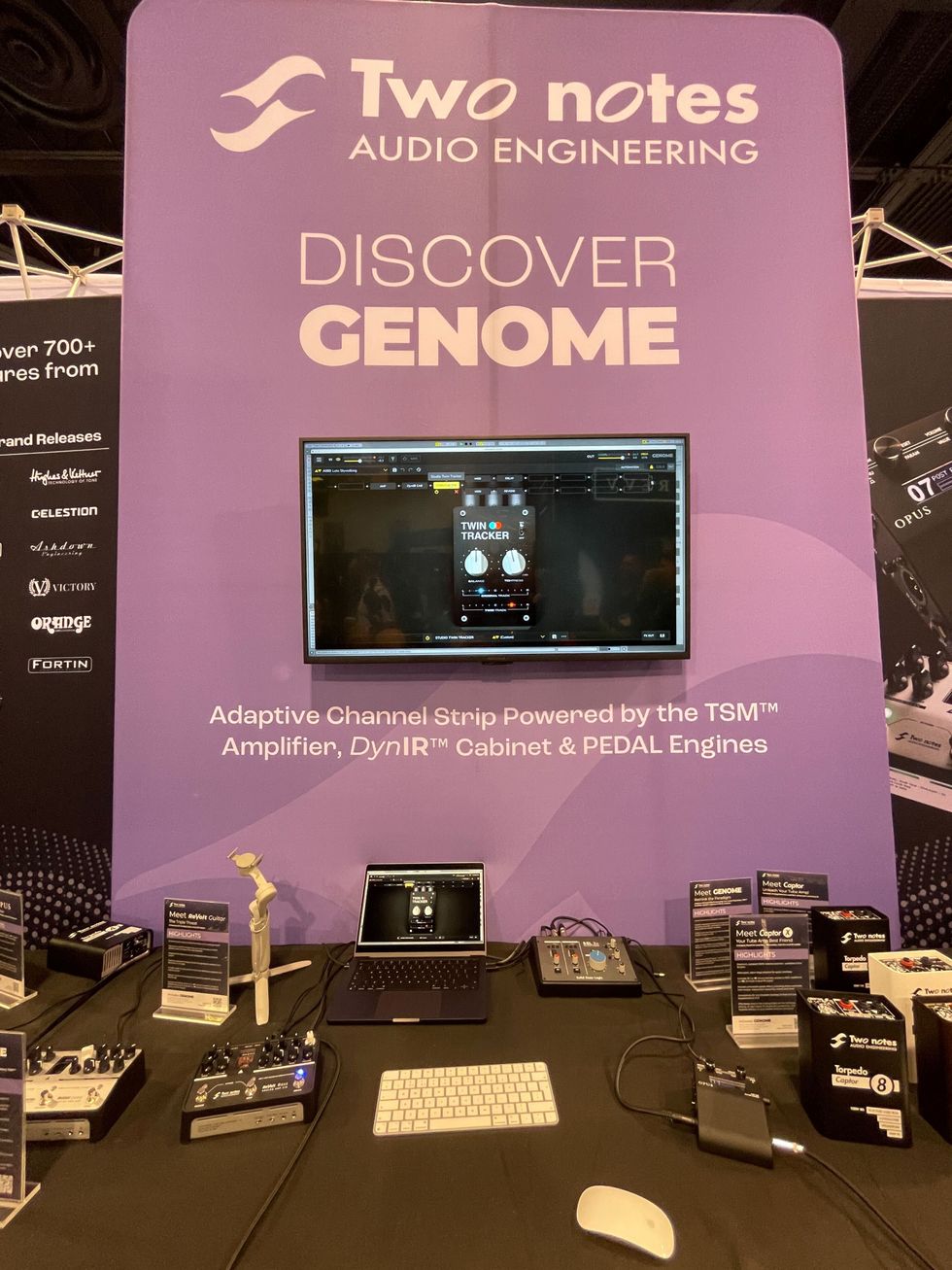
Two notes’ Genome offers deep functionality with loads of amp and pedal models on hand. It’s interface makes it easy to find exactly what you’re looking for and dial it in. Priced at $79.95, it’s free for any existing Two notes hardware or DynIR cab customers.
Reverend Billy Corgan Drop Z and the Chris Freeman Signature
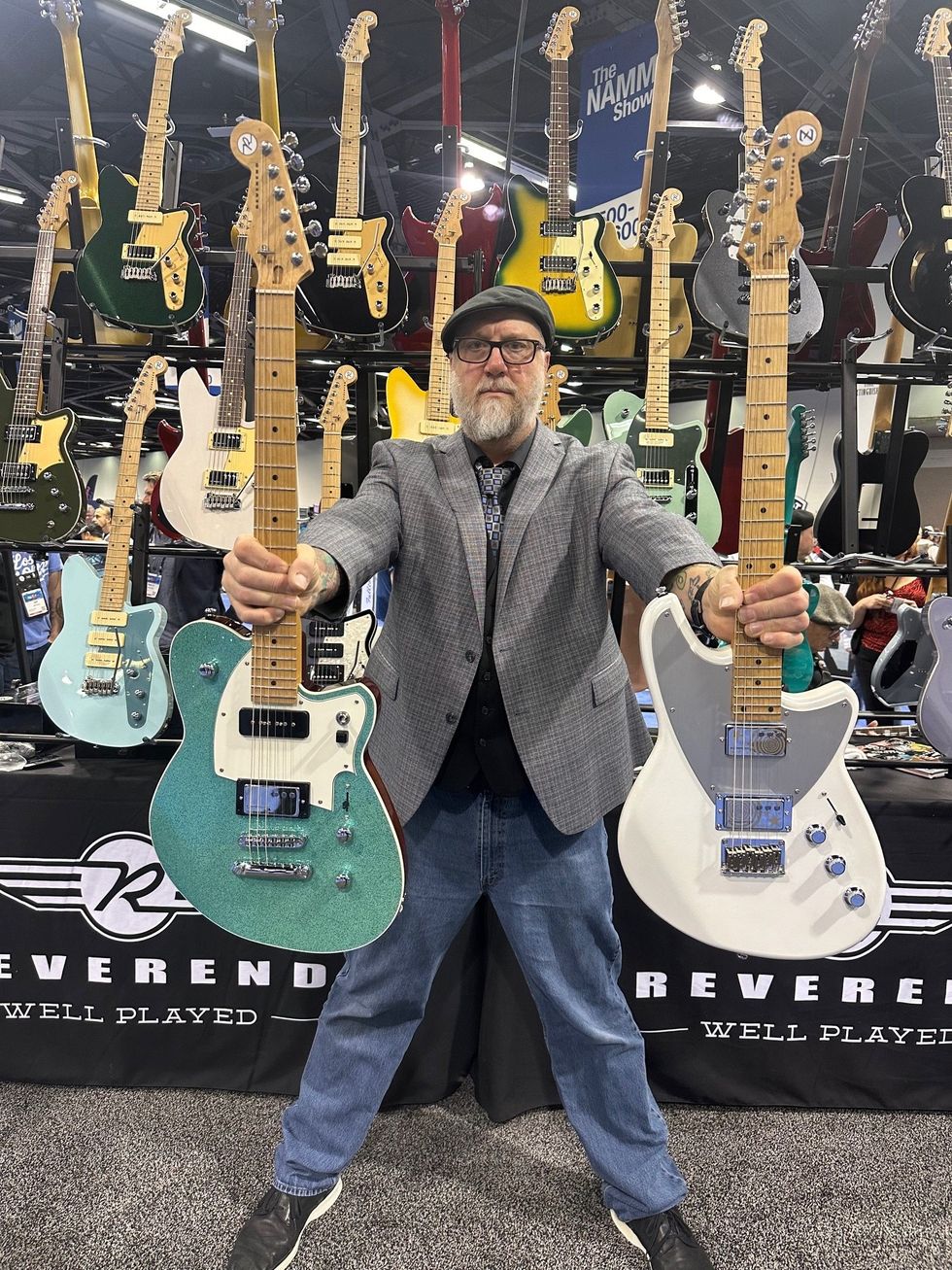
That’s Reverend’s Ken Haas with the two new signature models the company debuted at NAMM 2024: the Billy Corgan Drop Z (right, in Billy’s favored satin pearl white finish) and the Chris Freeman model. The Drop Z is designed for drop tuning, with a 24-fret, 26.22" scale neck, an alder body and Railhammer Billy Corgan Z-One pickups. The Chris Freeman has a bridge Railhammer Nuevo 90 and a neck P-90, with rear-mounted volume, tone, and bass contour controls, a 3-way pickup switch, and double kill switches—a toggle and a kill button, It’s available in the turquoise sparkle finish on the 6-string Ken’s holding, or powder yellow. The Drop Z streets for $1,499 and the Freeman at $1,199.
L.R. Baggs HiFi Duet
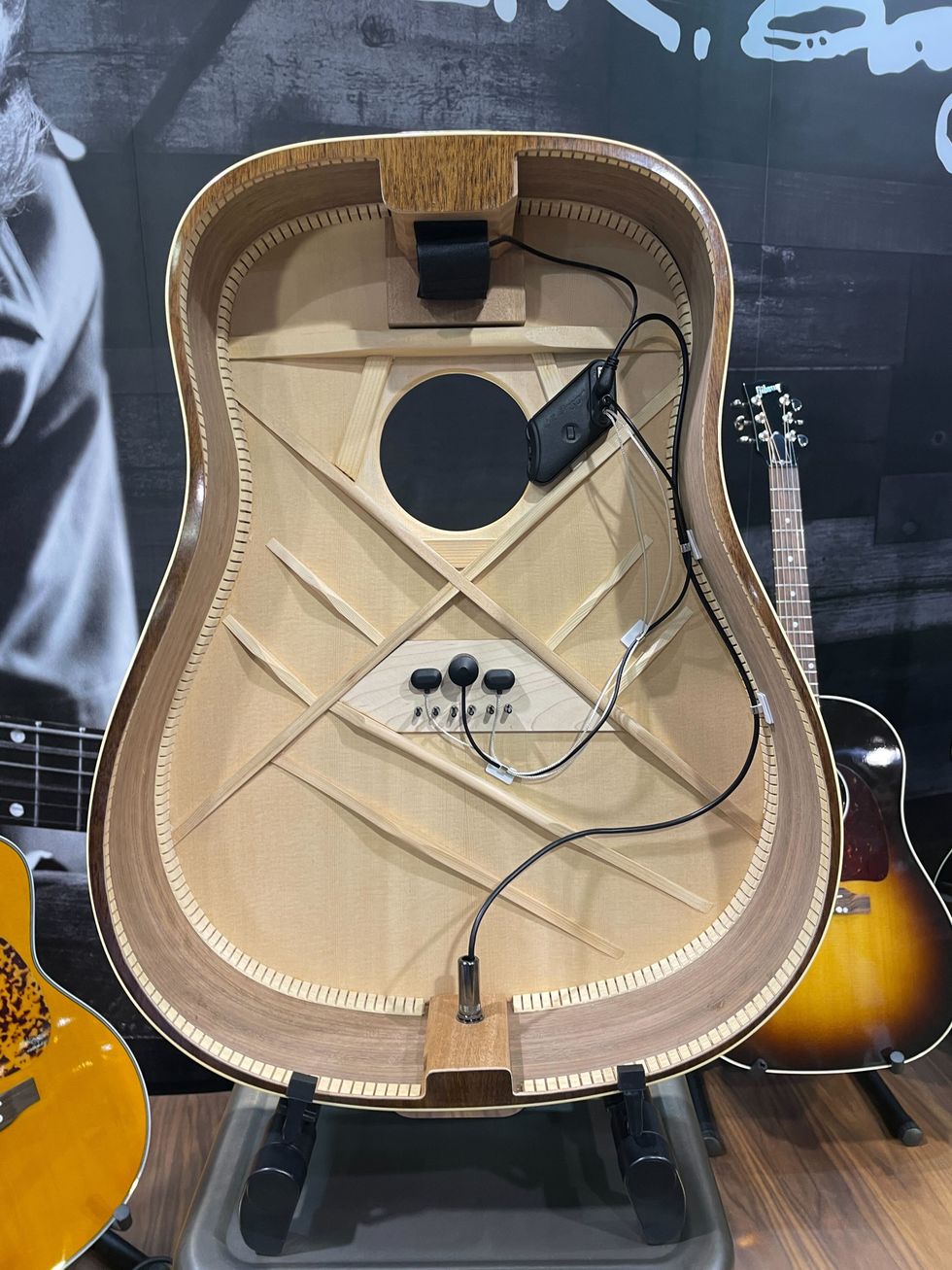
The L.R. Baggs HiFi Duet is a brand new update to the company’s popular HiFi, now with a studio quality bridge-plate microphone that is blendable with the contact sensors. Pricing and availability coming soon.
Eventide Riptide
Eventide has introduced a new member of their dot9 line with the Riptide, an overdrive/vibe-style pedal with stereo capability. It’s out now for $299. They’re also showing off their new app capabilities for their H90 as well as some fresh algorithms.
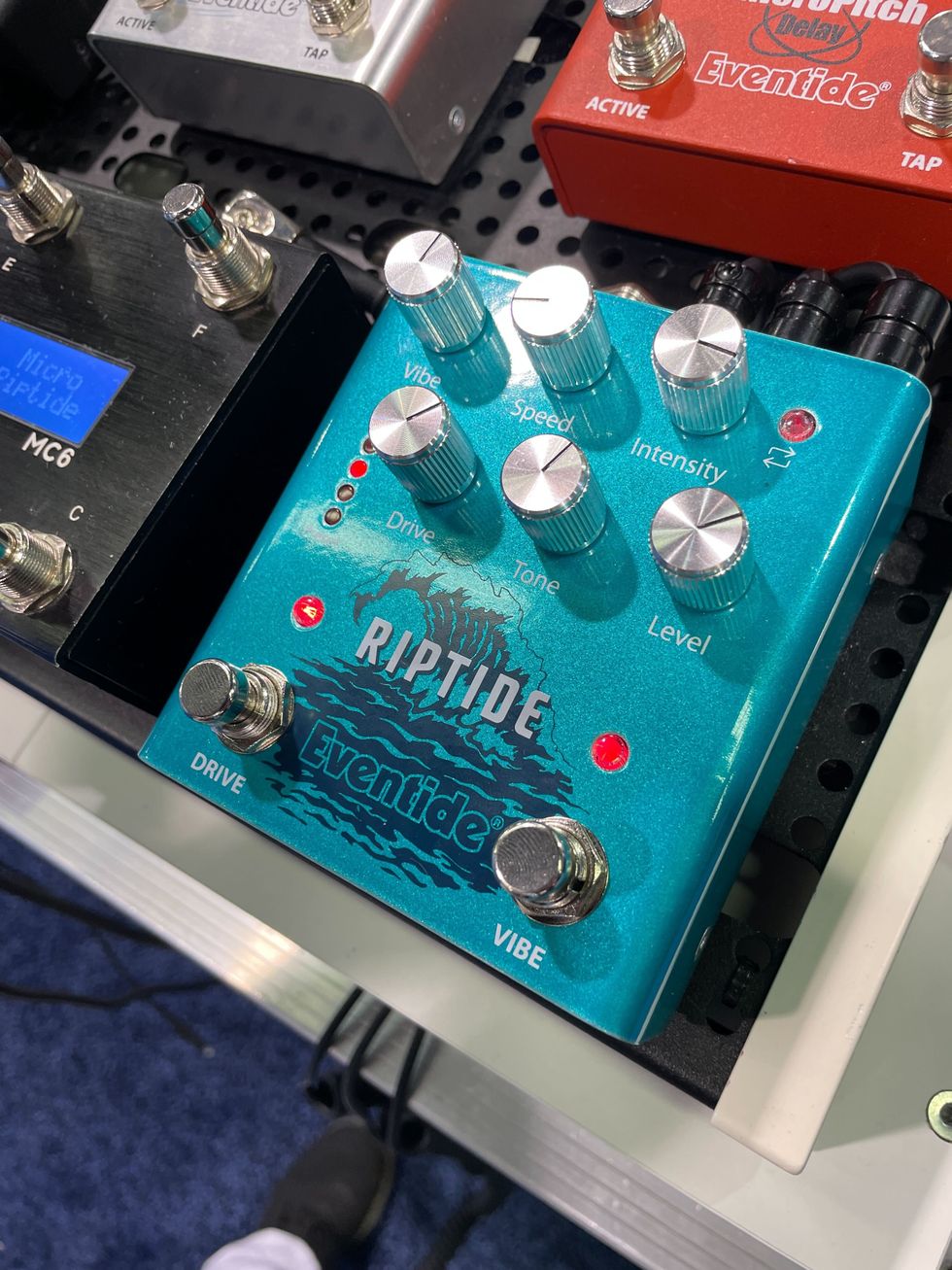
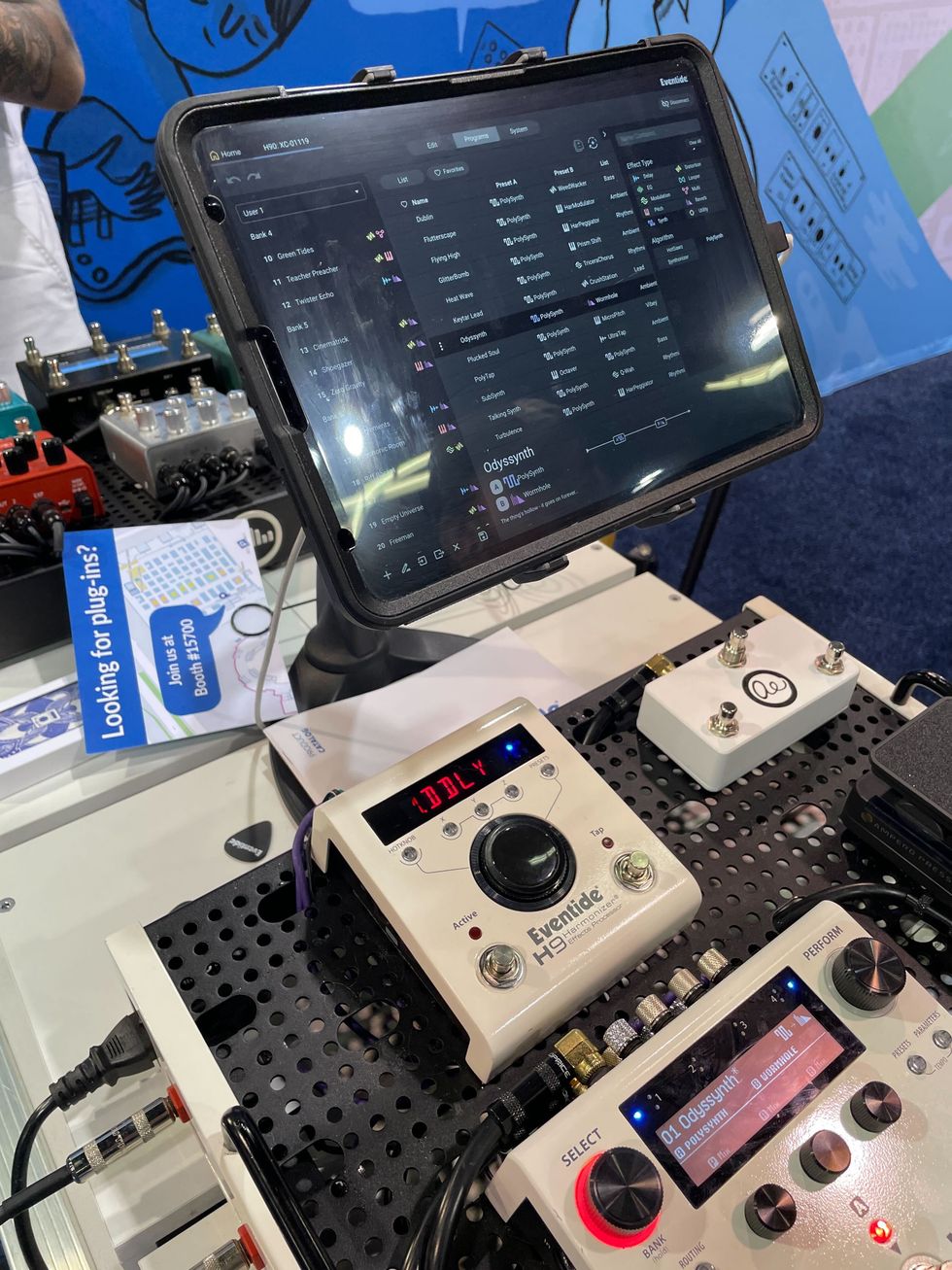
Mackie Showbox
Mackie’s new Showbox is a battery-powered solution for solo and duo acts. The defining feature is a detachable mixer that gives you access to a 3-band EQ, looper, and recording options. They are available now for $799.
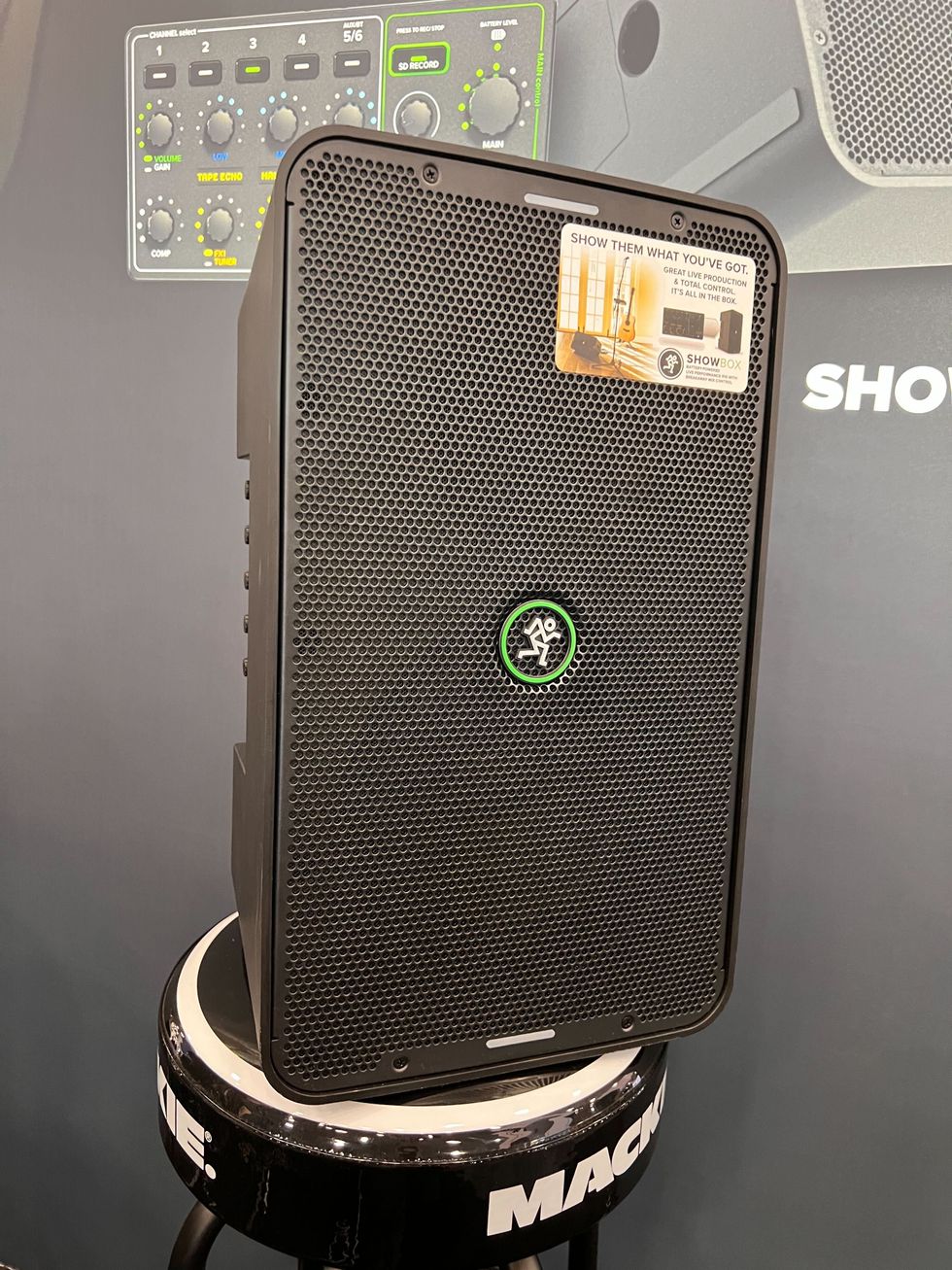
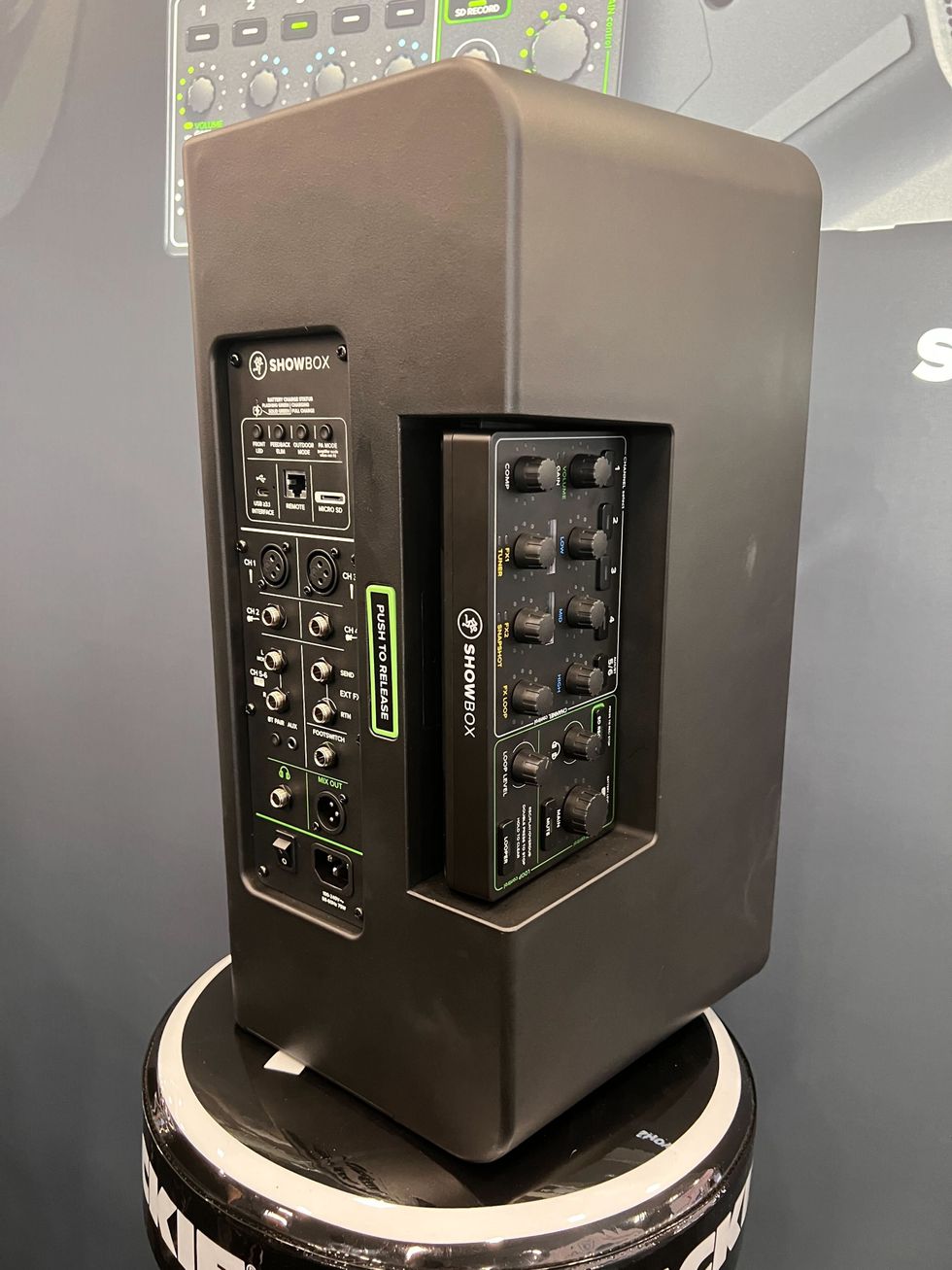
Chibson Protoypes
We were pleased to run into Jason and Marky from Chibson, who showed us prototypes of their puzzle-piece guitars and extendable-leaf guitar, built by Paoletti Guitars.
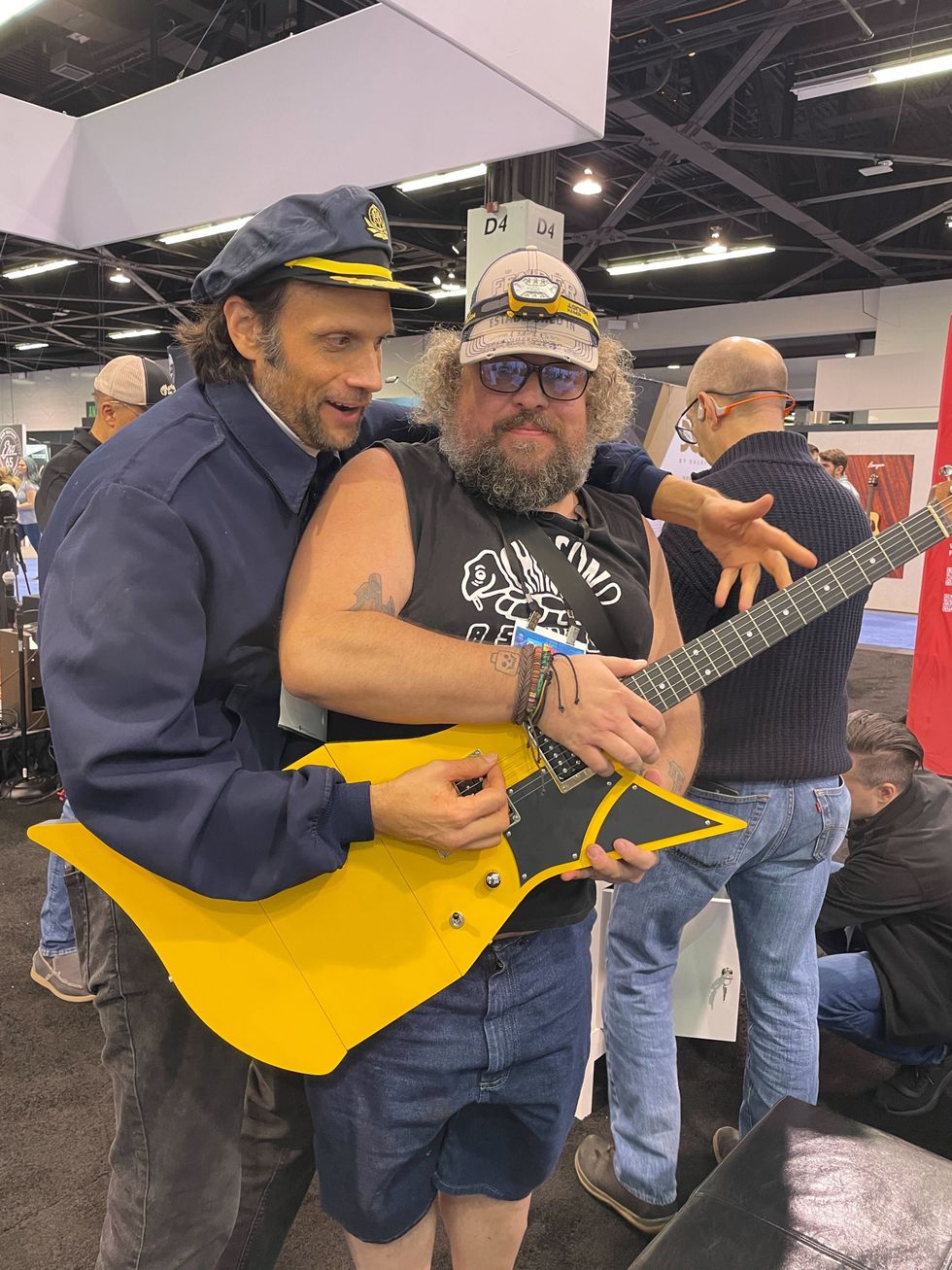
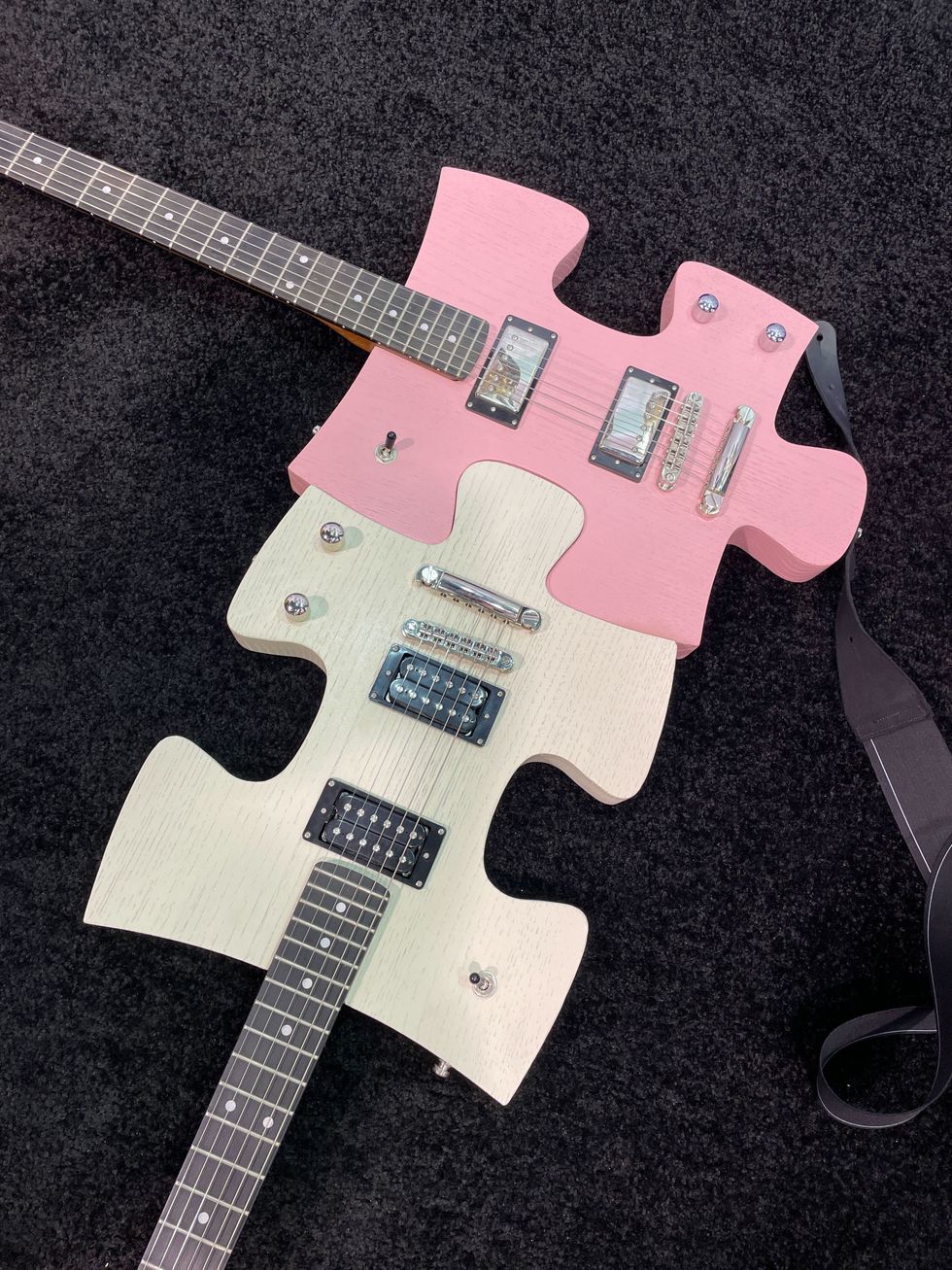
Iris/Circle Strings Guitars
The Iris/Circle Strings booth had lots to offer, from their acoustic line built for the discerning working musician’s taste and price range. Their DF slope-shouldered dreadnought is a standout at $2,350. They also brought a pair of Paul Languedoc builds that Trey Anastasio fans were busy bugging out about!
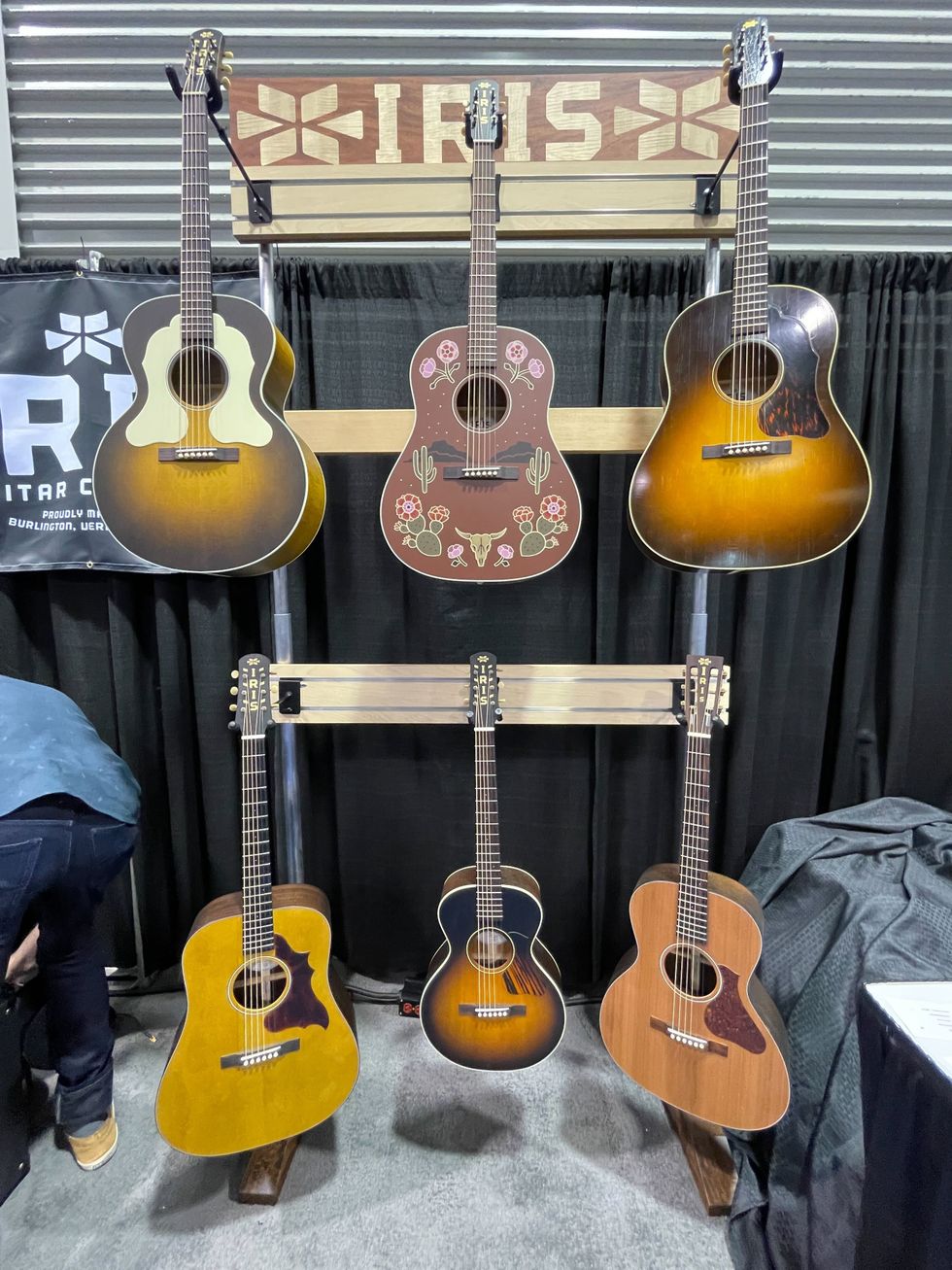
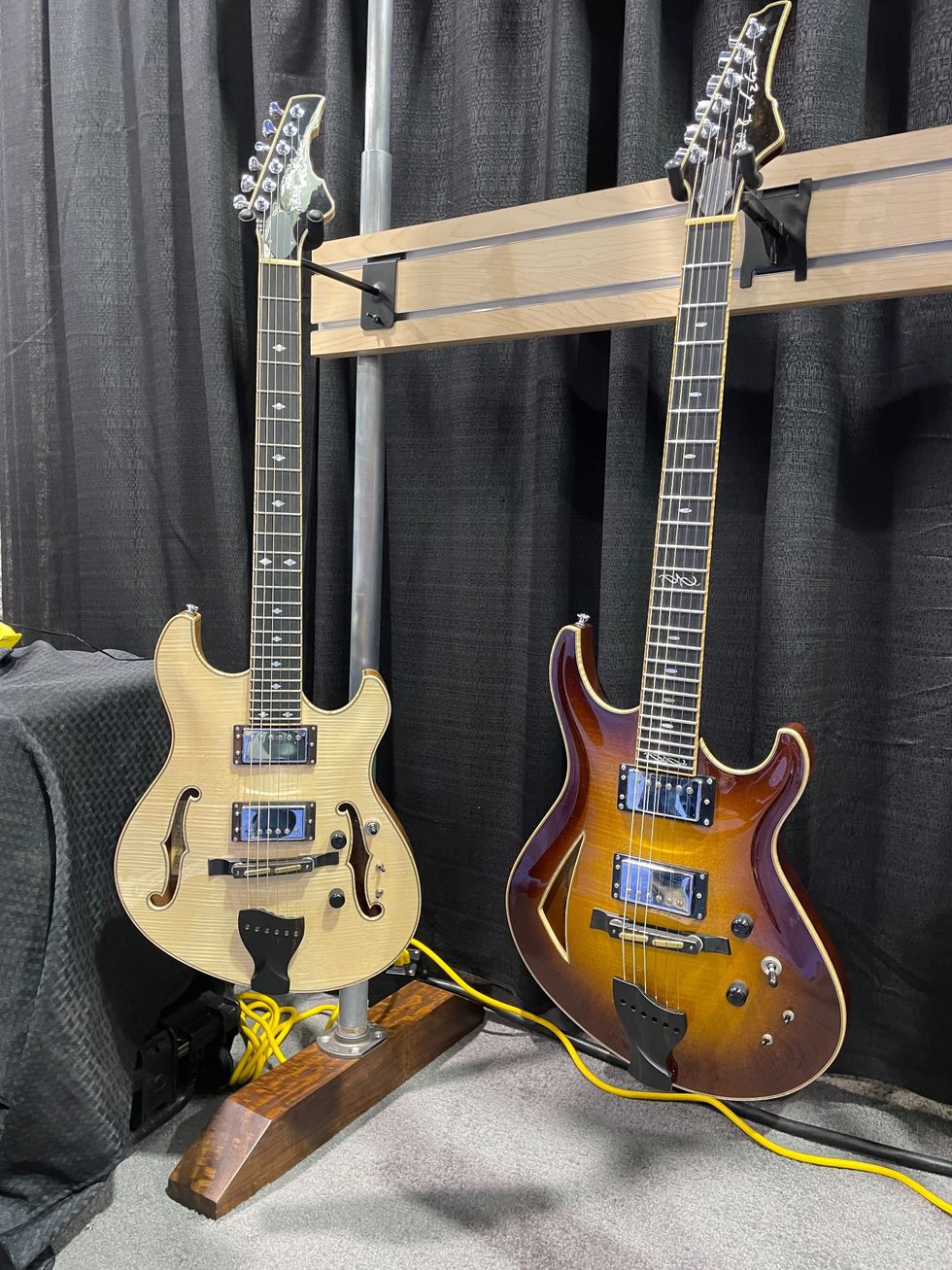
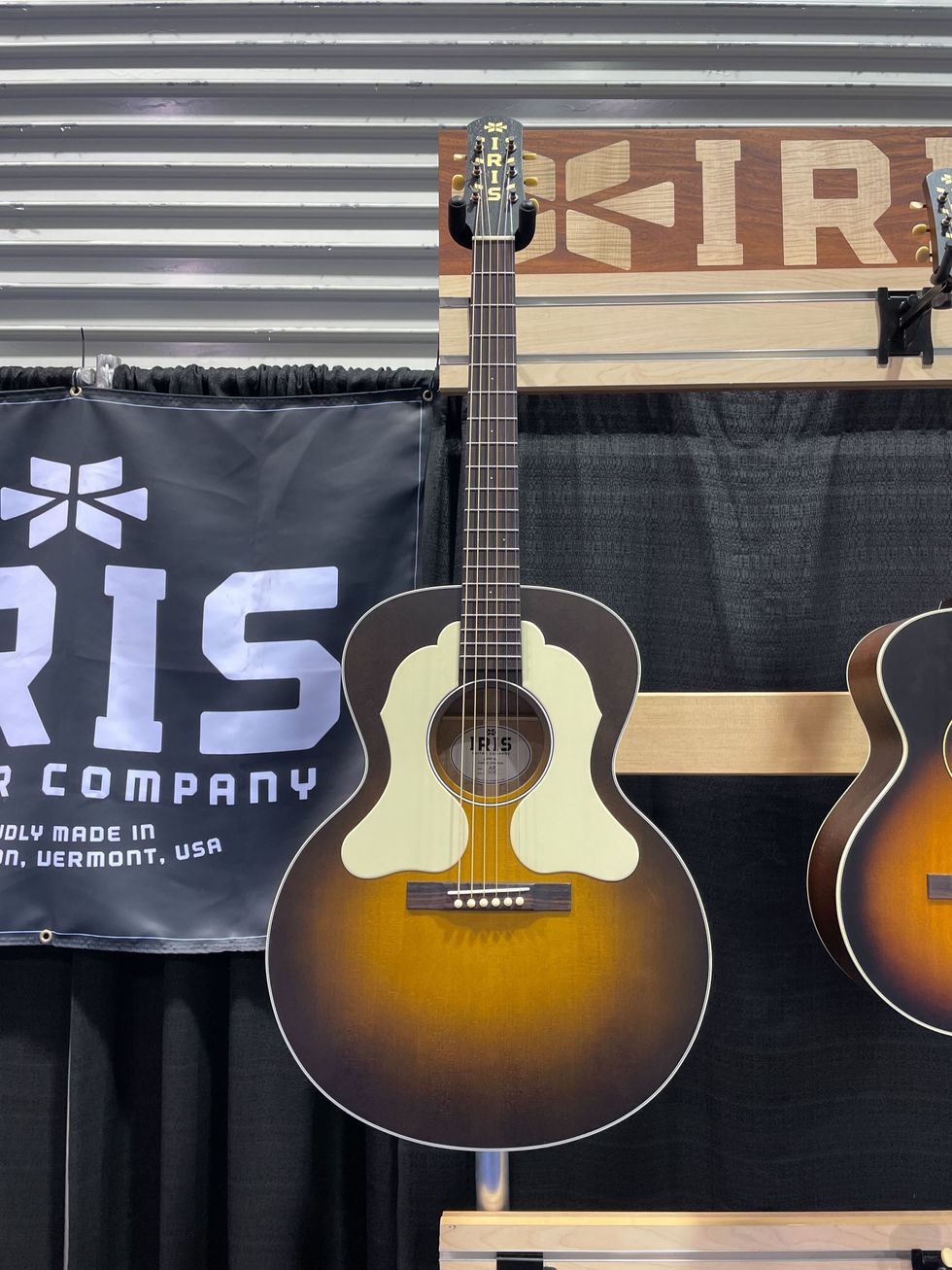
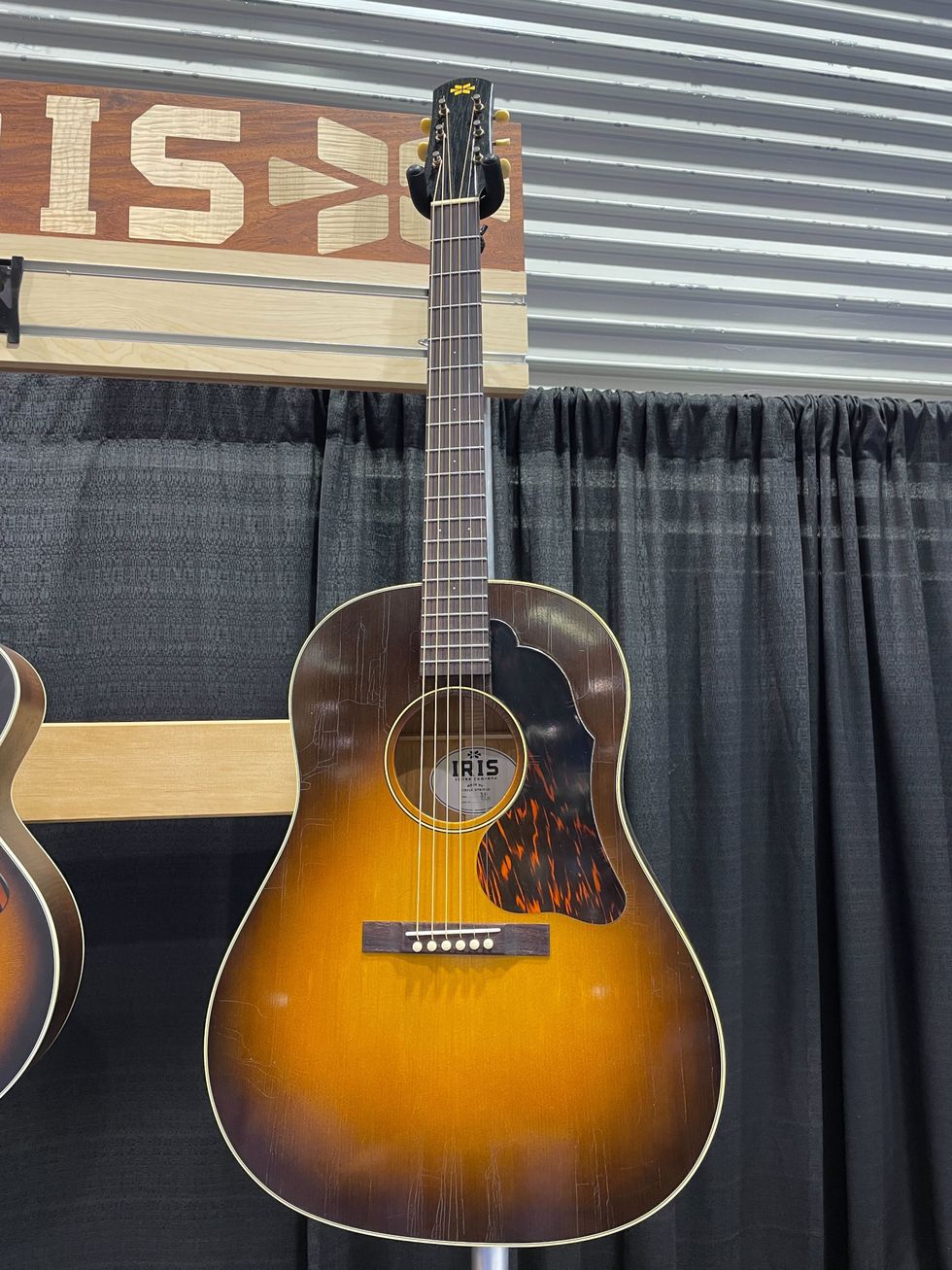
Gamechanger Audio Mod Series
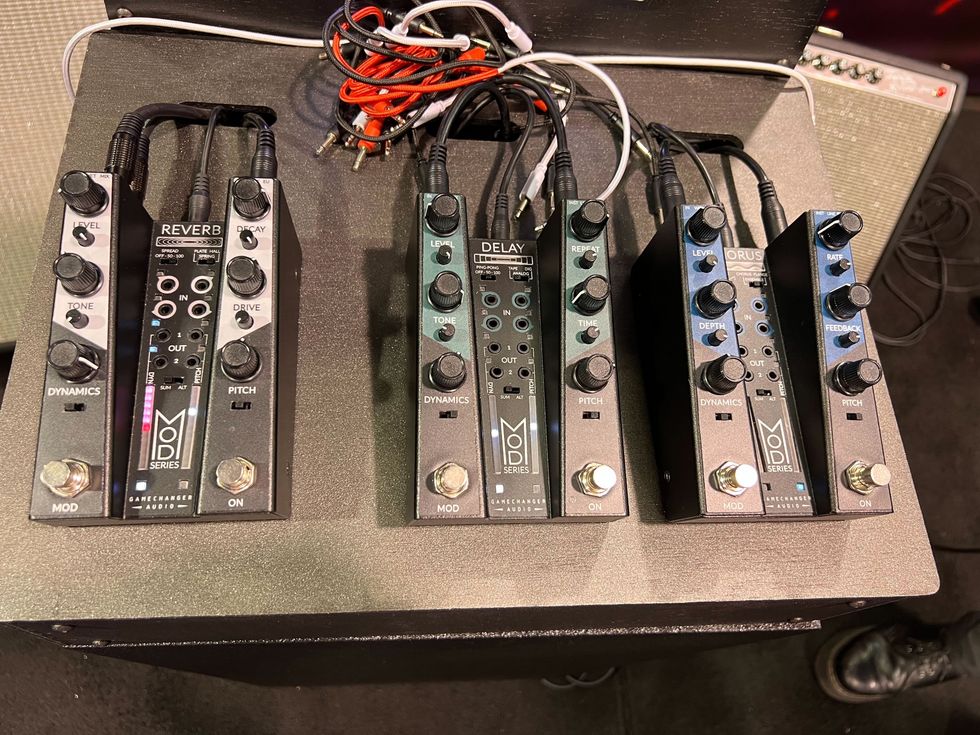
Gamechanger Audio released an entire new line of pedals at NAMM. The Mod series combines their penchant for inventive, time-based effects with their love for modular synth-style controls. There are literally thousands of ways to control these effects including via pitch and dynamics. For example, you can set a target note and everything either above or below it can be affected by any parameter. Production will start in March and they will be $299 each.
Peterson StroboClip HDC Tuner
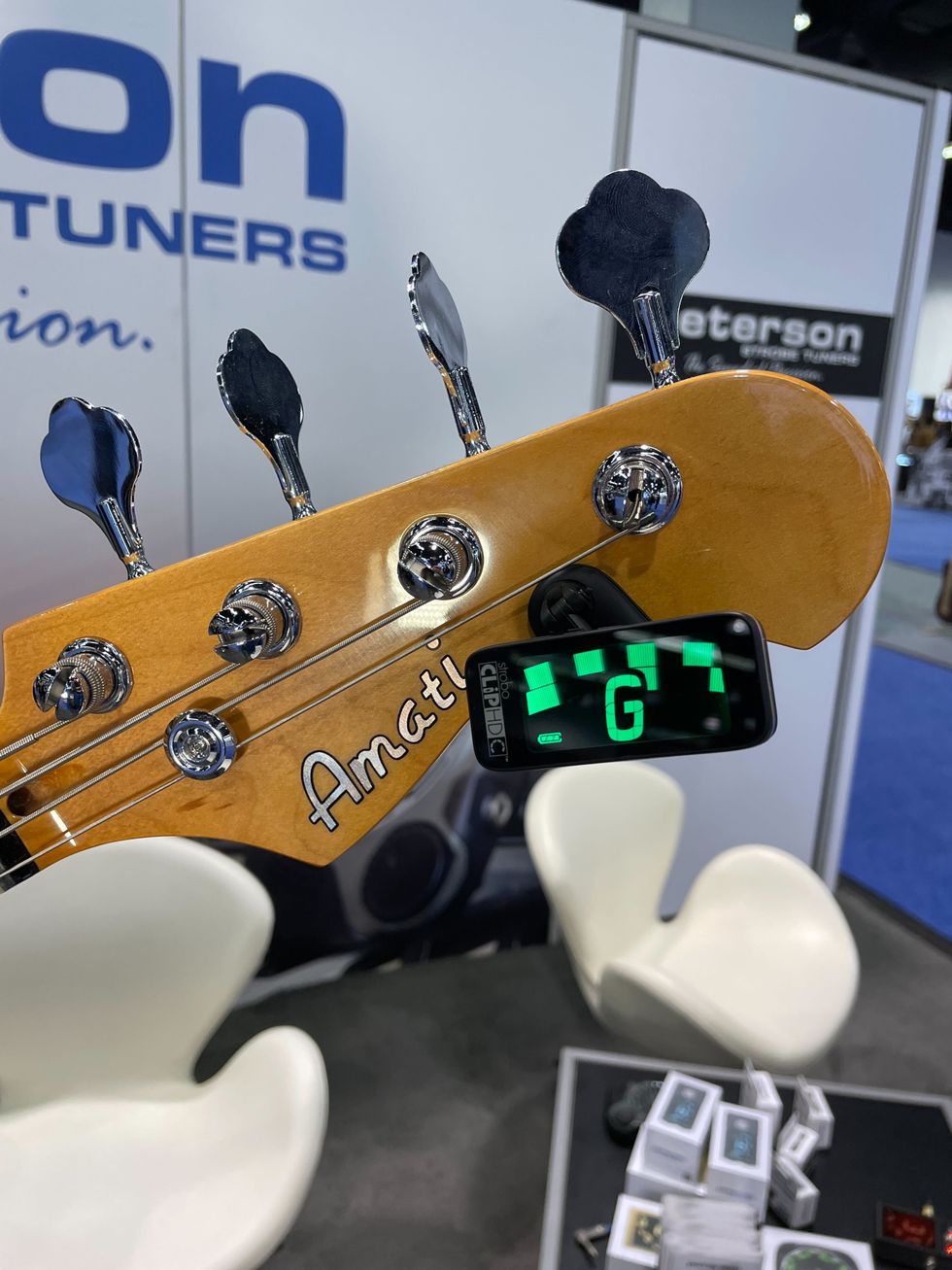
The Peterson StroboClip HDC brings the company’s popular sweetener offerings right to your headstock. This new rechargeable model works for 6 hours of continuous use on a single charge and the quick charge circuit delivers 90 more minutes of use on a two minute charge. Available now for $79.
Danelectro Fifty-Niner
Danelectro showed us a variety of new options, from their brightly colored lipstick-pickup-loses Fifty Niner guitars and Red Hot Longhorn bass ($599) to their black-crackle sitar ($899) and their vintage fuzz/distortion pedal the Nicholas 1966 ($199).
Danelectro Fifty-Niner - $599
Red Hot Longhorn - $599
Sitar - $899
Nicholas 1966 - $199
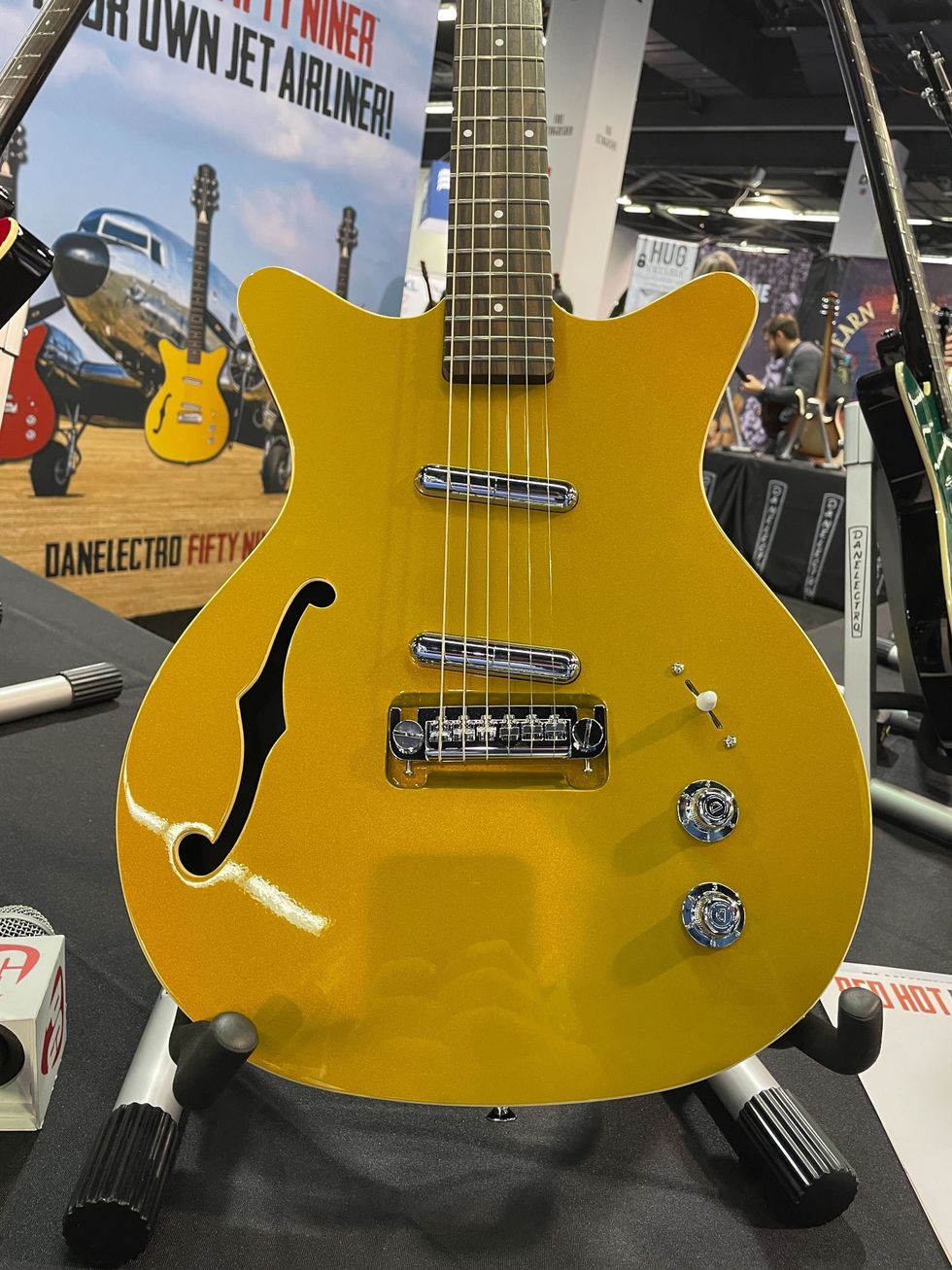
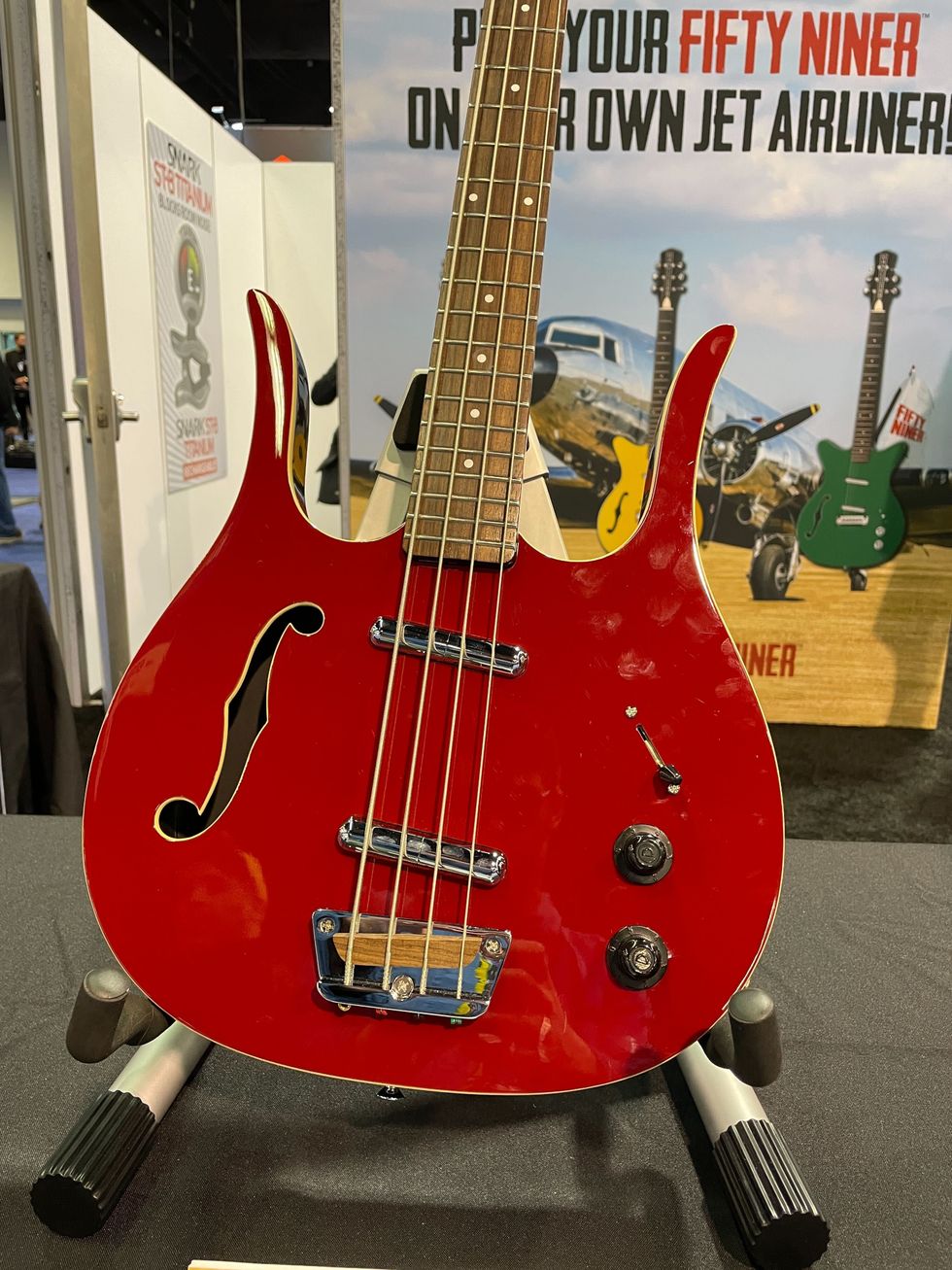
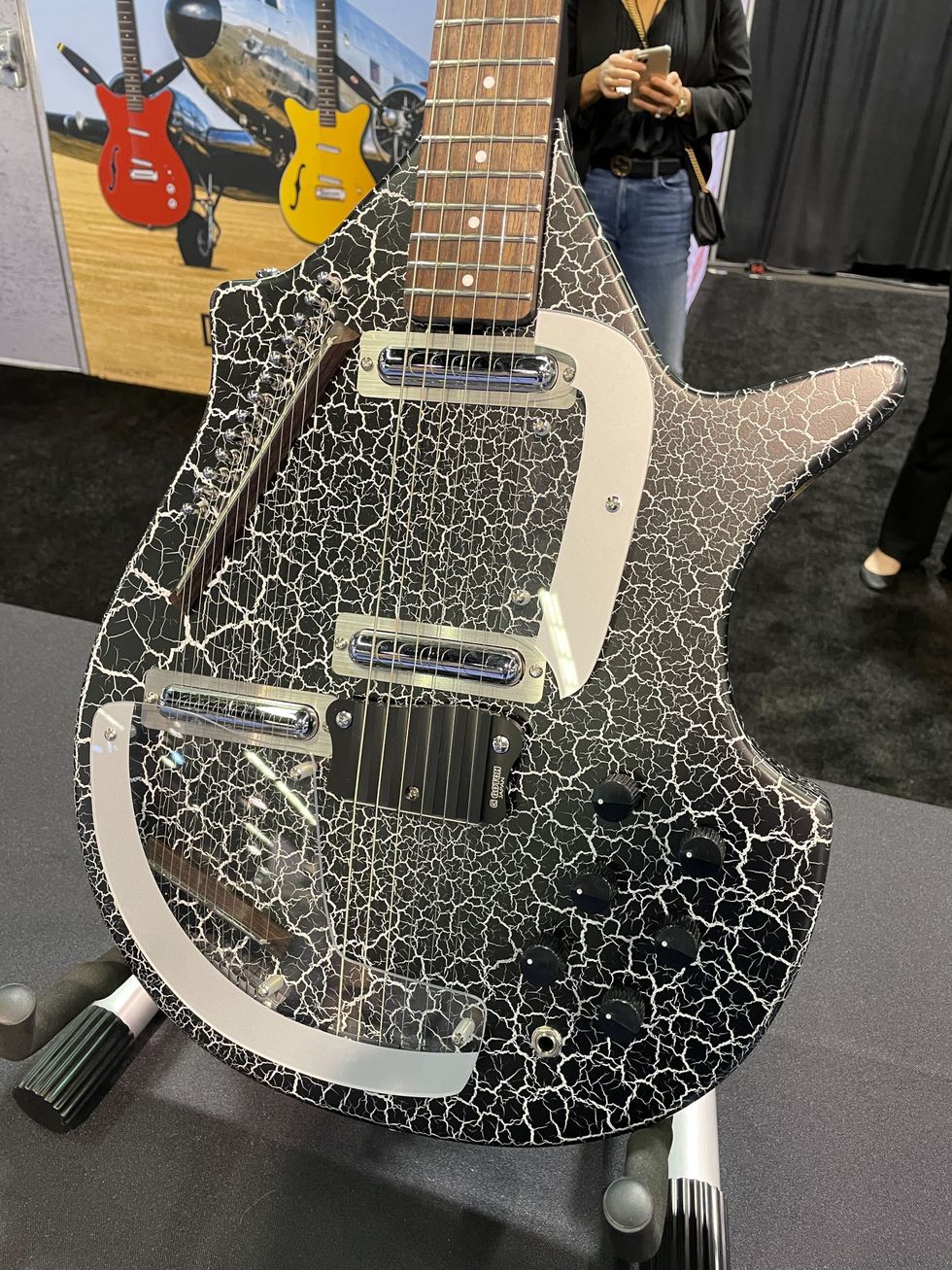
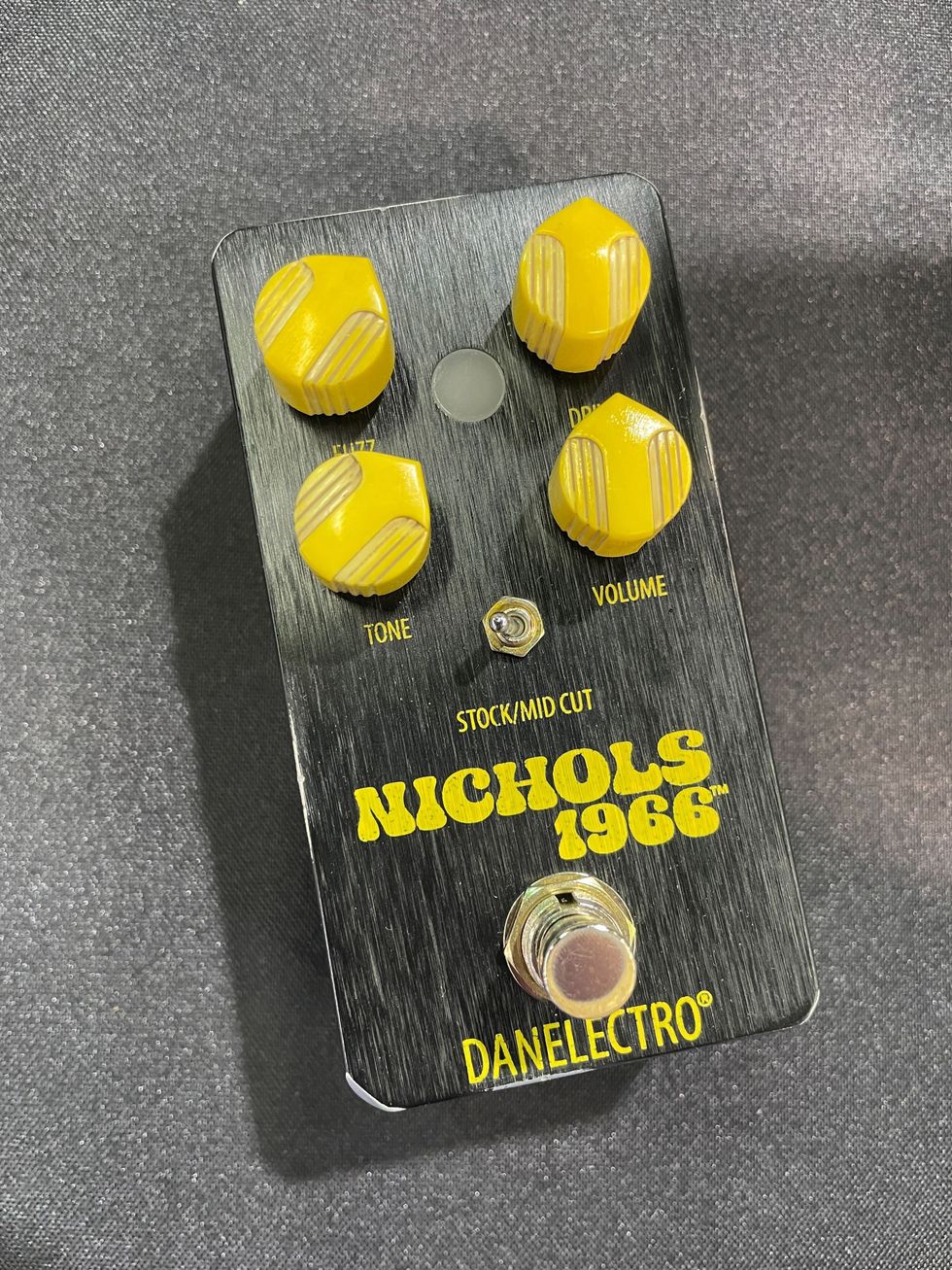
Lichtlaerm Audio Amps
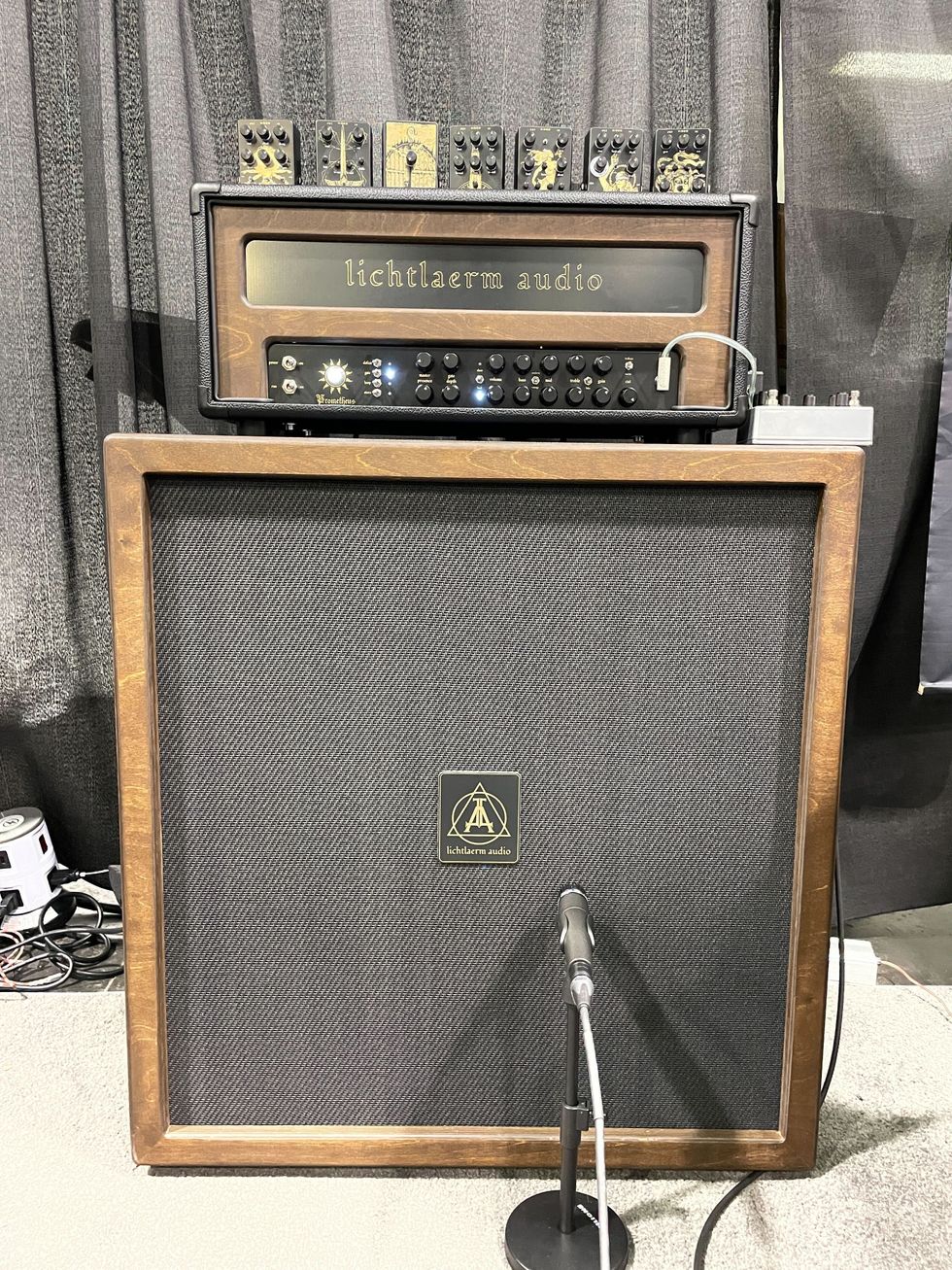
Newcomers Lichtlaerm Audio gave us a tour of their custom-build Prometheus head and Fane-loaded 4x12 cab. Loaded with features, your own will be available within a month or two of order, plus shipping time from Germany, at a starting price of $2,700.
Godin Lerxst Limelight
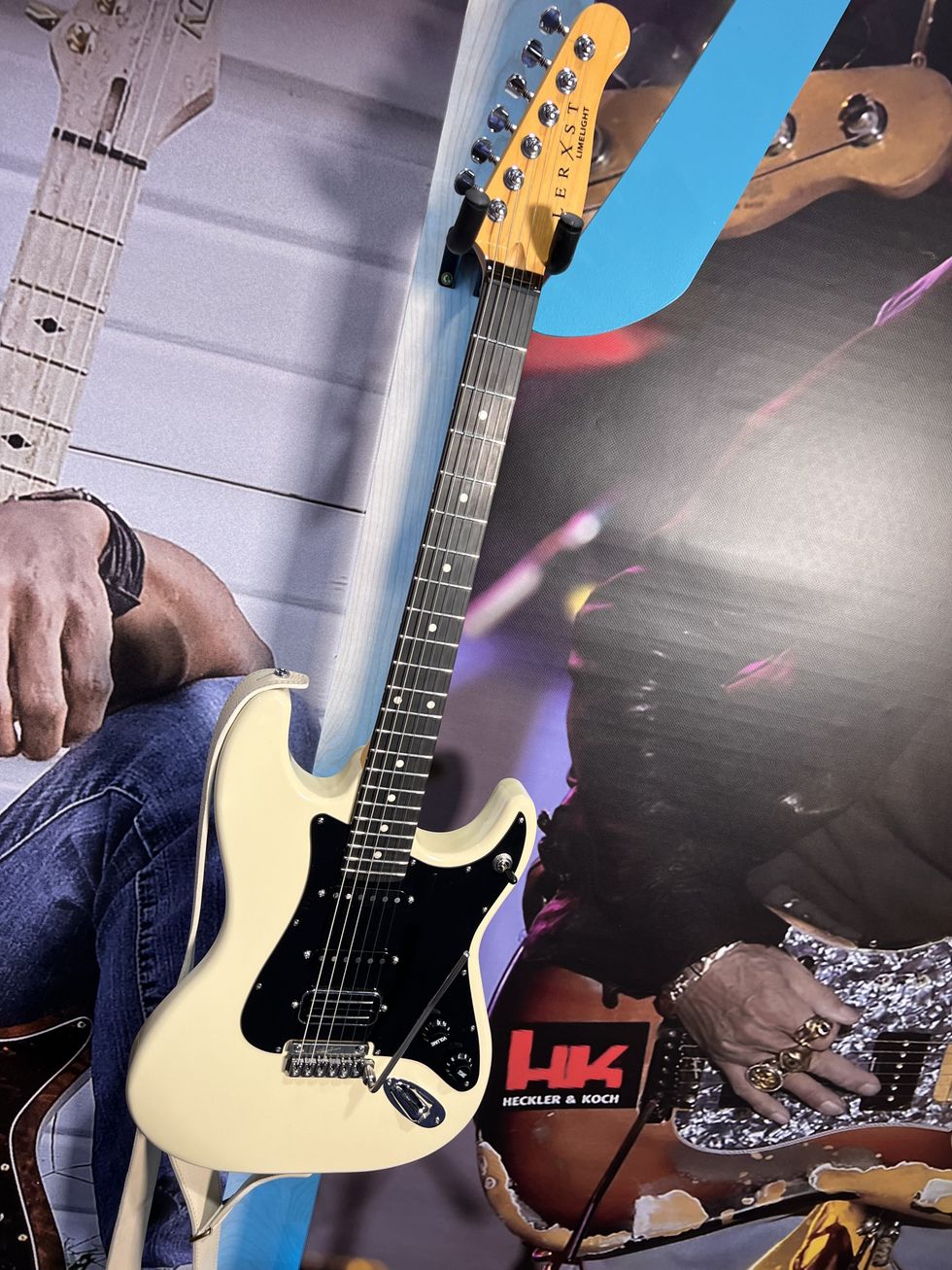
One of the higher profile releases of the show was Godin's collaboration with Rush guitarist Alex Lifeson. The Lerxst Limelight is based on Lifeson's '80s-era model and is outfitted with either a Floyd Rose setup or the Vega-Trem VT1 shown here. The pickups were made by MojoTone and overall, the guitar feels and sounds incredible. Streets for $4,000.
Divided by 13 FTR 37
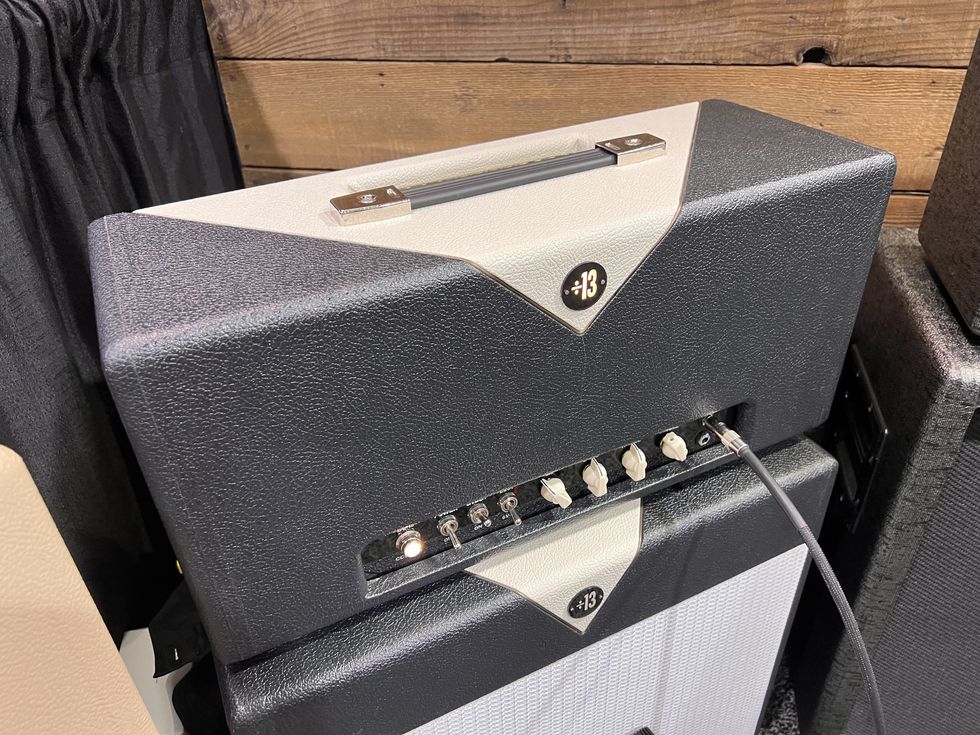
Divided by 13 relaunched after their acquisition by Two-Rock at the show with this FTR 37. It's a muscular 6V6 circuit with two discreet channels, reverb, push/pull gain boost, and a half-power switch. If you're a fan of Fullerton-style sounds, than this might be just the setup for you. It has a full-bodied clean tone and a rich breakup sound that's dynamic with plenty of sparkle.
Aeroband Guitars
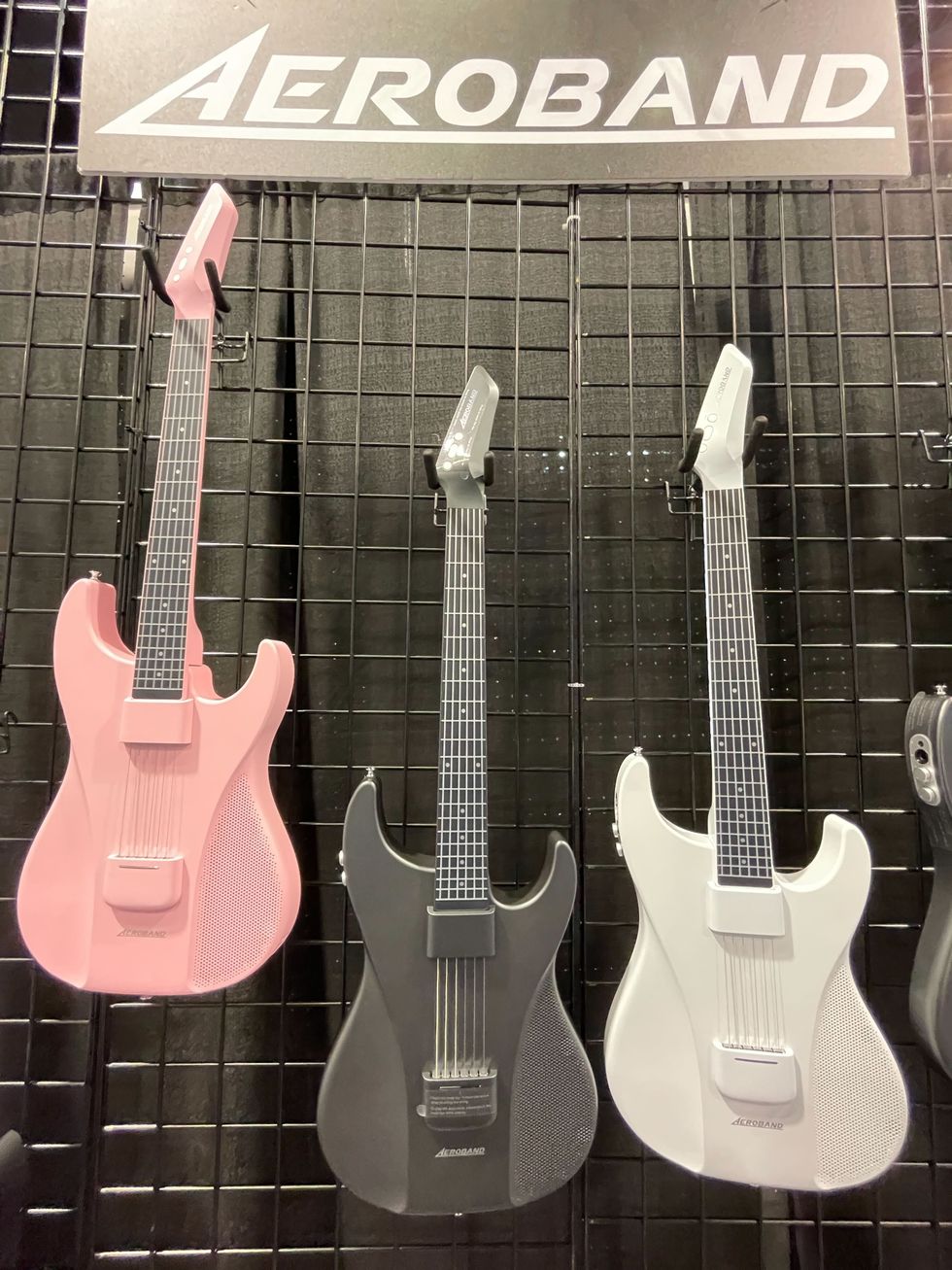
The Aeroband guitar looks like a wild glimpse into the future—and also back into the ‘80s—but with its app capability, the company is touting the education possibilities it has to offer. Also, it’s fun. Priced at $500, it’s available now.
Supro Delegate Custom
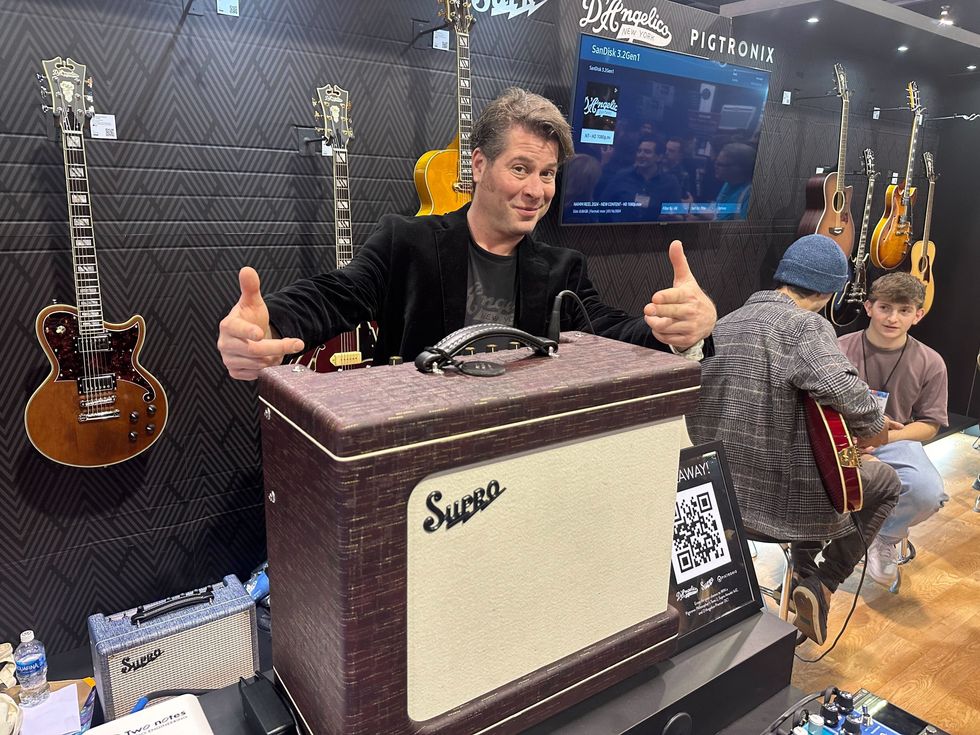
Supro enters the boutique amp market with the mighty 1x12 Delegate Custom, inspired by the Aristocrat amp Muddy Waters used for the Live at Newport album … but supercharged. With a custom-colored wraparound cabinet, it’s all hand-built in Ohio with Mercury Magnetics transformers, period-correct Mallory caps, a custom 12” Celestion Greenback, 3-band EQ, and master volume. It’s got a 12AT7 driving the spring reverb, two 6V6 power tubes, and three 12AX7s. The tag: $3,299, and there’s a 2x12 big sibling, too. It’s Supro mastermind David Koltai’s (in photo) latest pride and joy.
KMA Machine Endgame
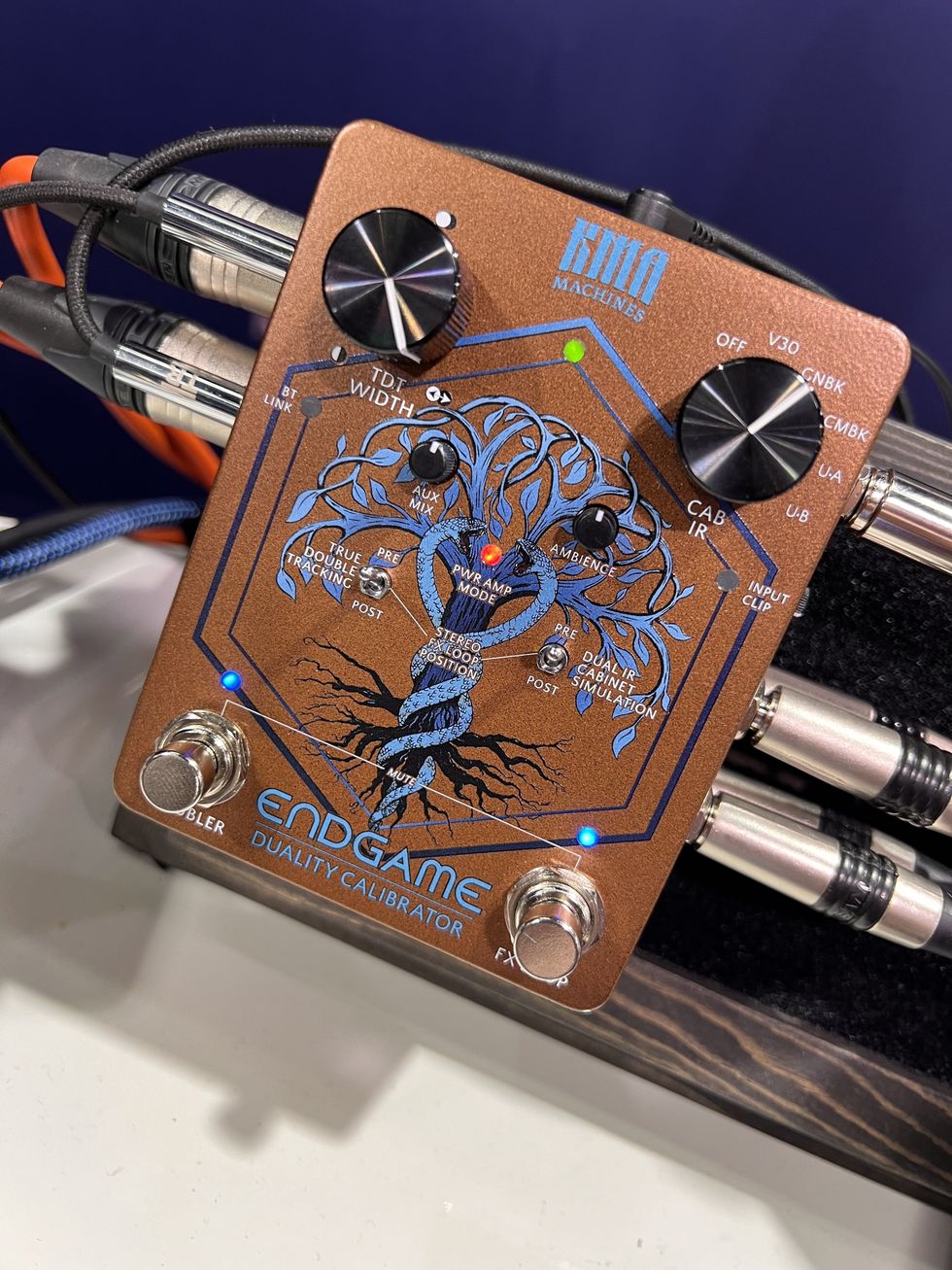
KMA Machine's Endgame Duality Calibrator might be one of the most feature-packed stomps at the show. It has an exhaustive amount of I/O options but the centerpieces are the automatic double tracker and the switchable IR loader. Other highlights include dual headphone outputs, XLR outputs, Bluetooth capability, stereo effects loop, ambience control, and loads more.
Strandberg Boden Essential
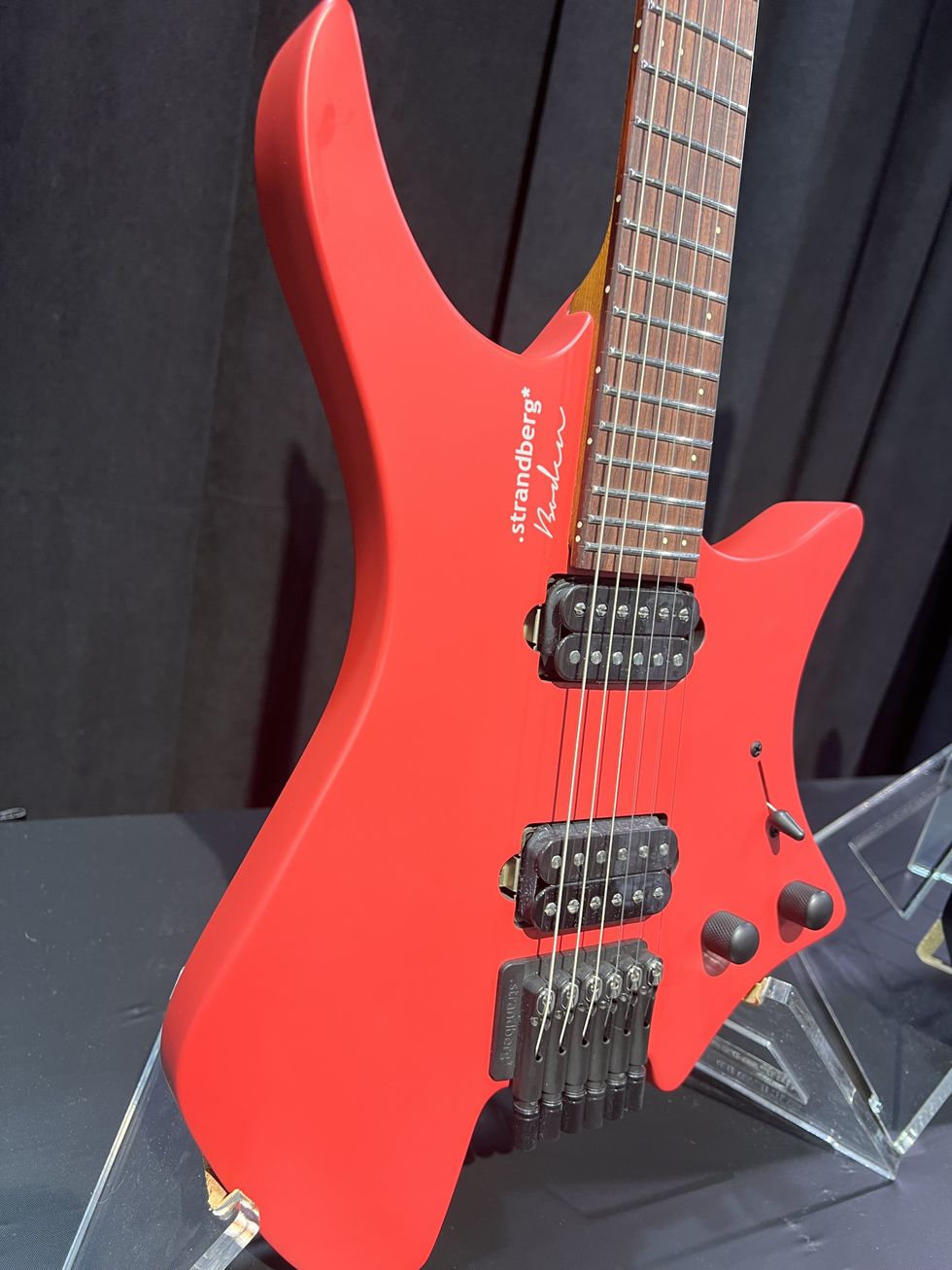
Strandberg's Boden Essential is the company's first sub-$1k guitar. It retains the same look and feel of the other models, but uses locally sourced Indonesian wood to help keep the price down. Ola told us that the pickups are the same as in the standard model, but the hardware is reengineered for durability and sustainability.
Godin Arena Pro
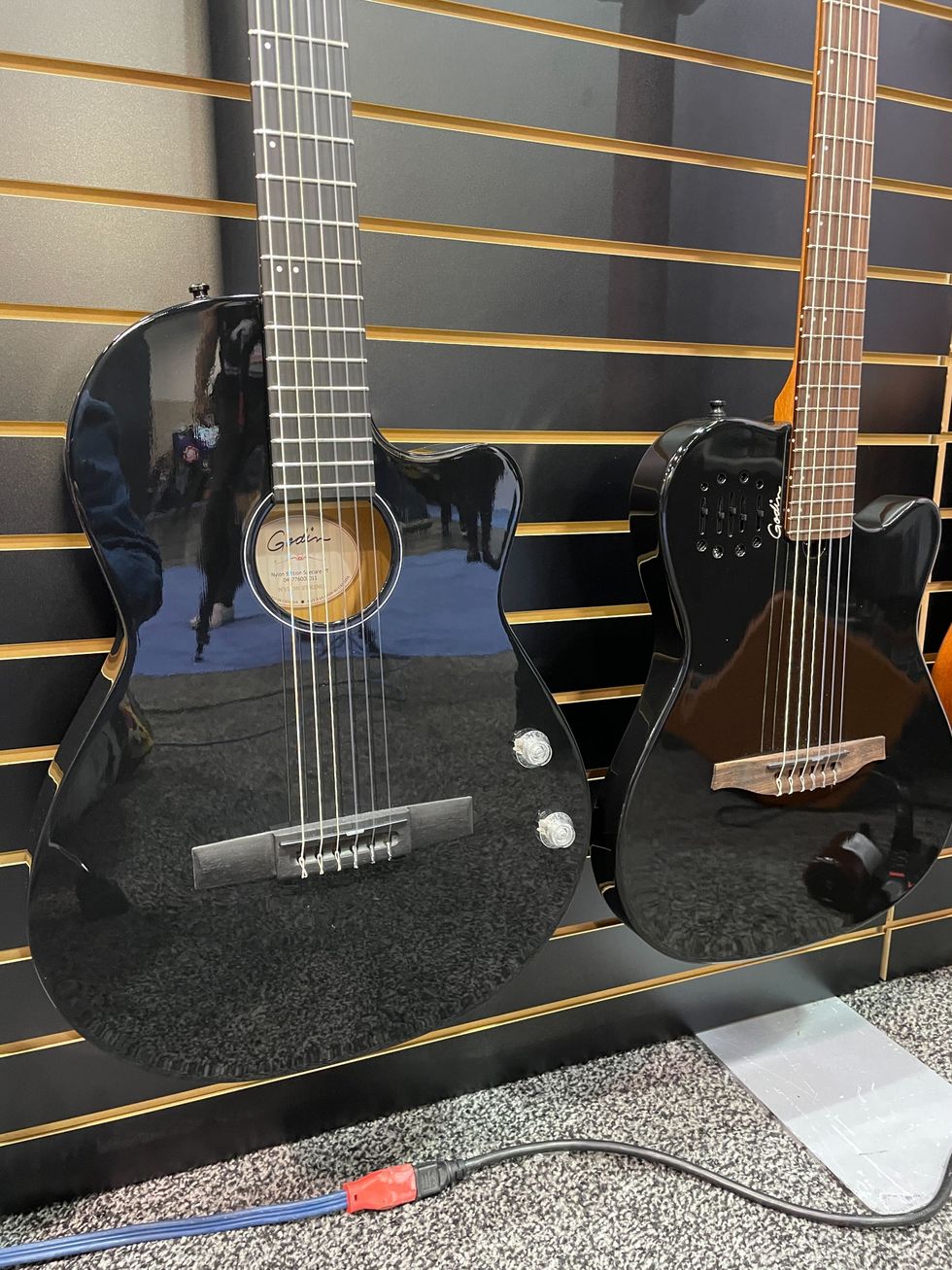
Godin is debuting a pair of all-black nylon-string guitars. The Arena Pro is a LTD Onyx Black is a single cut with a solid cedar top and Canadian wild cherry black and sides, plus top-mounted volume and tone controls. They’ve paired it with a new addition to their Multiac Mundial line in matching onyx black accoutrements. These guitars are available now and priced at $1,099 and $1,299 respectively.
Godin Fifth Ave
Godin’s stunning new hollowbodies will catch the eyes of rockers and jazz cats alike. These lightweight and comfortable thinline Fifth Avenue guitars are available with Godin P-90s for $1,299, and a sunburst model is equipped with Lollar gold-foils at $1,899.
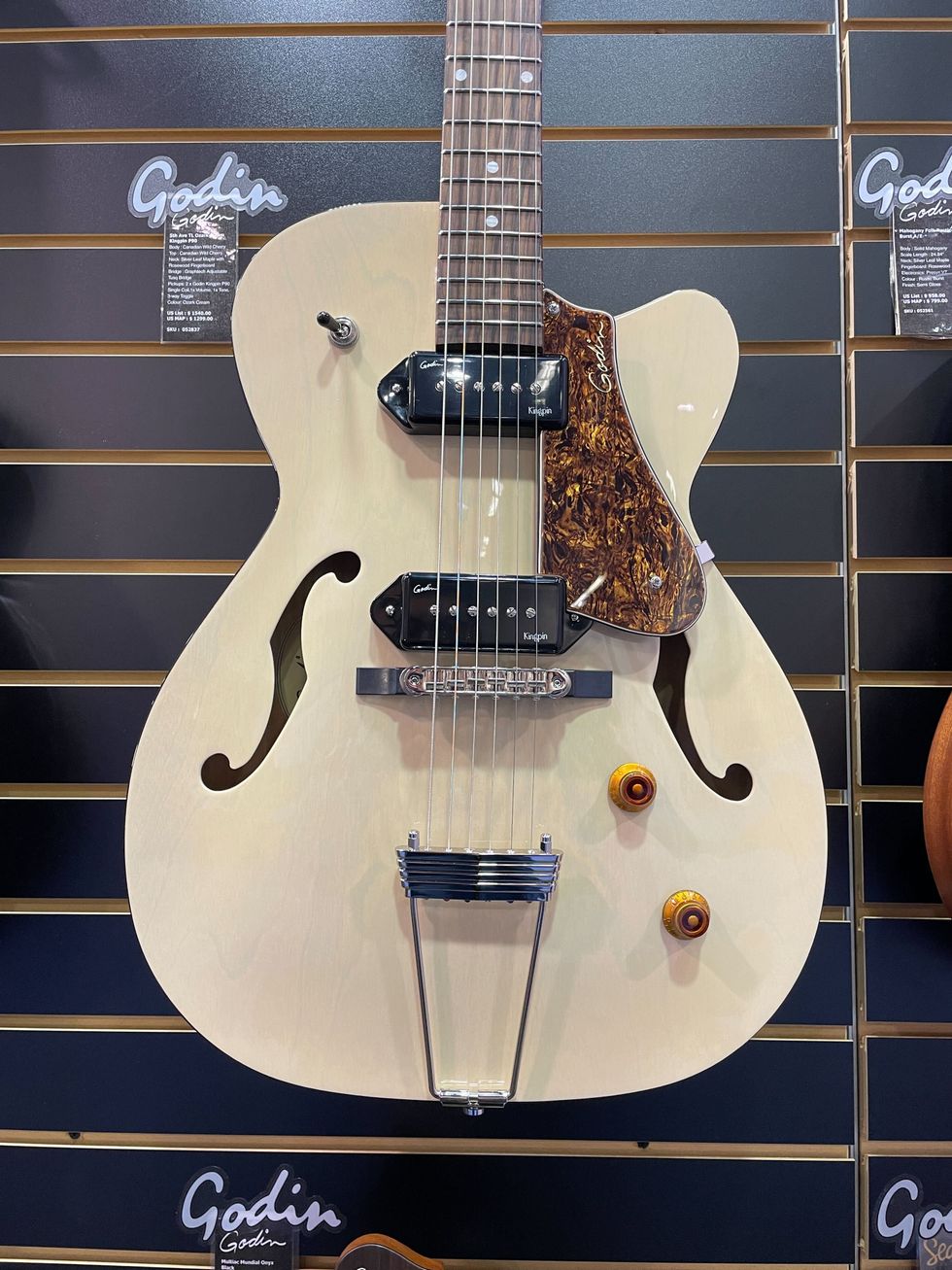
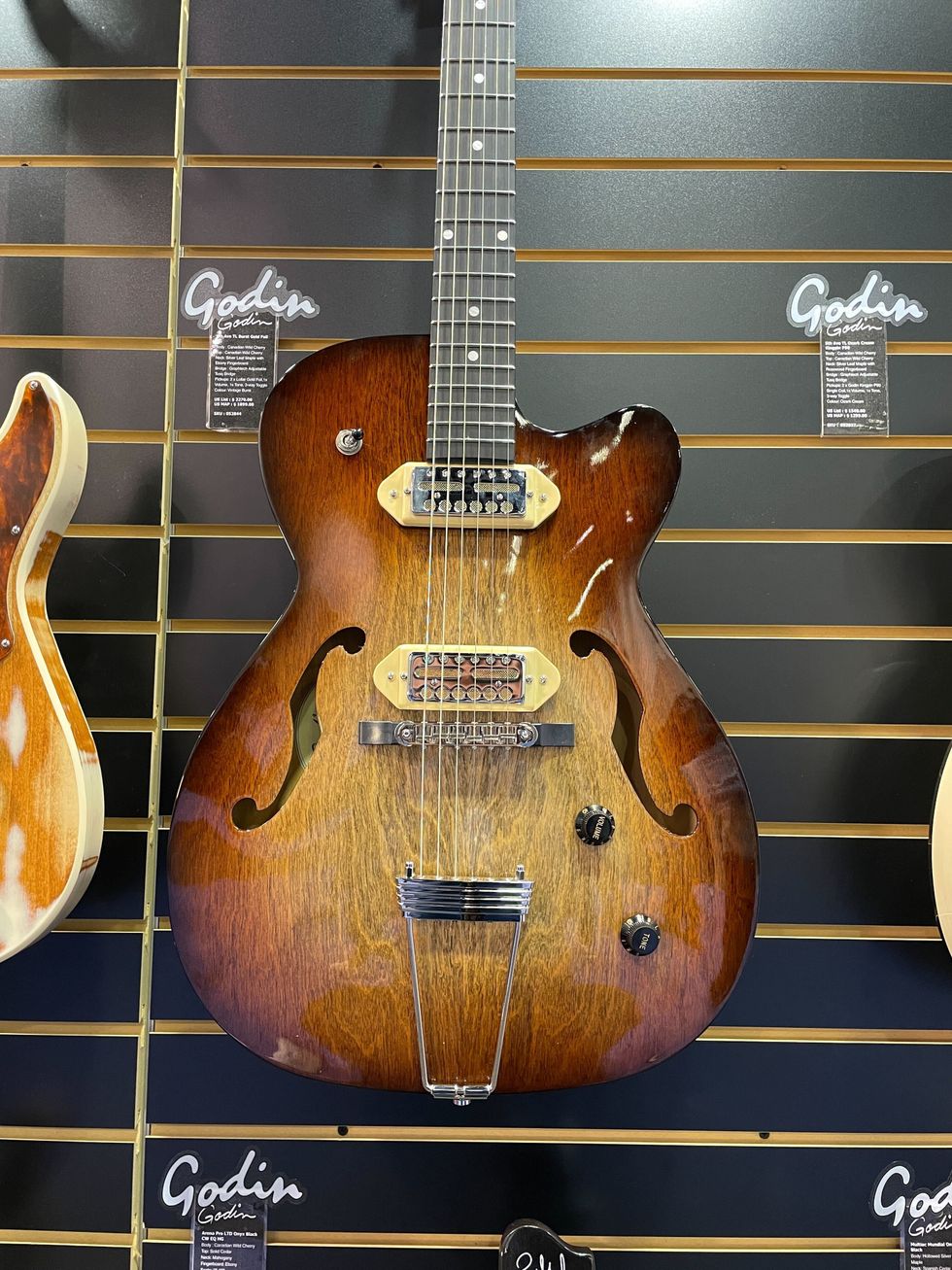
Godin Session T-Pro Hangover
Godin debuted their “hangover” distressed finishes on a pair of solidbodies: their S-style Seymour Duncan-loaded Session T Pro and their Lollar/TV Jones-loaded T-Style Stadium T Pro. These one-of-a-kind models are available for $1,499.
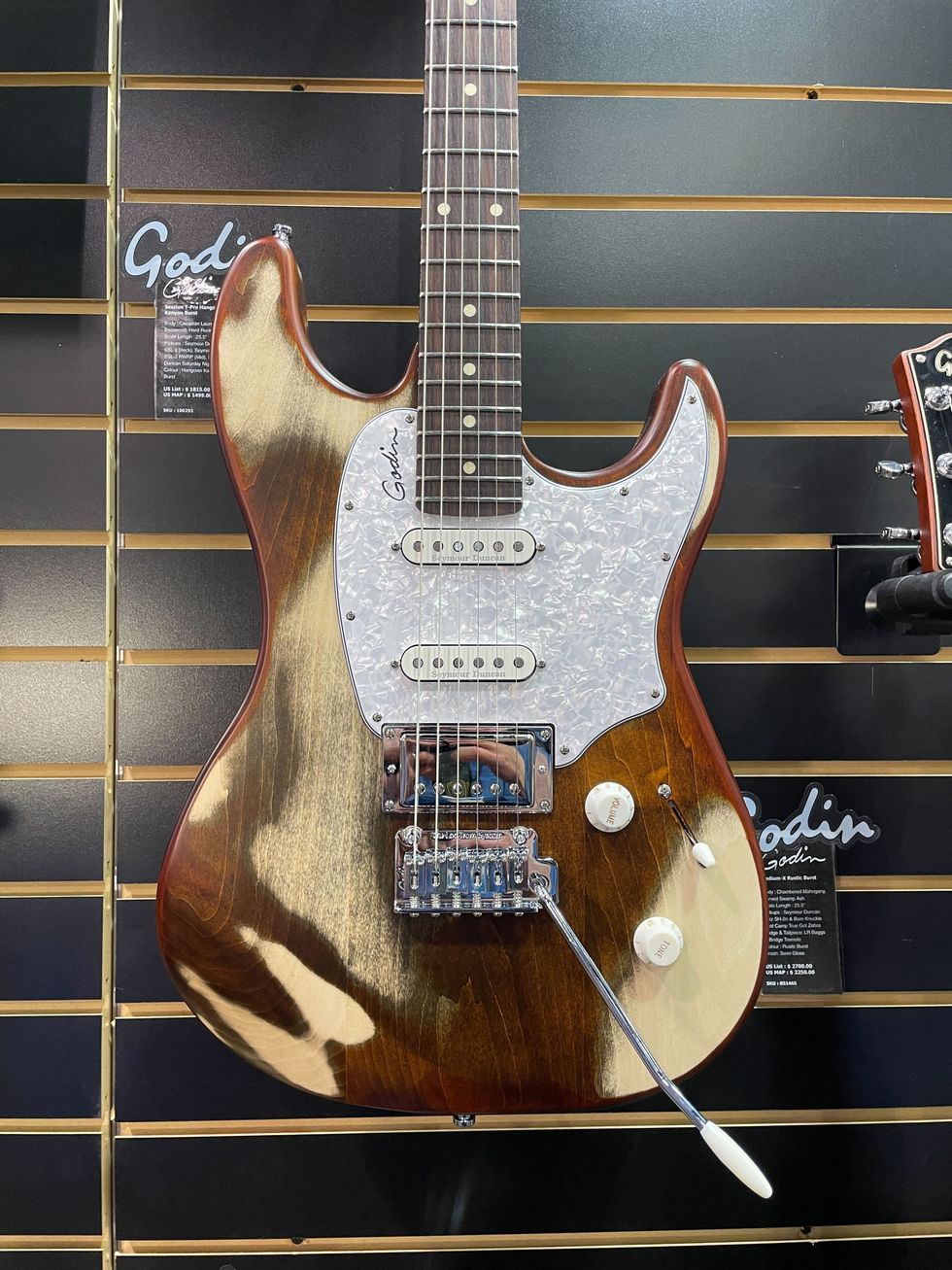
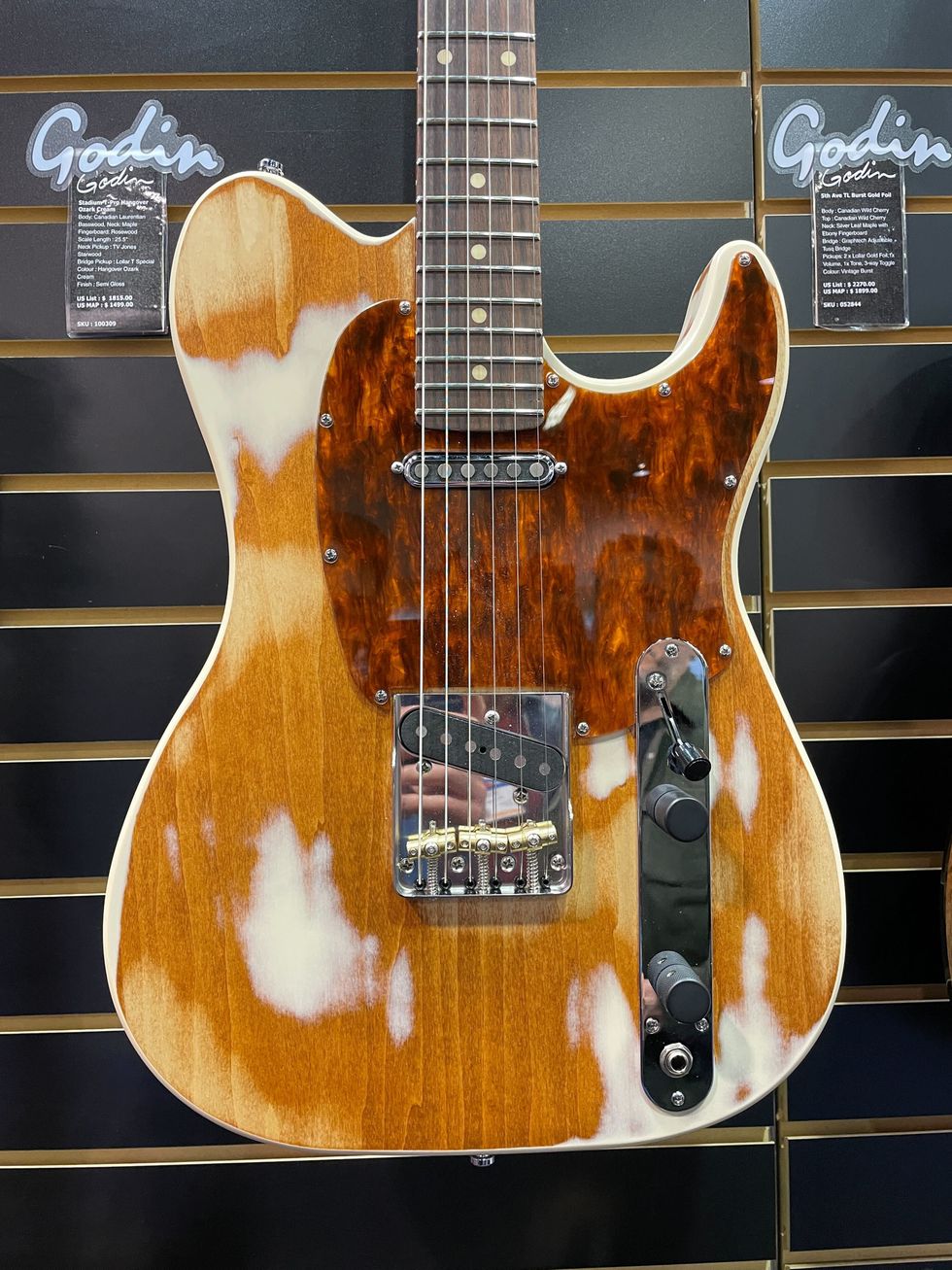
Friedman Amplification Plexi Vintage Series
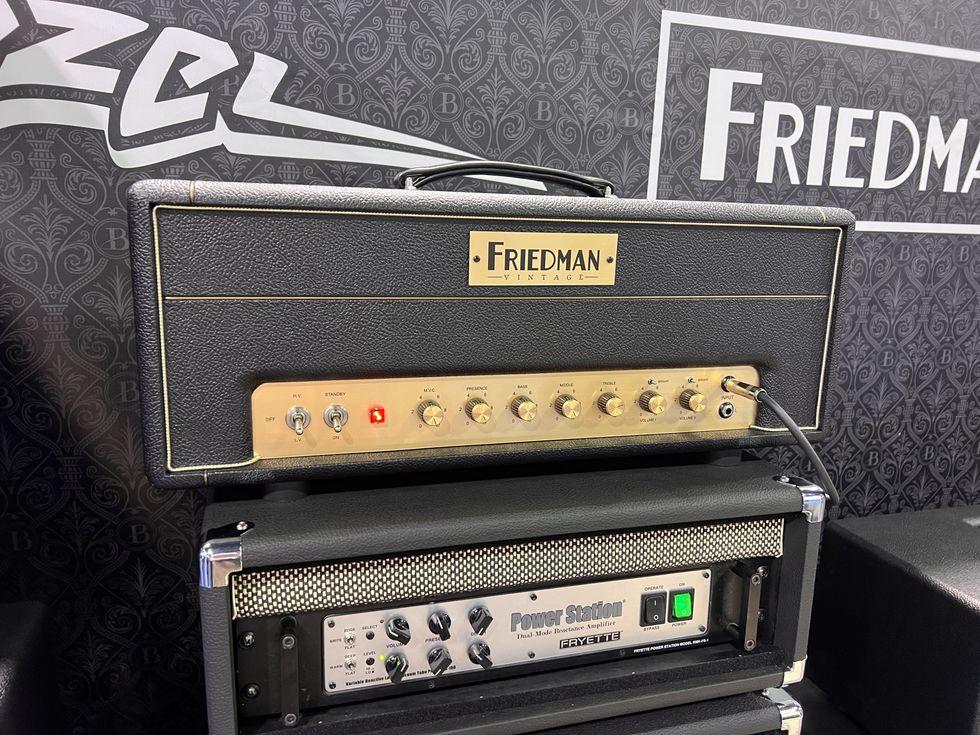
Not surprisingly, Dave Friedman created a vintage plexi-style amp that absolutely rips. It's based on an EL34 design, a familiar control setup, and plenty of juice.
Circle Strings Languedoc
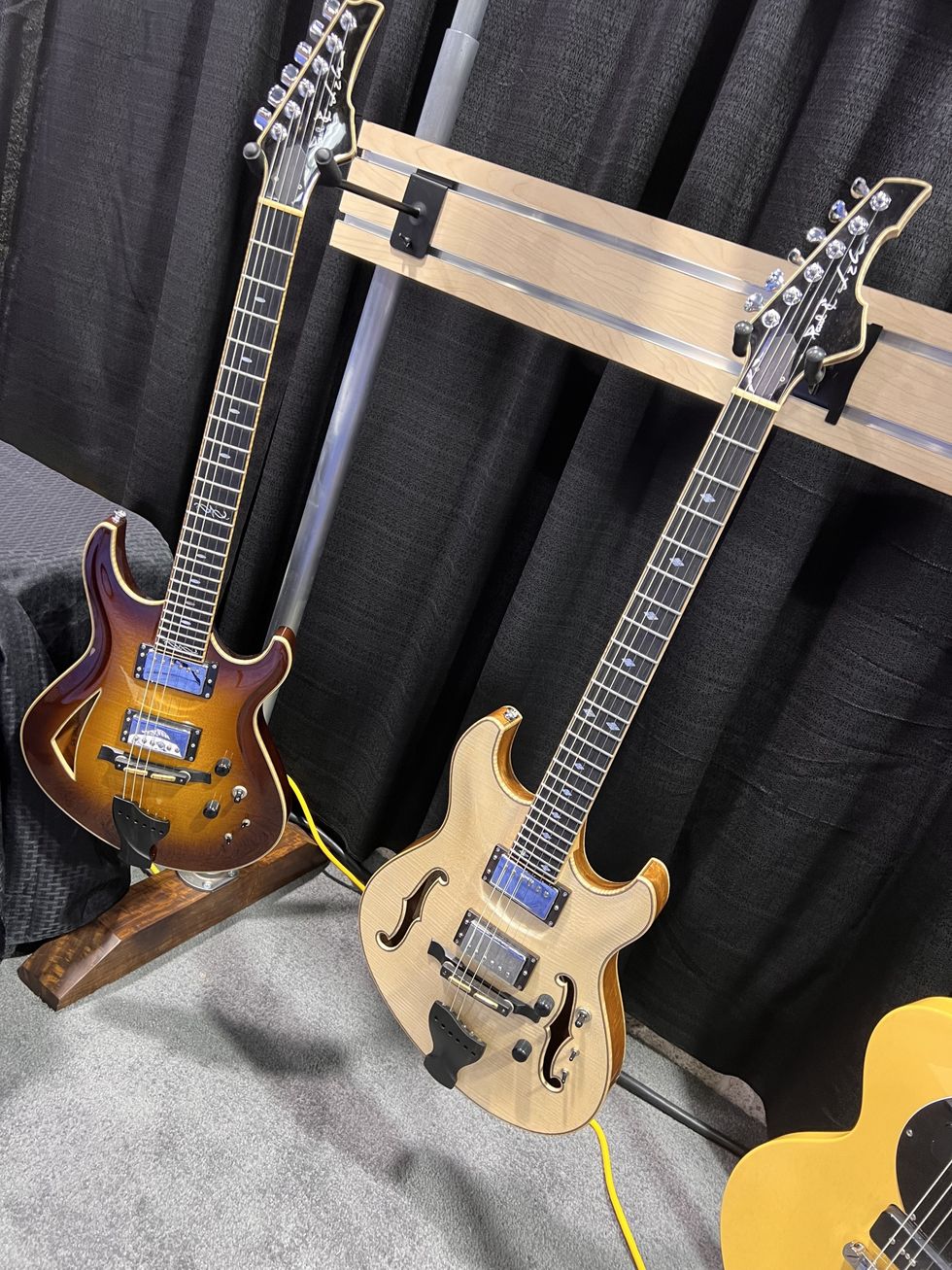
Adam Buchwald's burgeoning Vermont guitar empire will take on a new collaboration in 2024. Famed luthier Paul Languedoc has agreed to have Buchwald steward the production of the G2 and G4 models made famous by Phish's Trey Anastasio. Paul will still be making the G2 models while the G4 line will be created in Buchwald's shop (although some elements of the G4 will continue to be handmade by Paul). The G2s will be extremely limited and run north of $60k, but the G4s, when available, will be $16,000.
T-Rex Binson Echorec
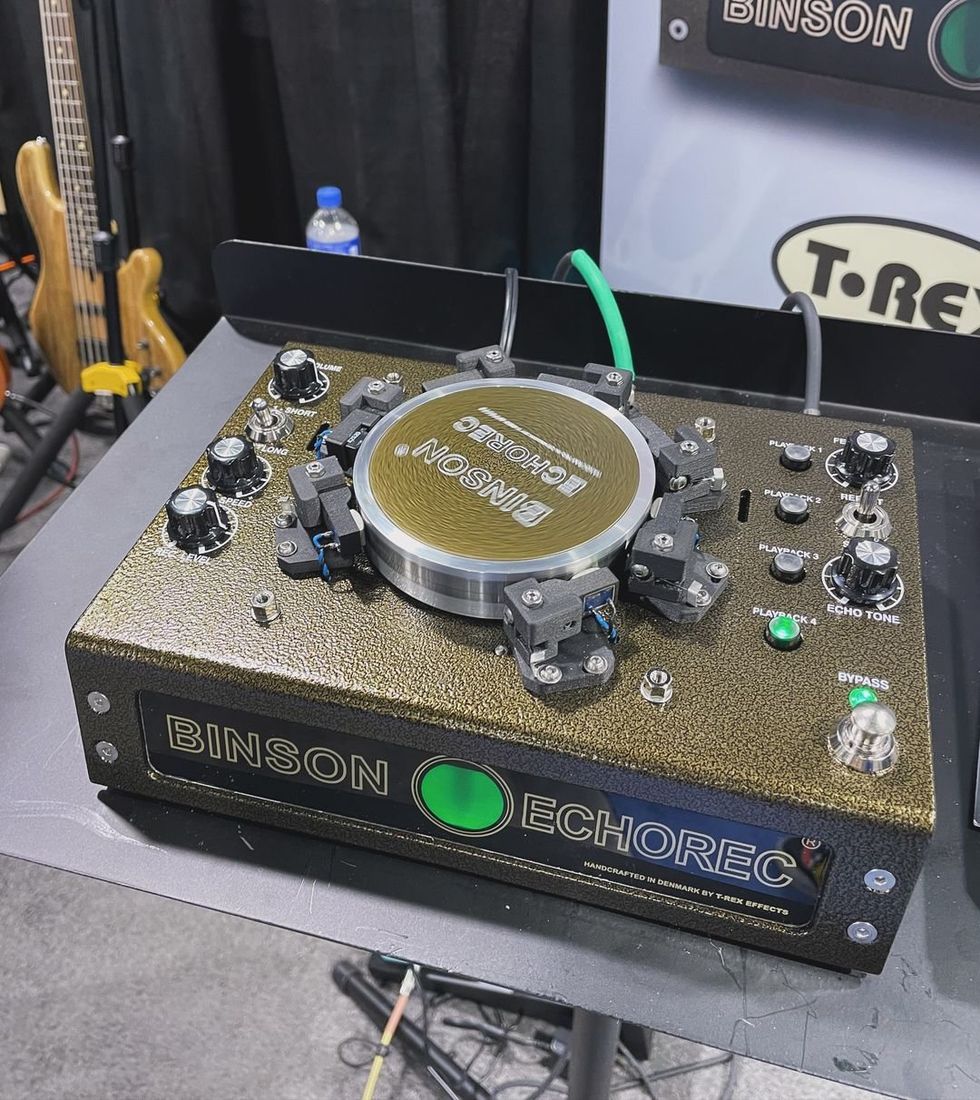
The Binson Echorec by T-Rex isn’t new this year, but it sure is cool. It sounds exactly like you think it should, and does all the tricks of the classic units.


